This is a really good way to train your eyes to spot reflections of waves: watch a single wave train hit a sea wall:
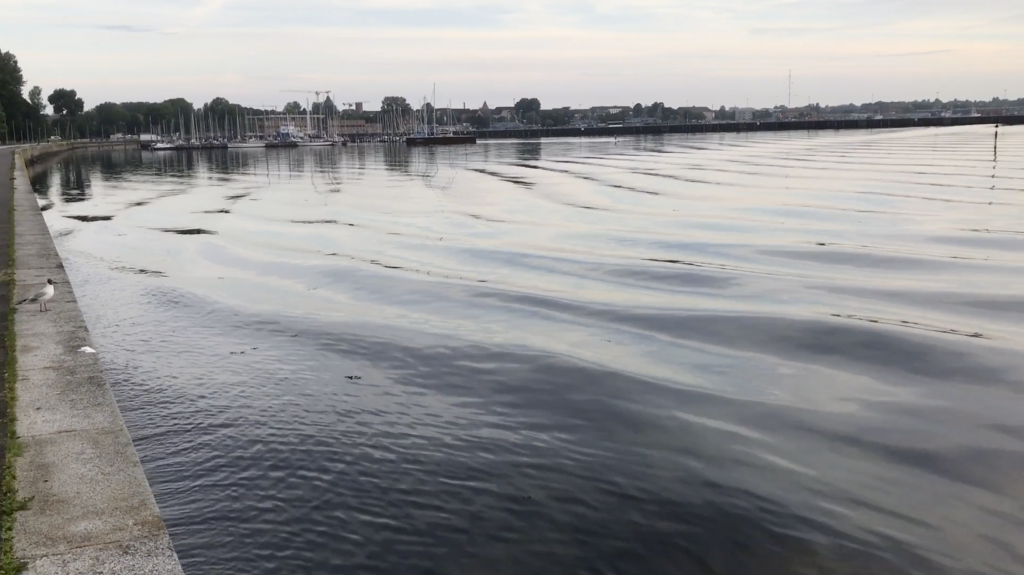
Please don’t get sea sick when — about halfway through — I’m moving the camera around :-)
This is a really good way to train your eyes to spot reflections of waves: watch a single wave train hit a sea wall:

Please don’t get sea sick when — about halfway through — I’m moving the camera around :-)
My plant in my office plays with me! :-)
I know I wrote about it last time I sailed to Gothenburg, too, but empty ships look weird!
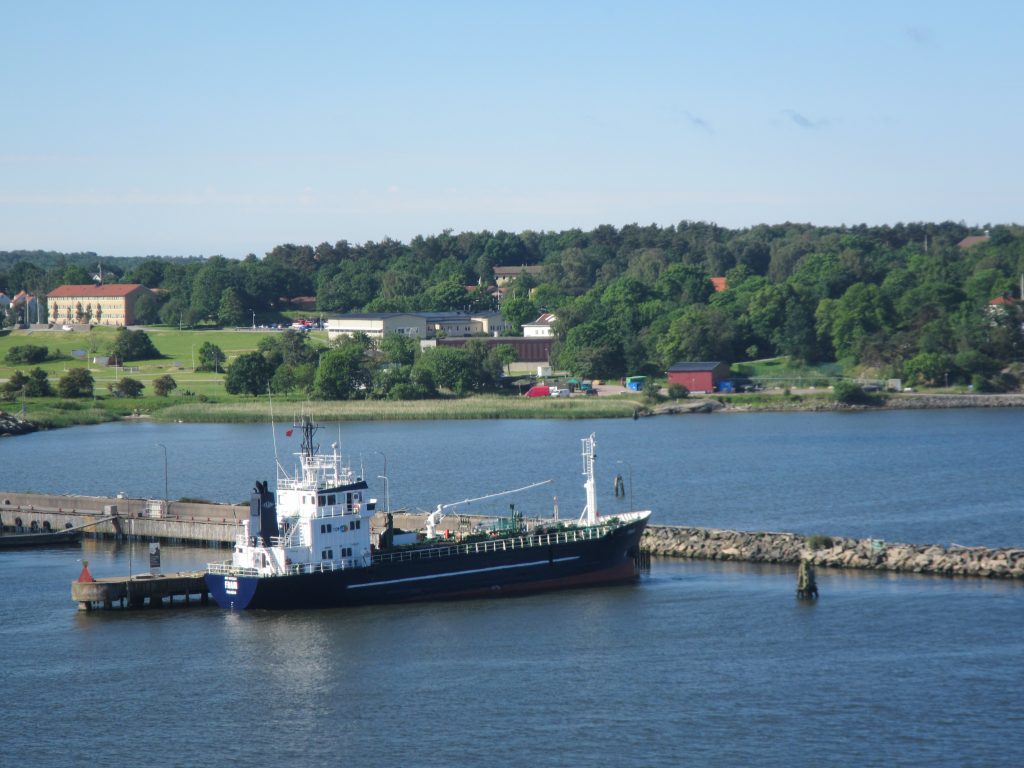
But watching ships and ports is always so much fun :-)
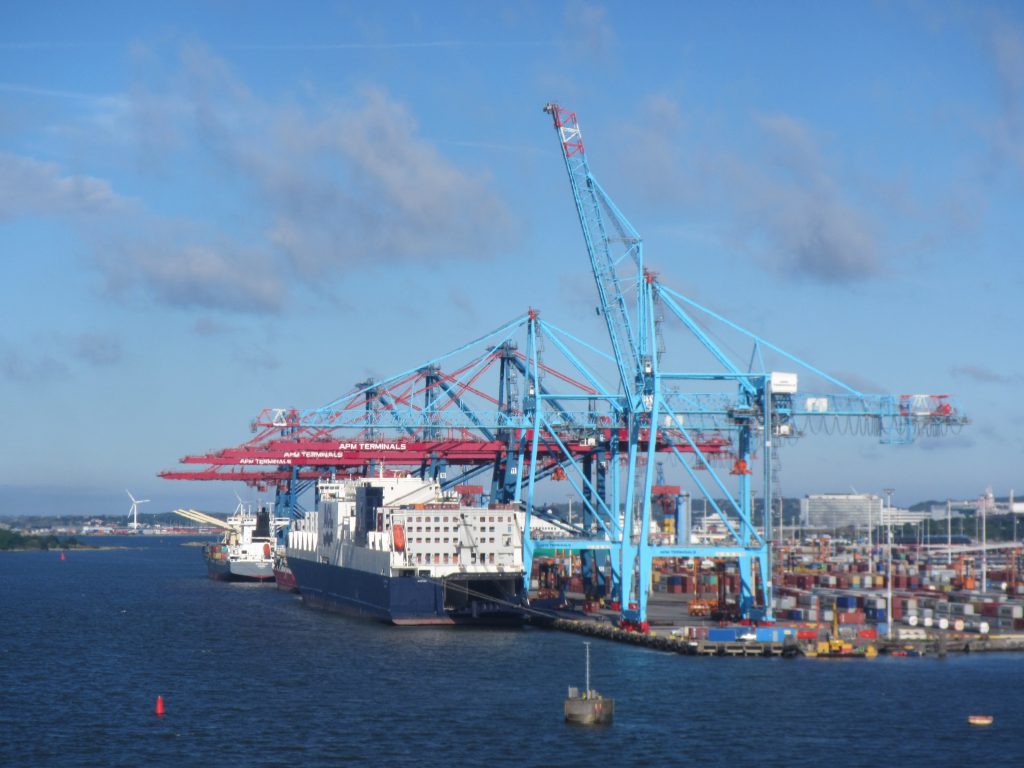
I’m in this weird phase right now: In landscape pictures that I take, I like more than 2/3rds of the total area to be of water. That I like water shouldn’t really come as a surprise to anyone, but this perspective — looking from right above the water level towards the horizon — is new to me and I am totally into it. Maybe because I’m swimming almost every morning these days?
Anyway, here is a bunch of pictures taken in Ratzeburg recently when I helped out in their sailing school (ratzeburger-segelschule.de — totally recommended! Clearly awesome instructors there ;-))
And obviously the first one of the bunch had to deviate from my 2/3rds-water rule…
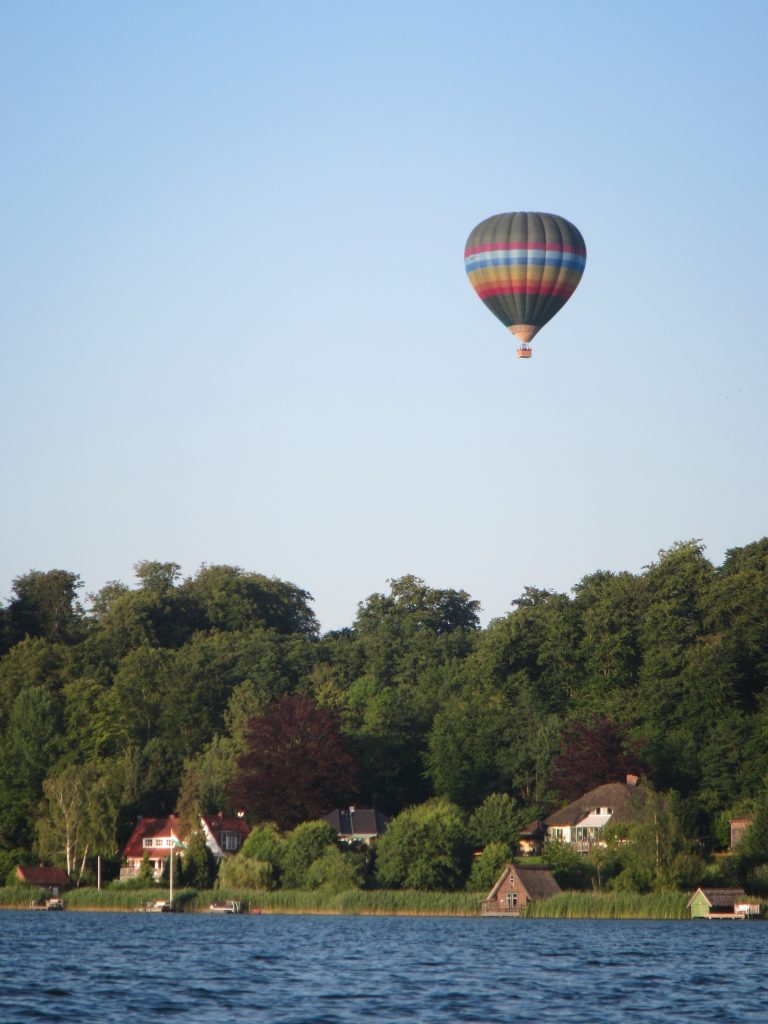
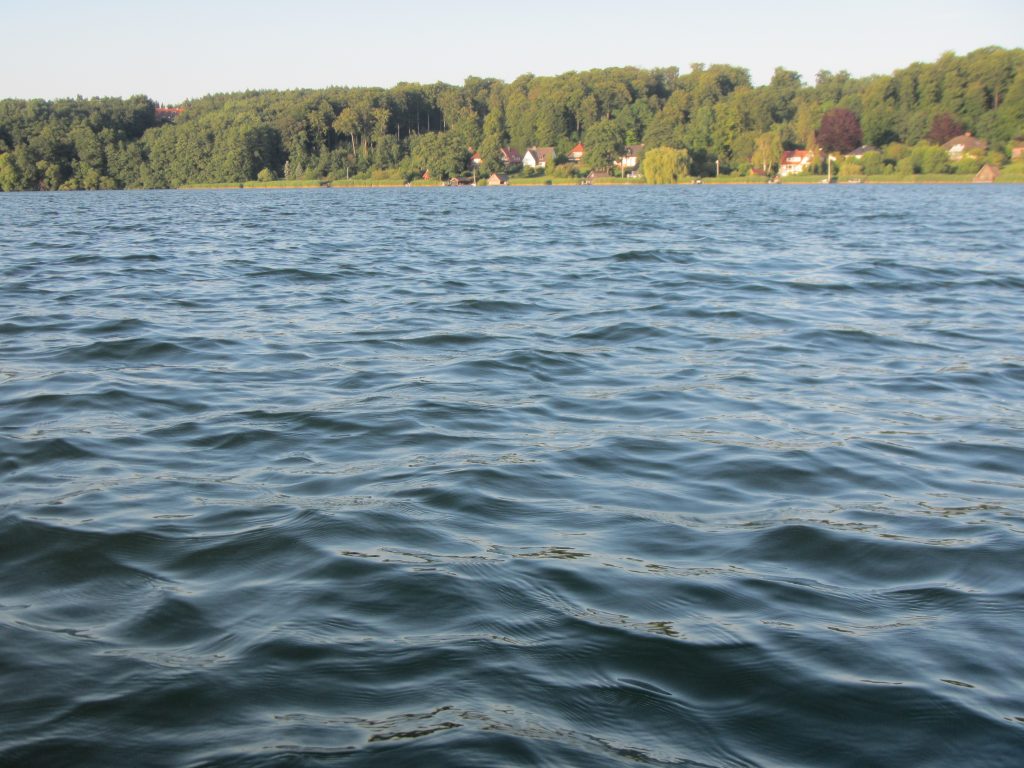
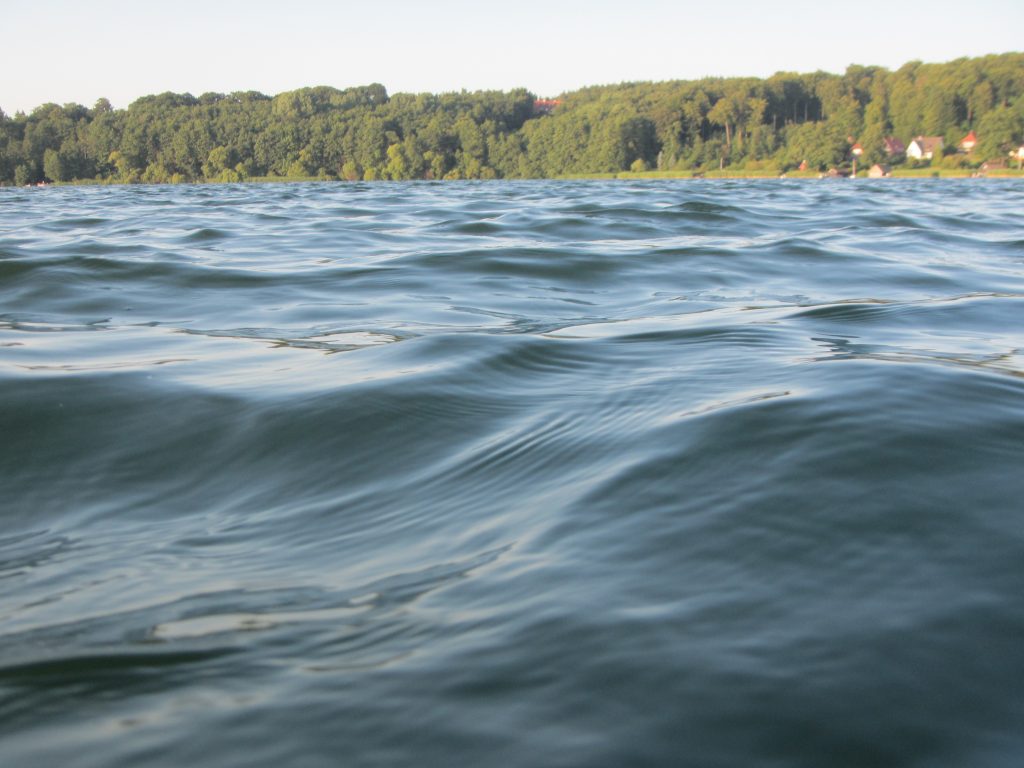
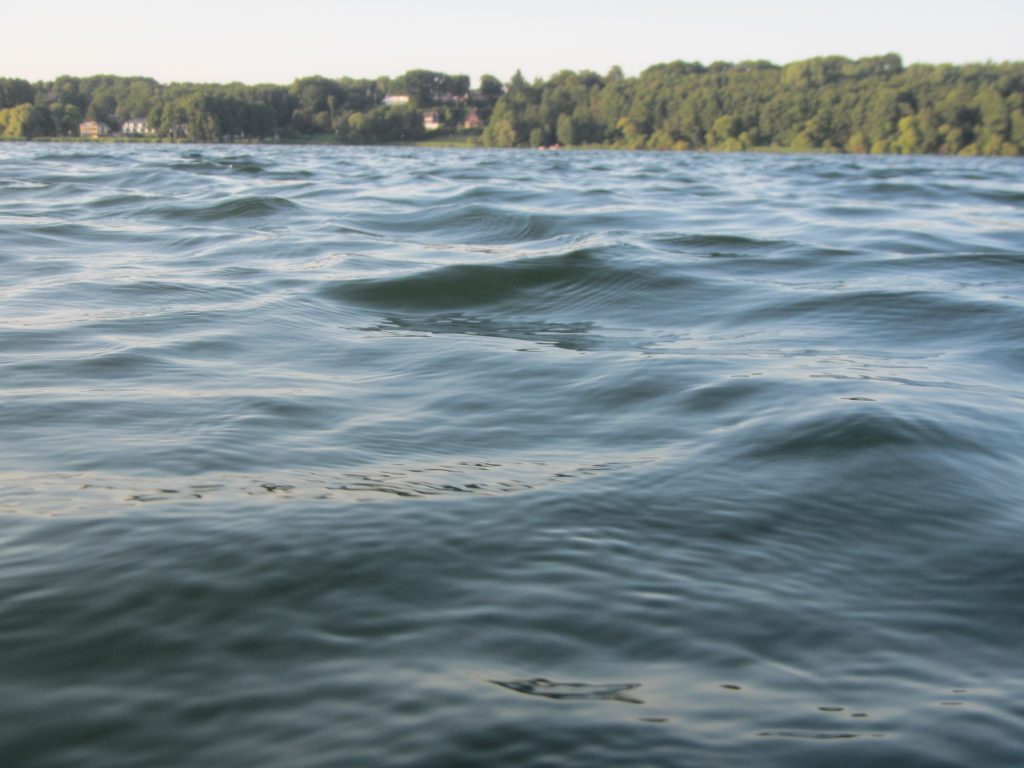
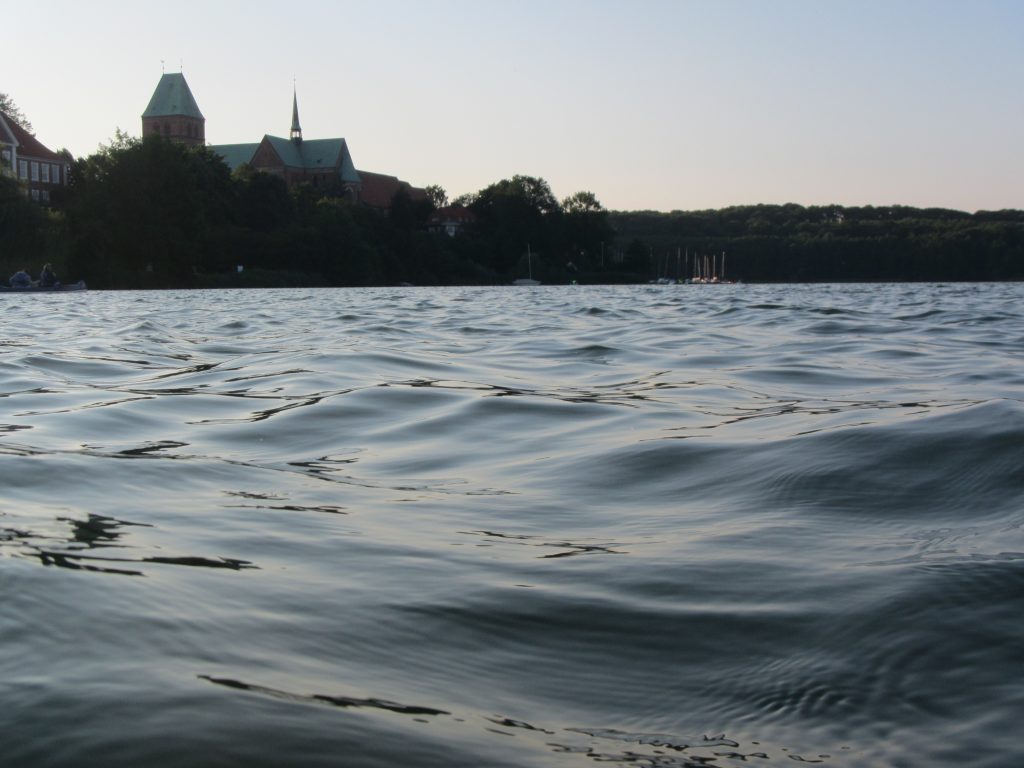
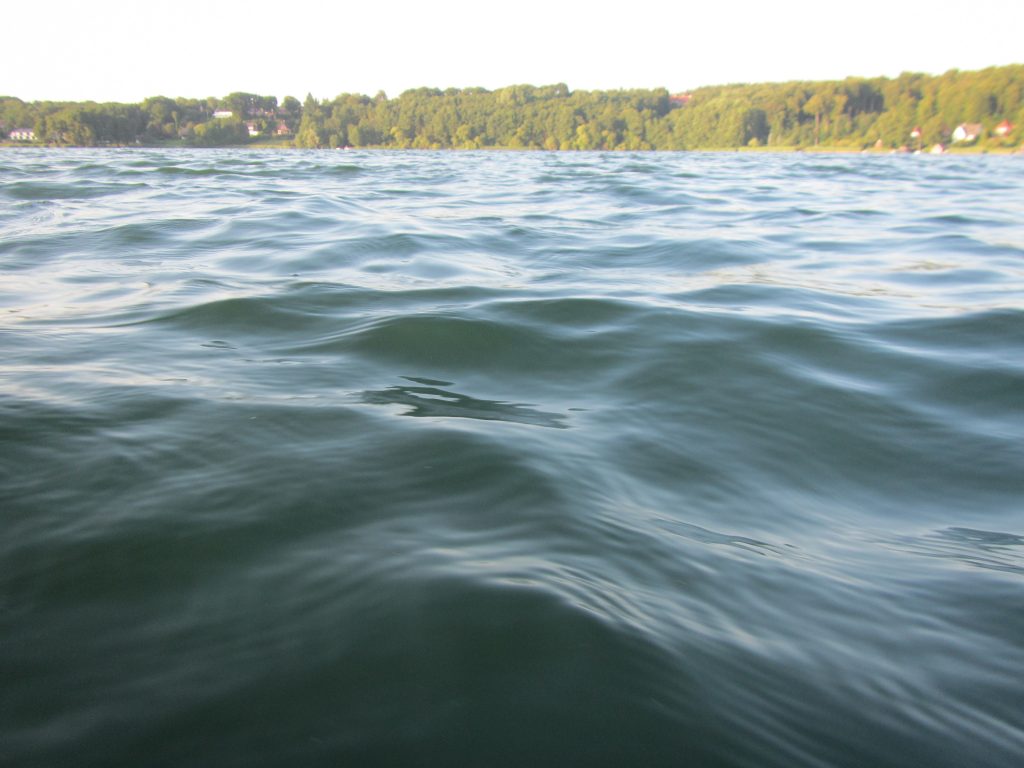
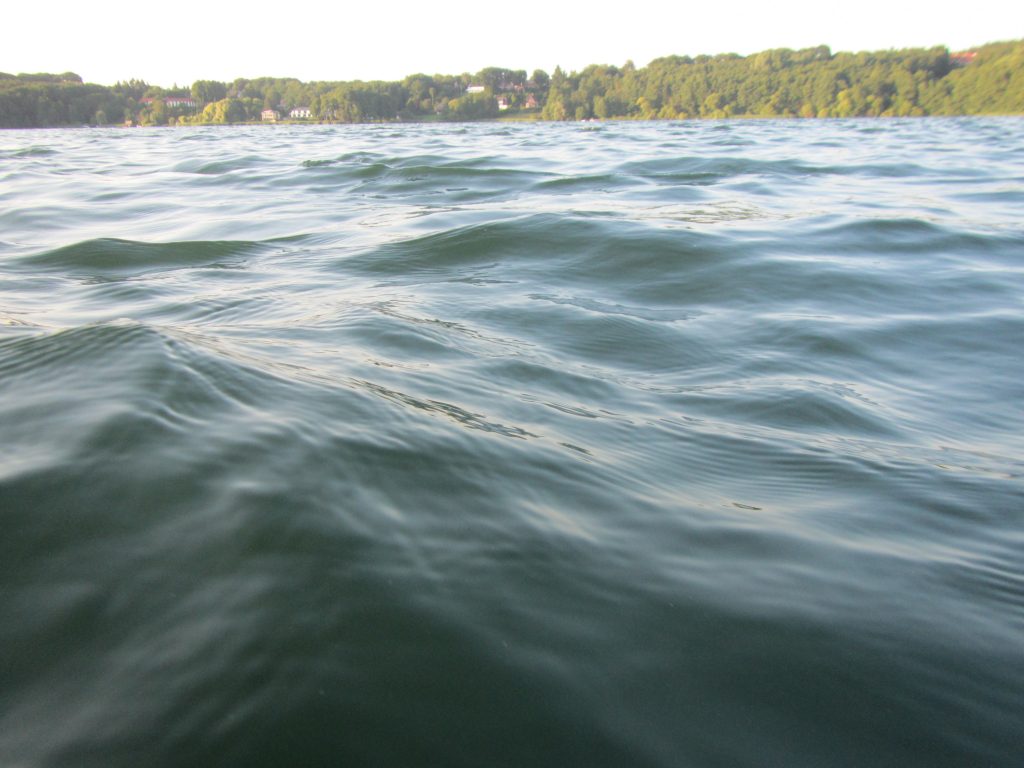
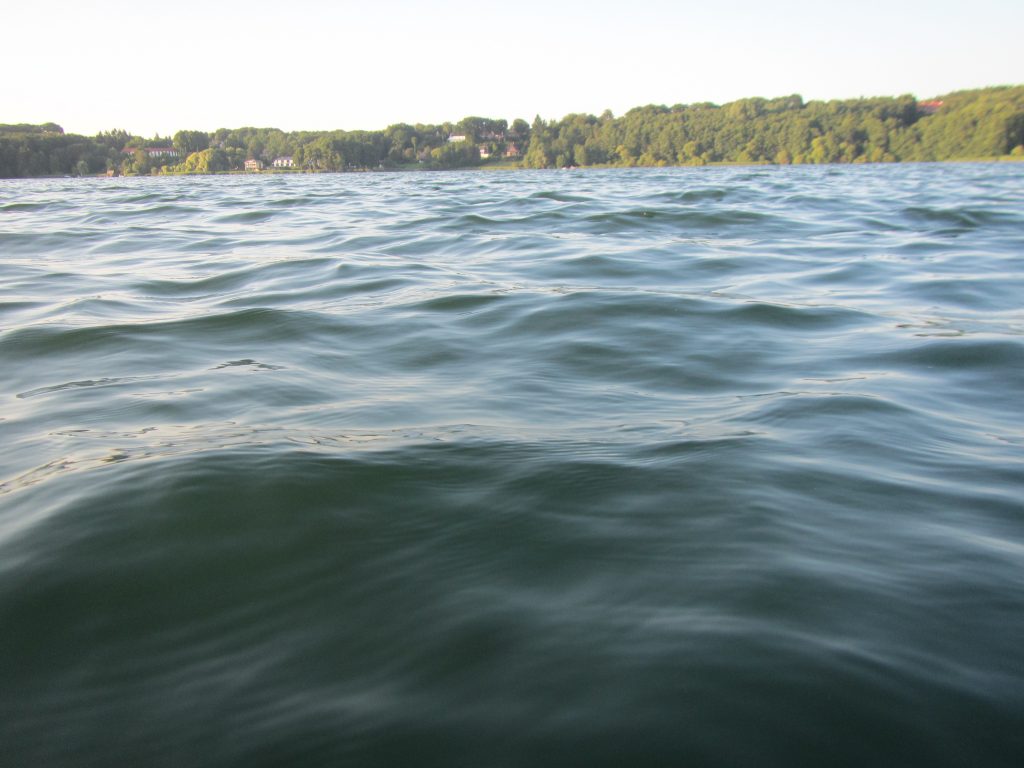
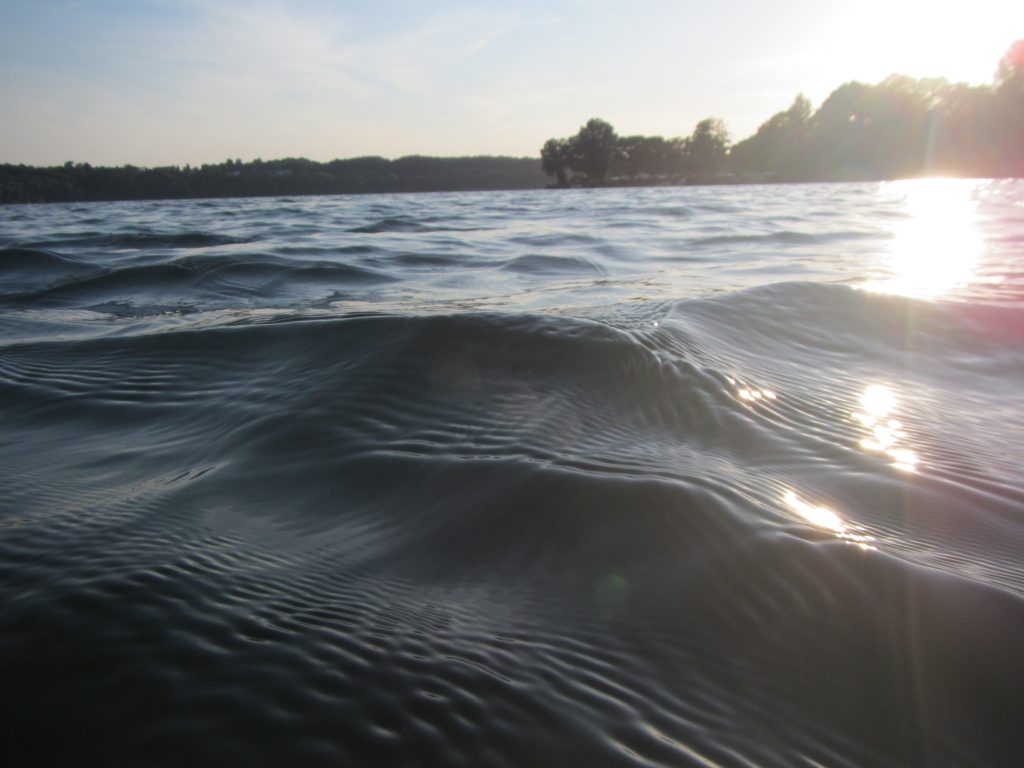
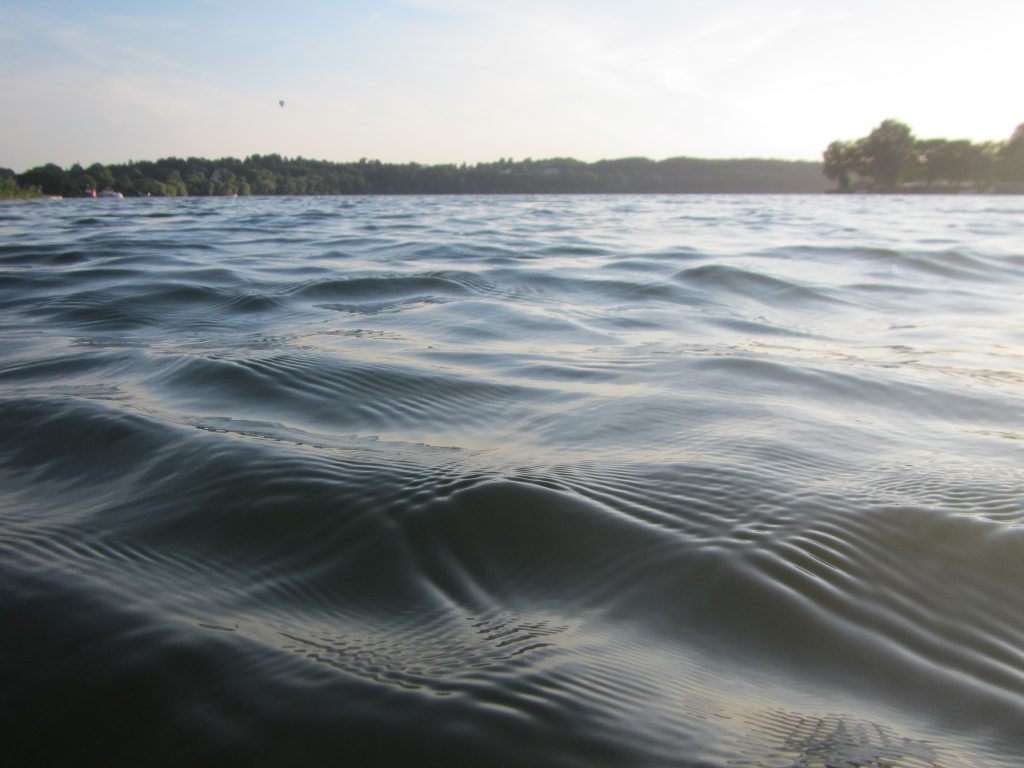
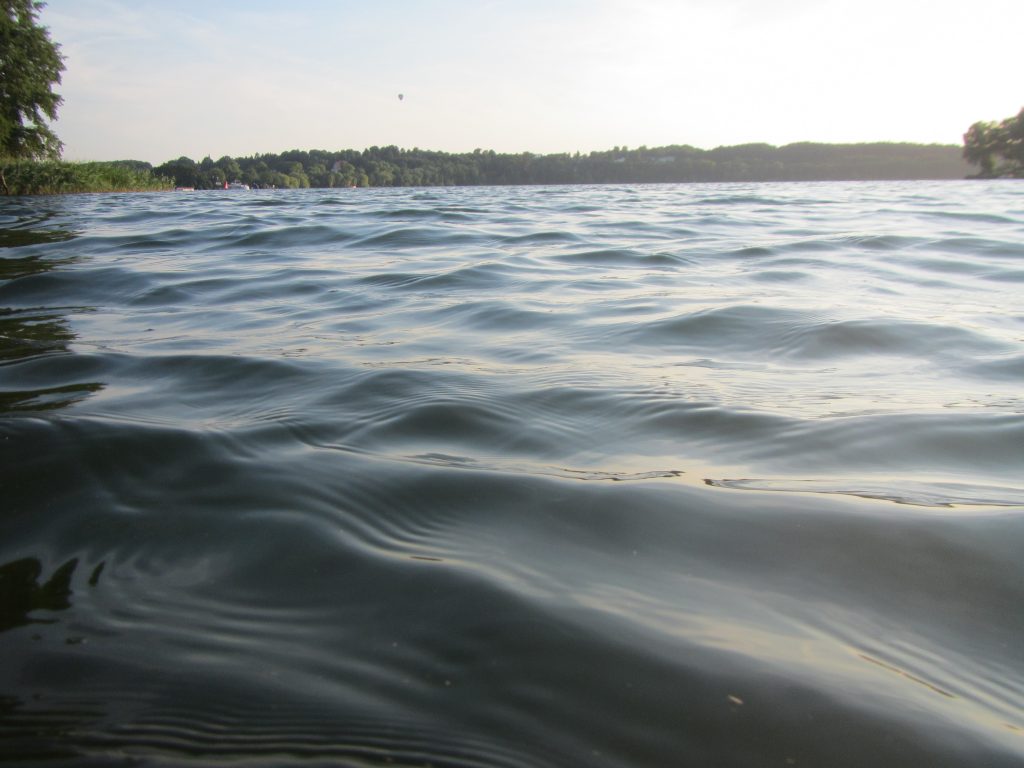
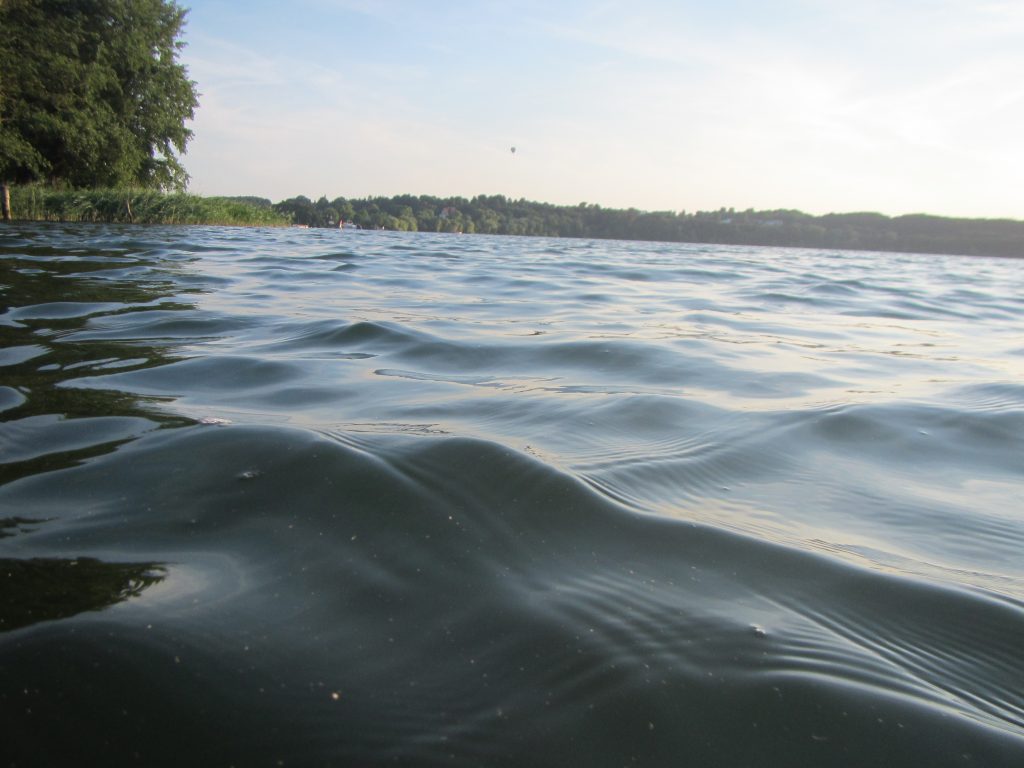
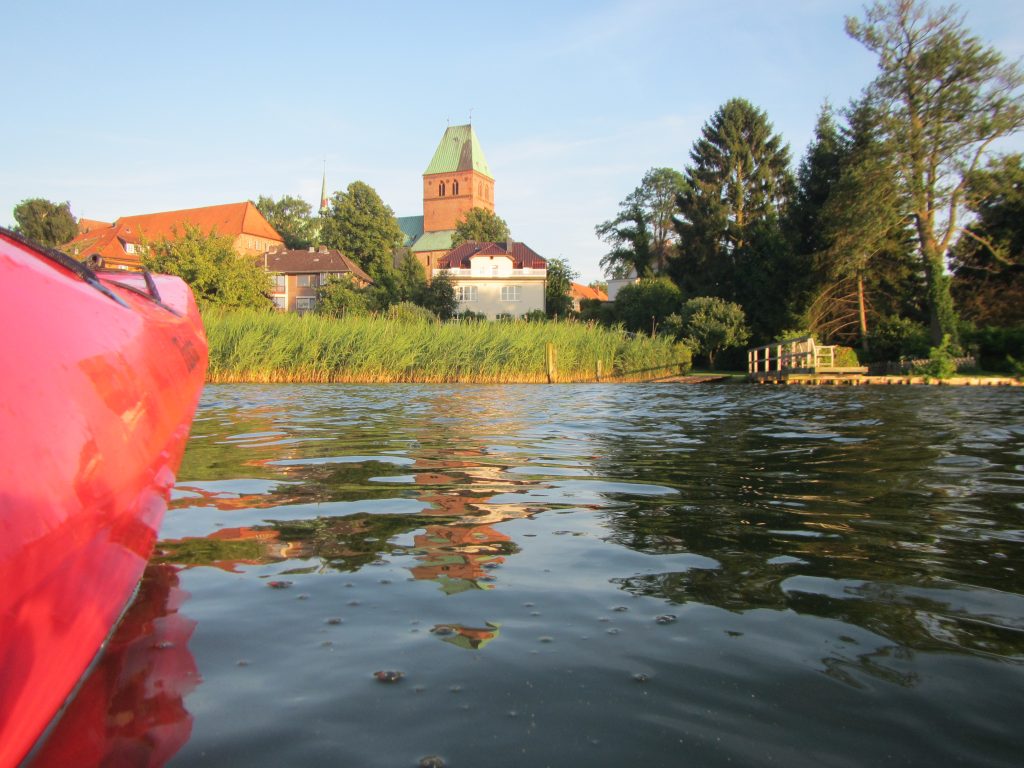
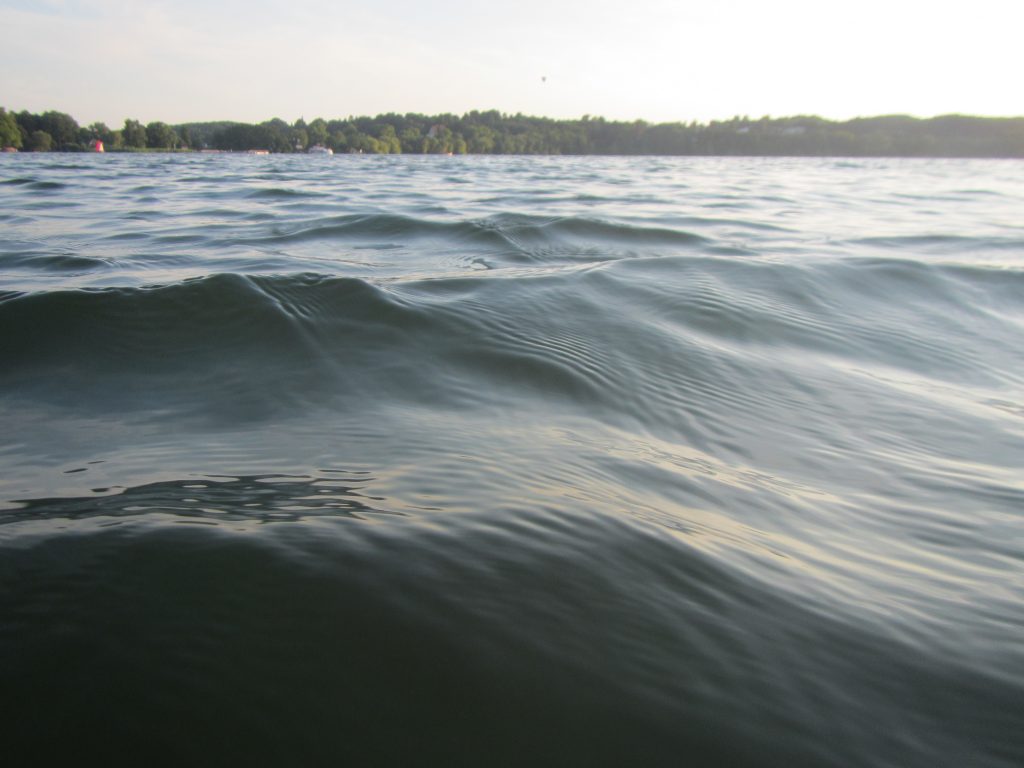
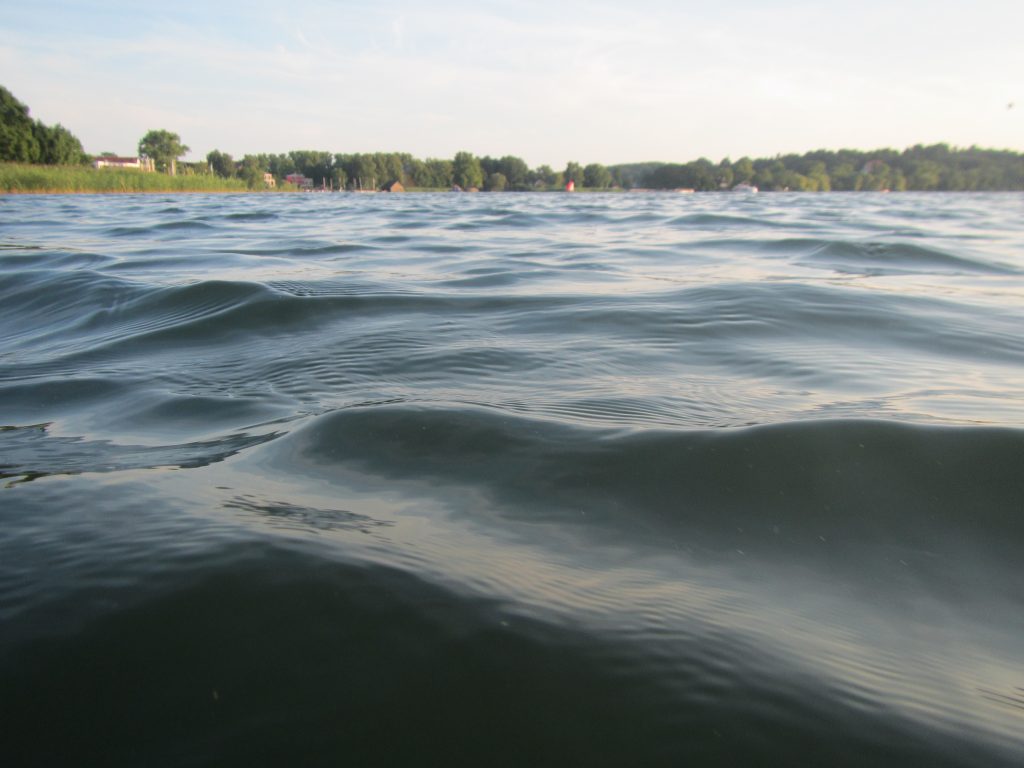
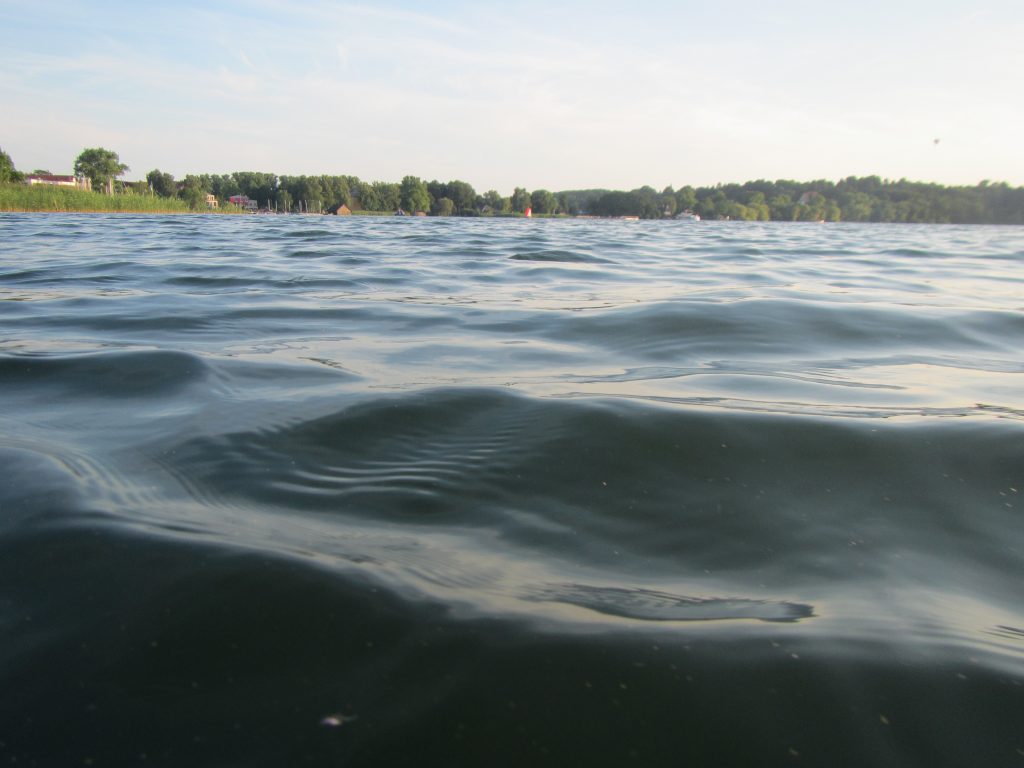
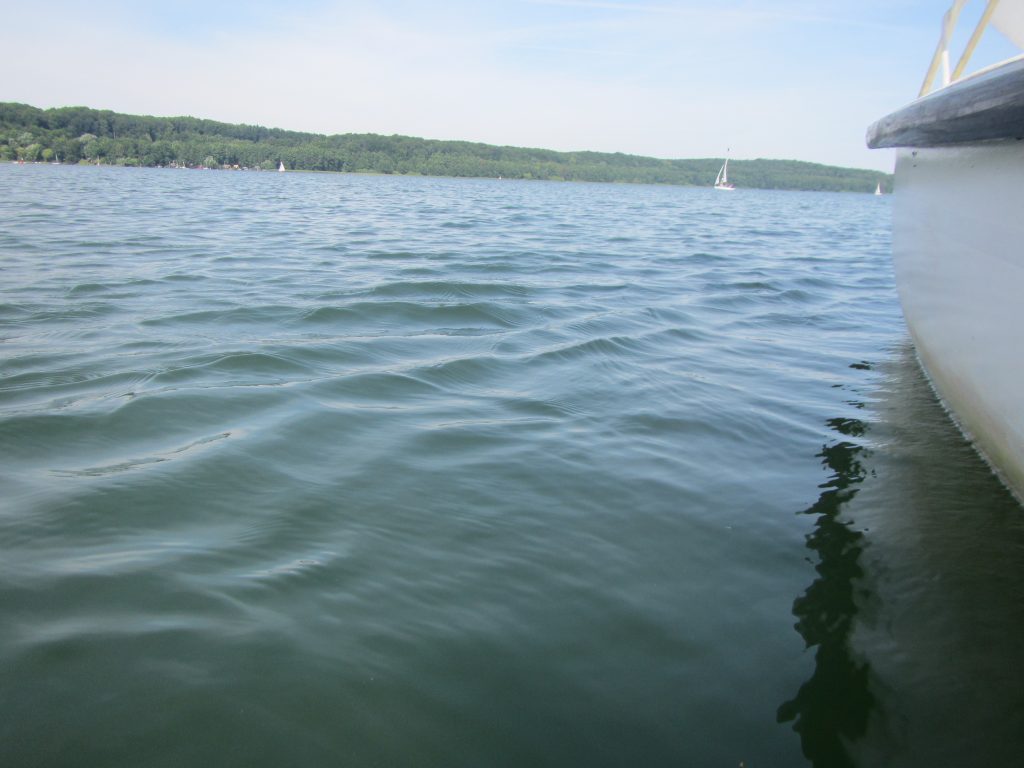
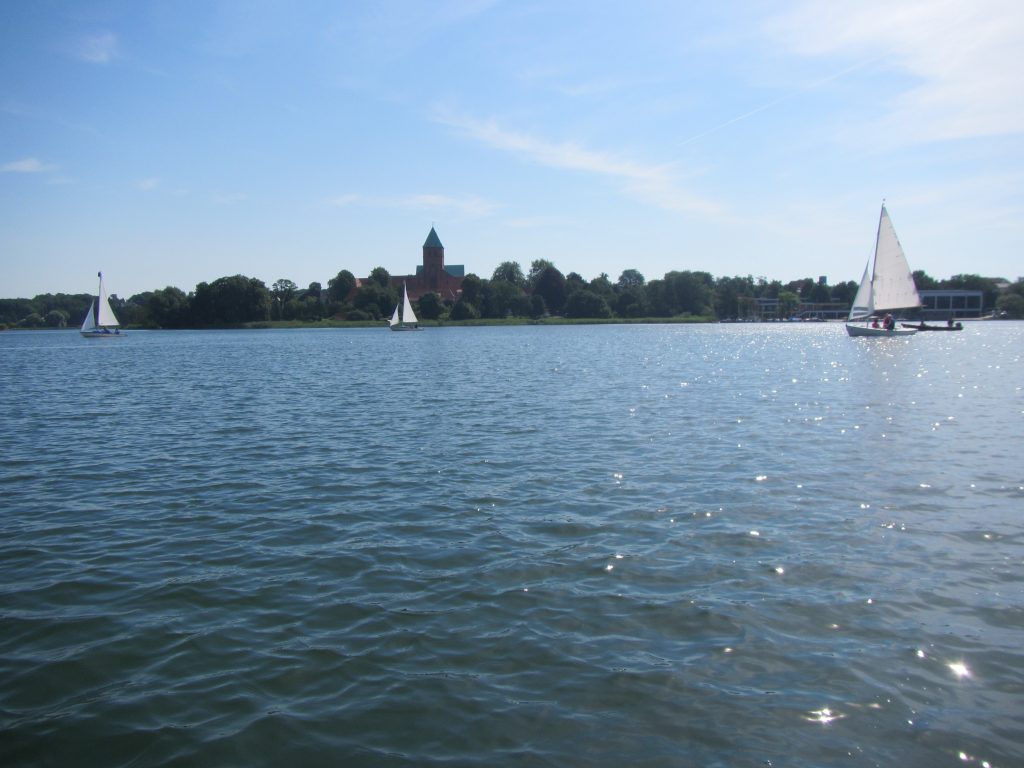
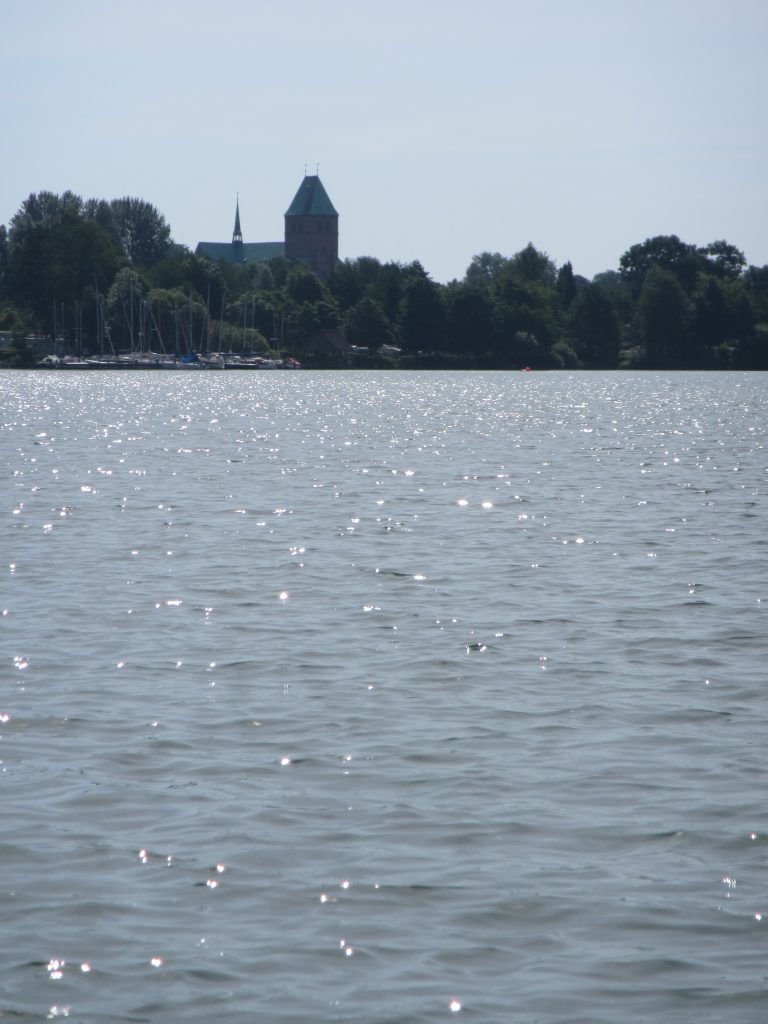
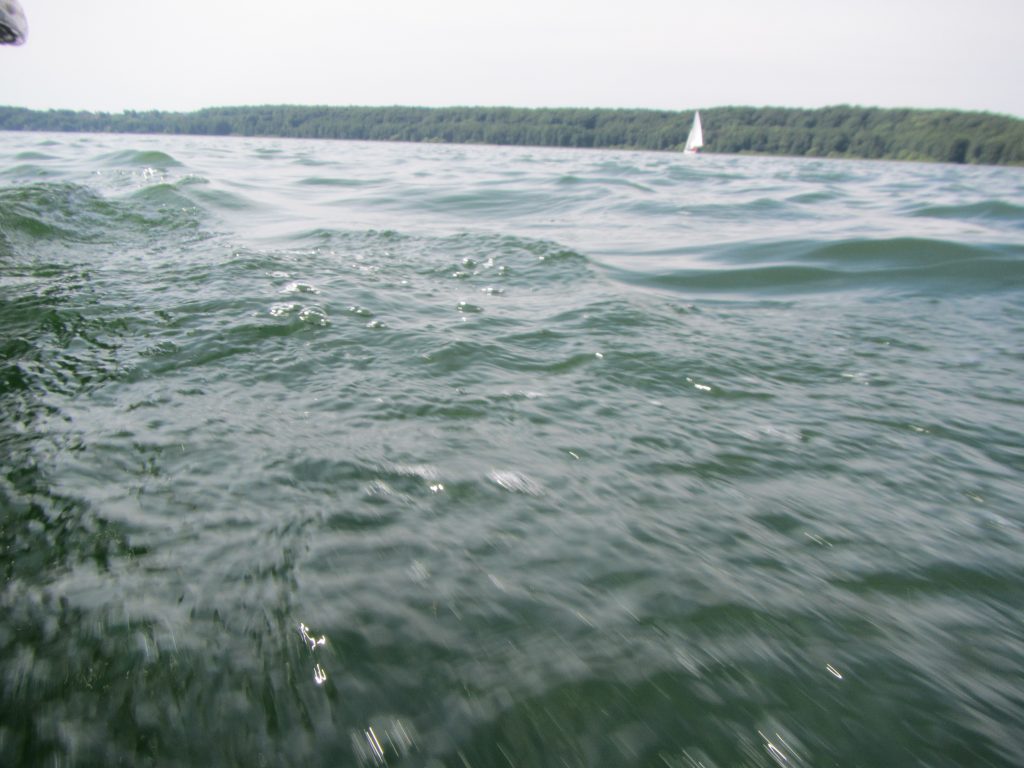
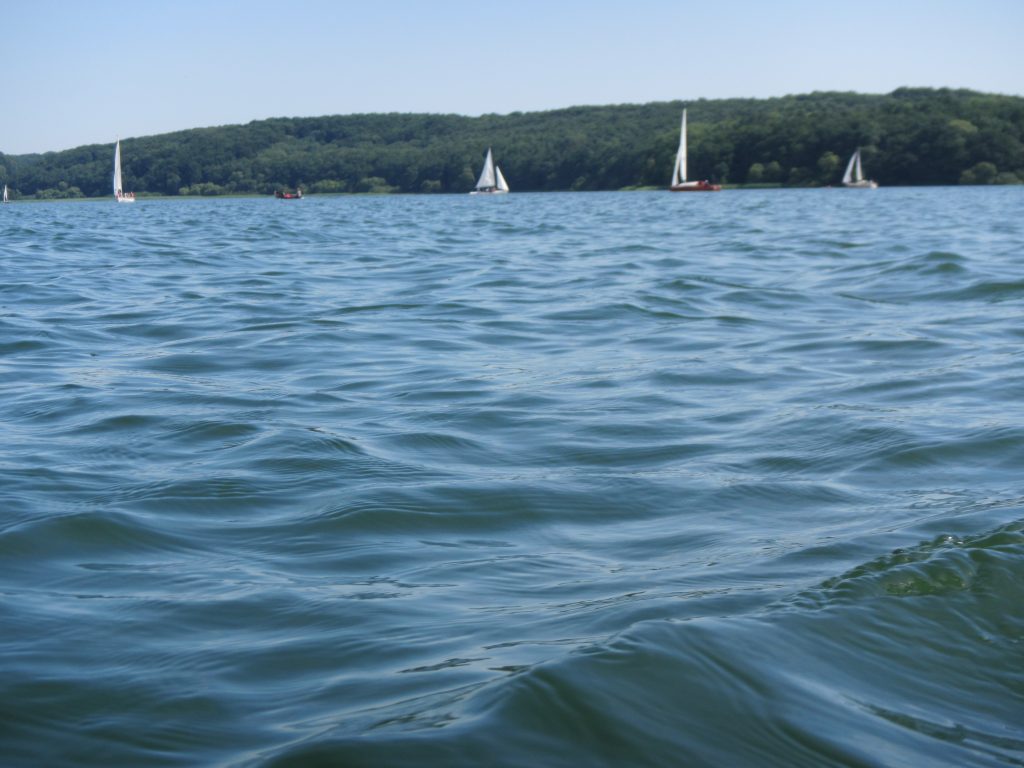

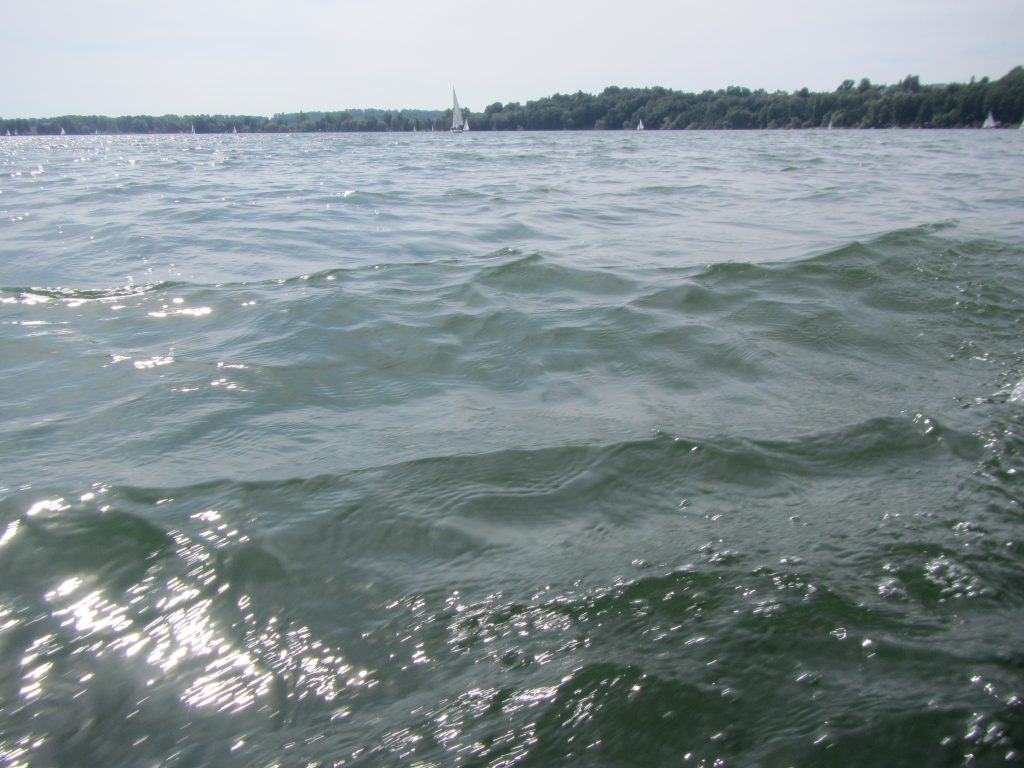
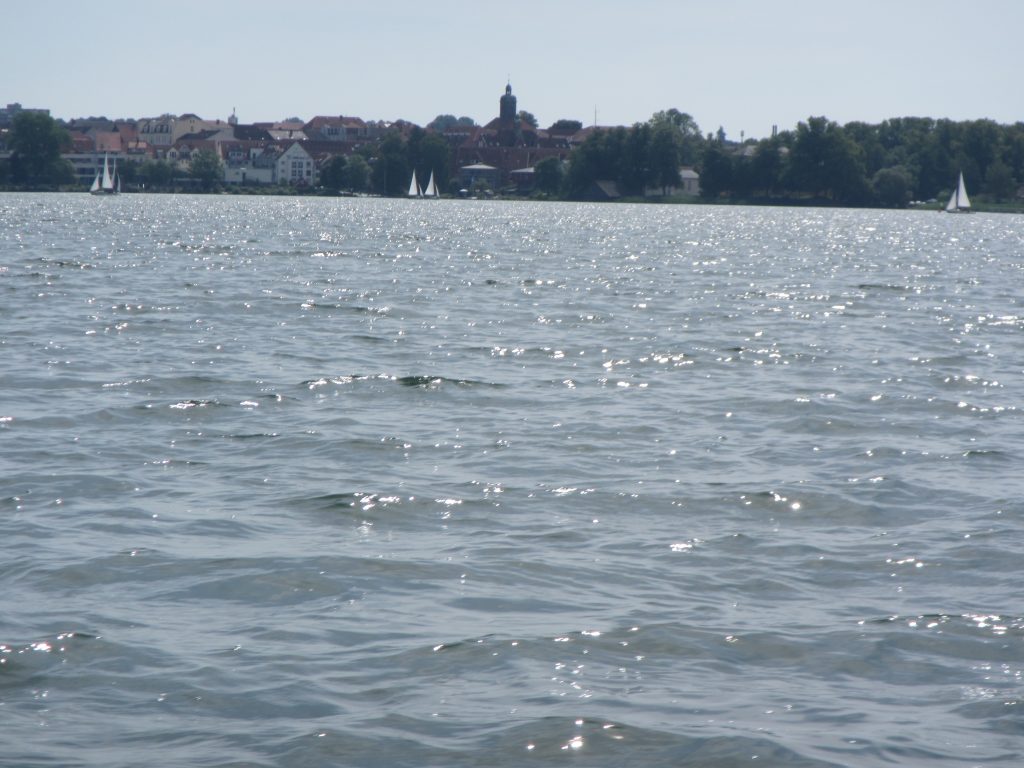
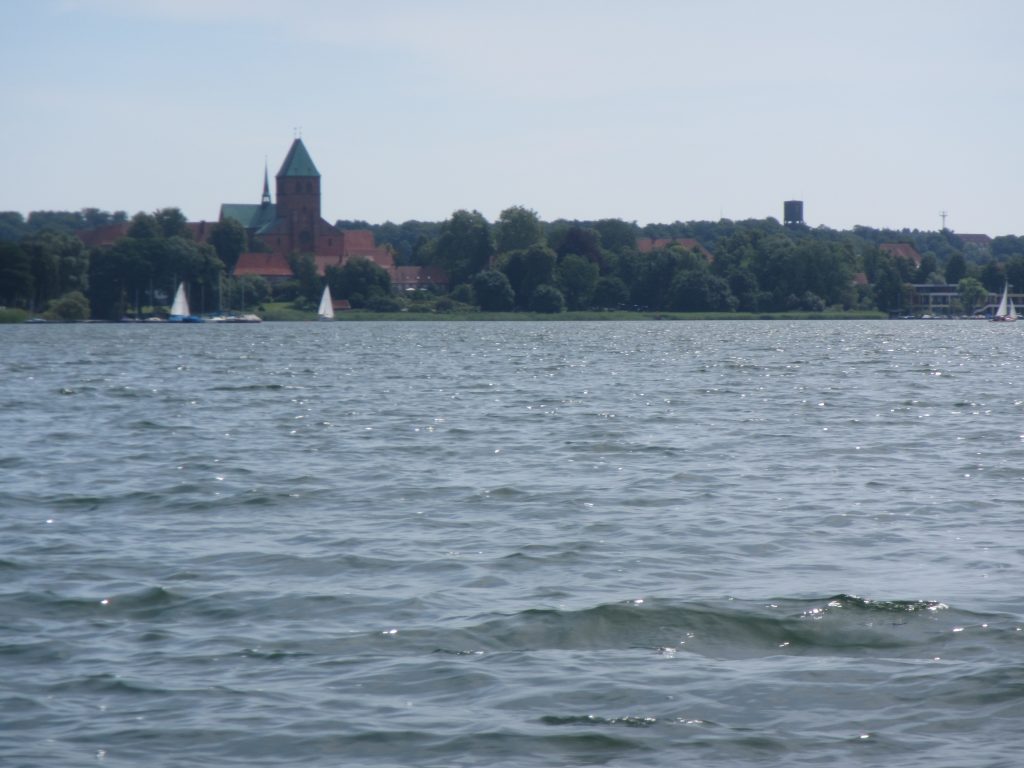
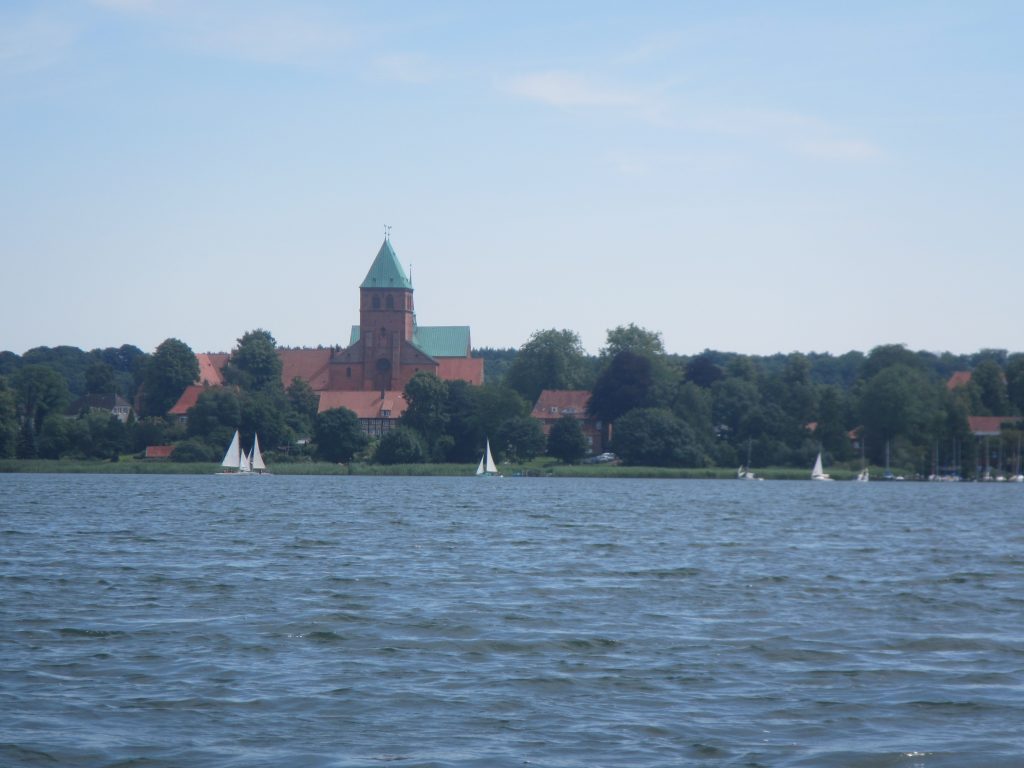
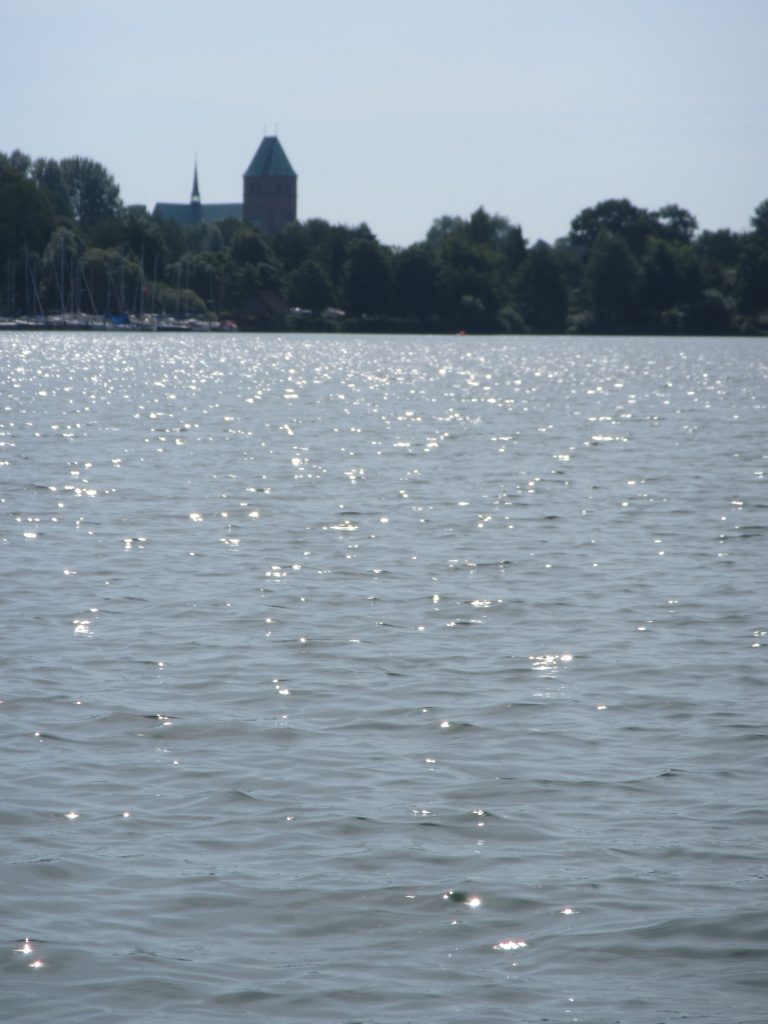
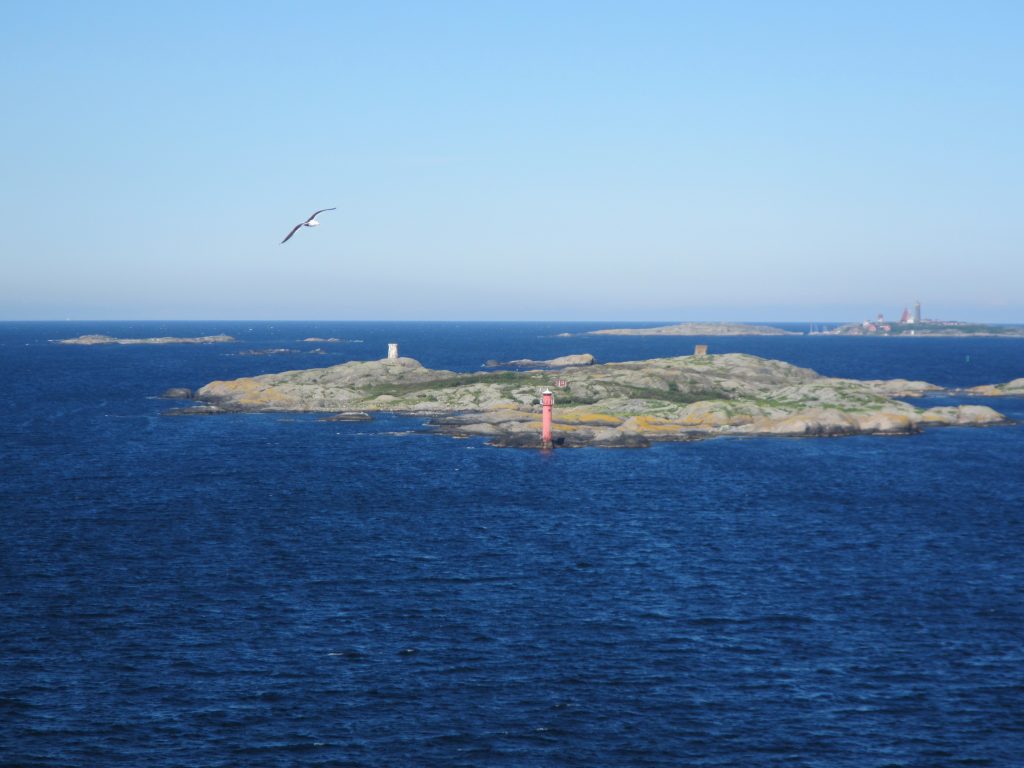
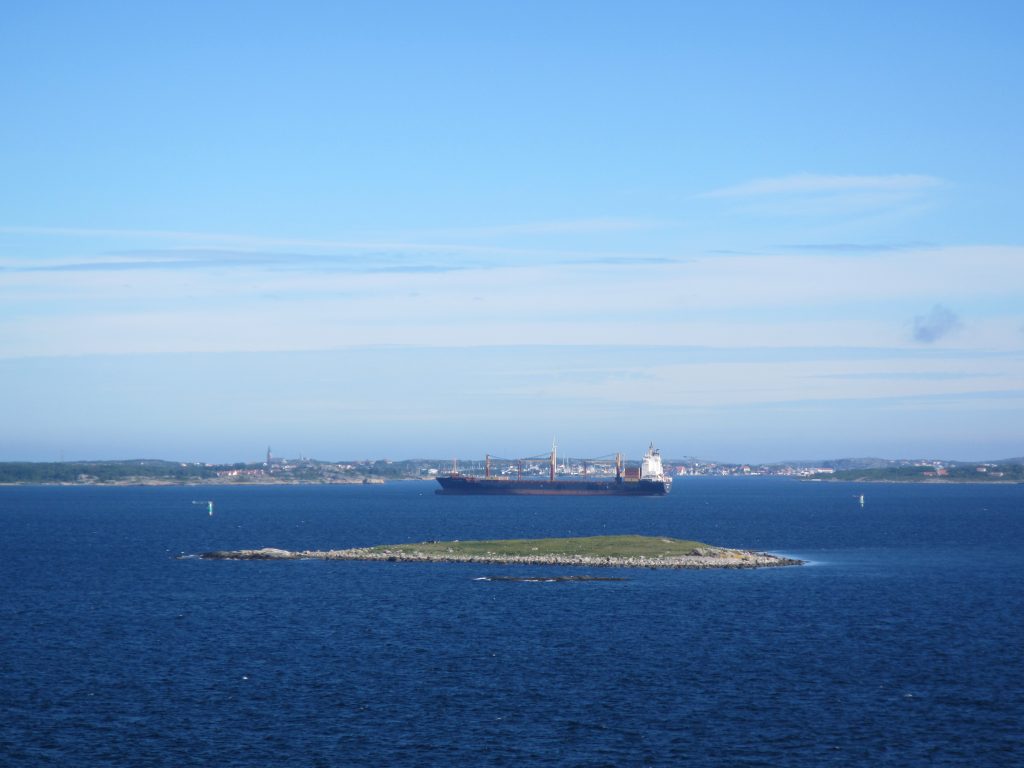
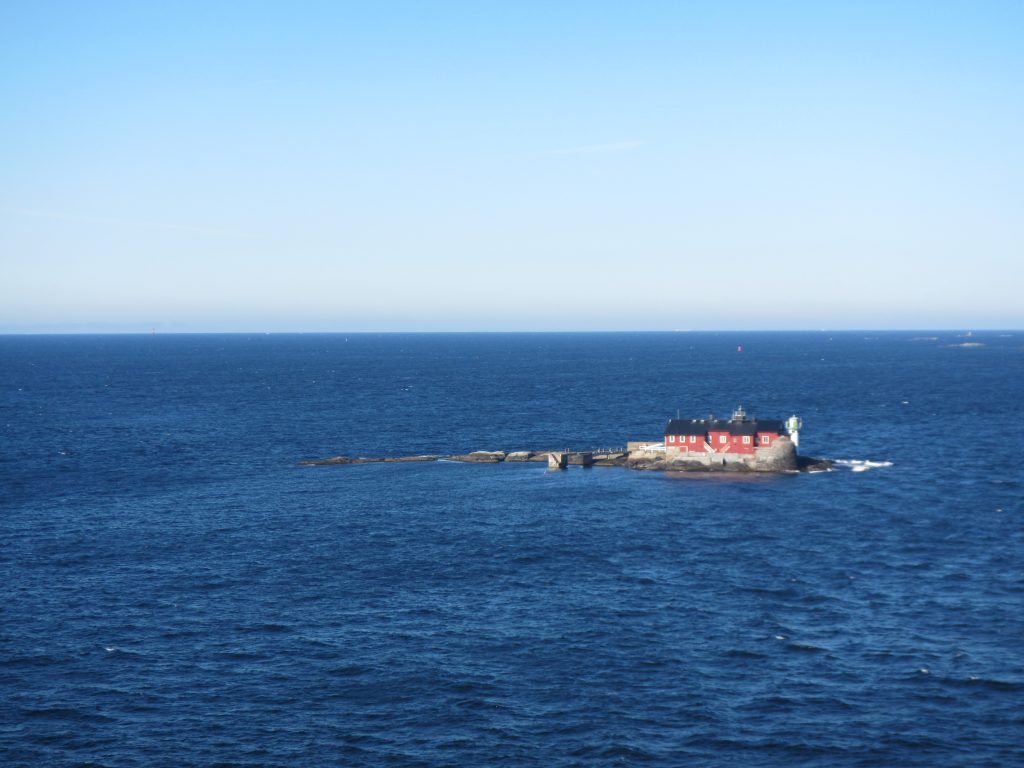
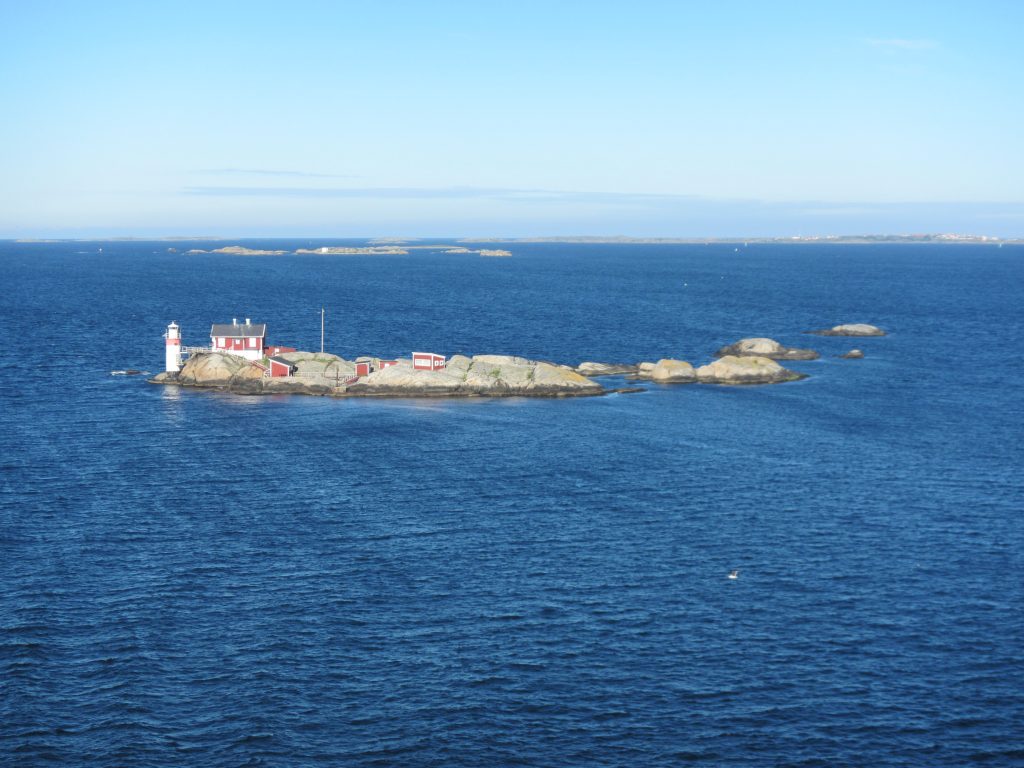
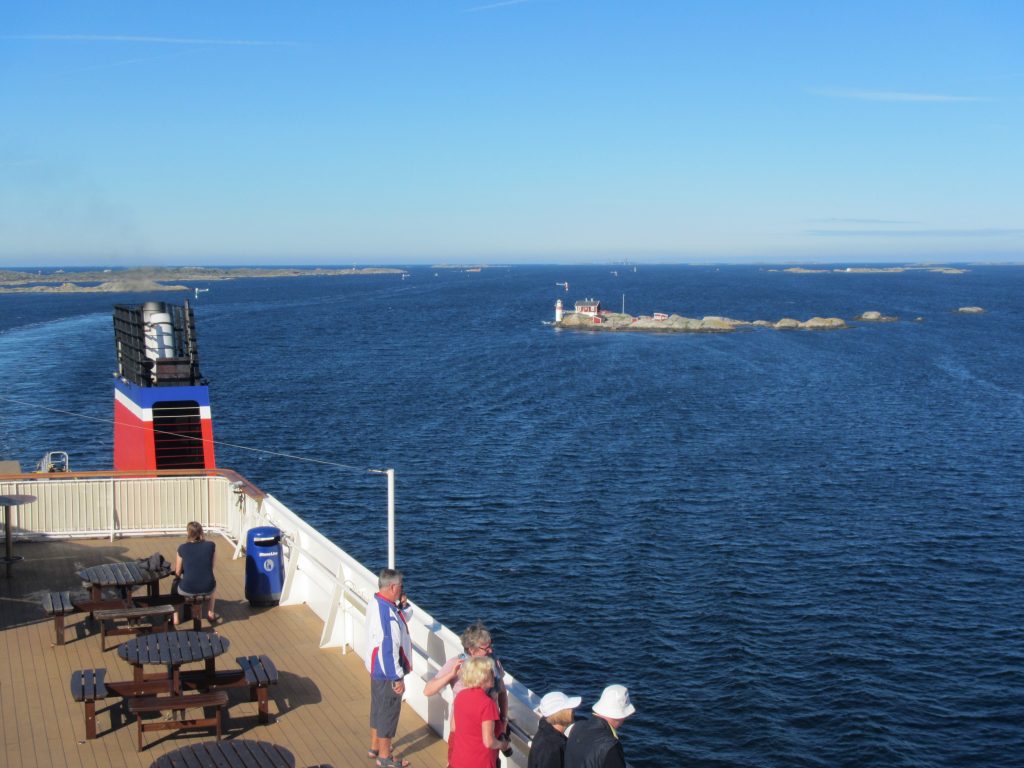
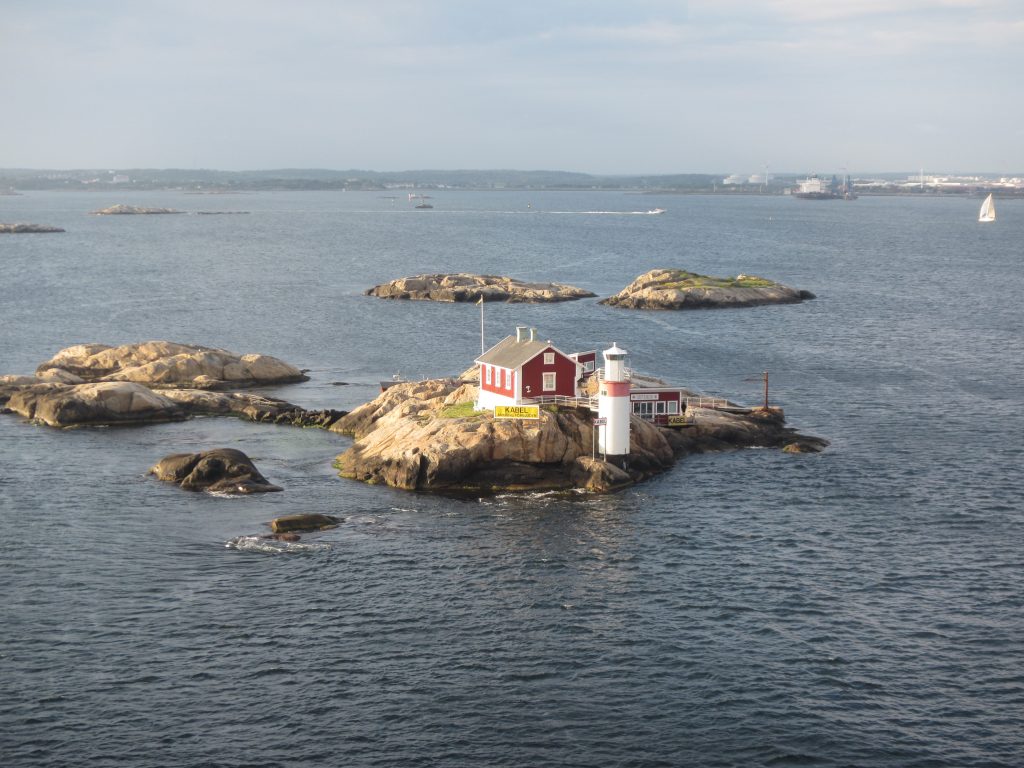
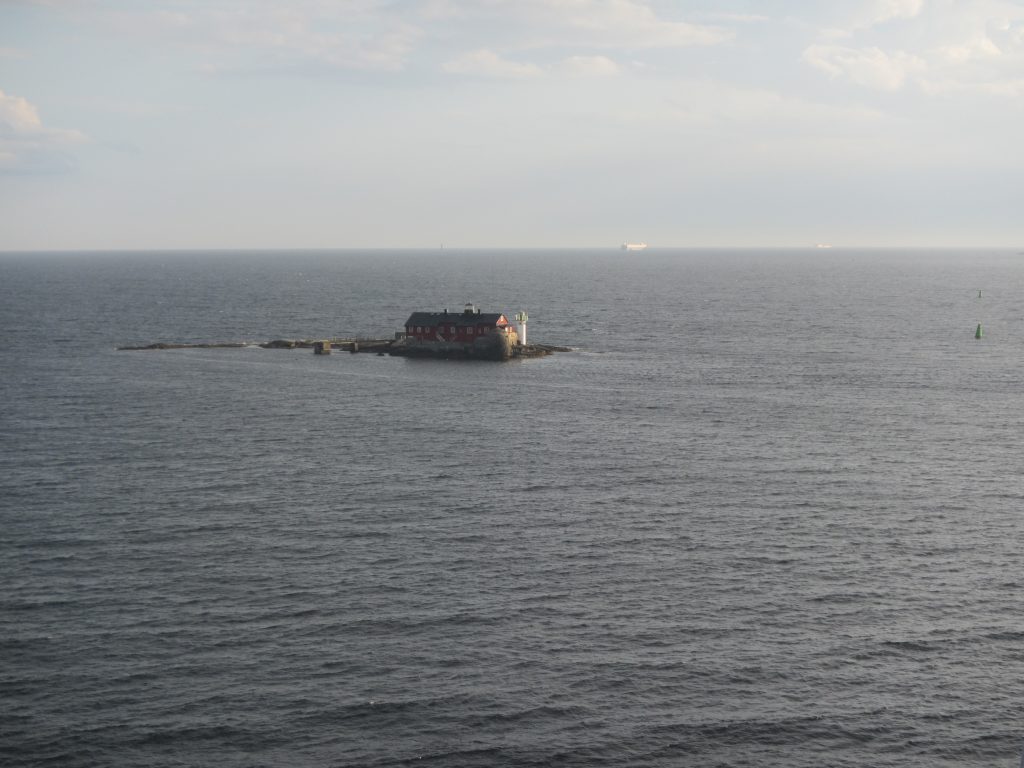
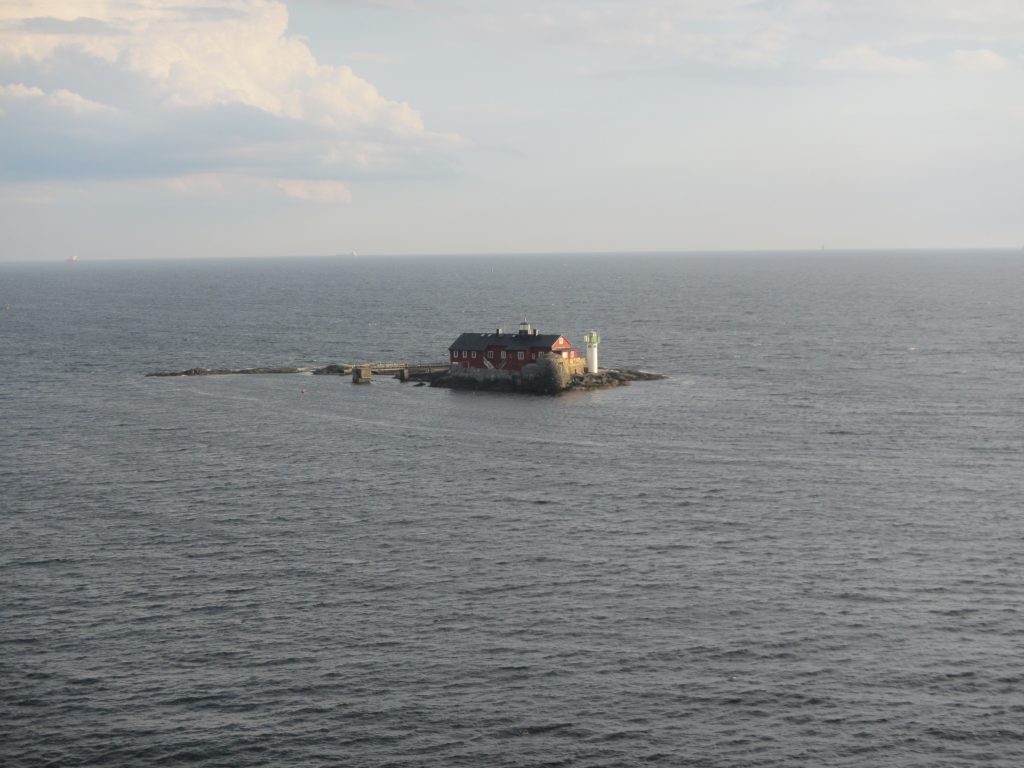
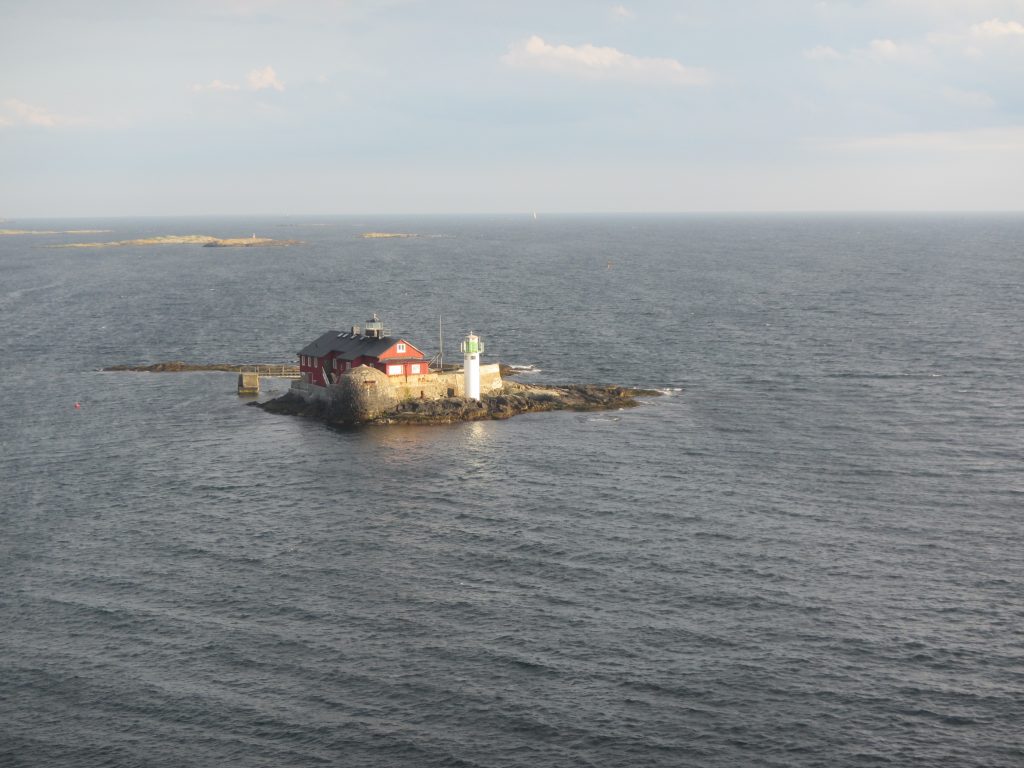
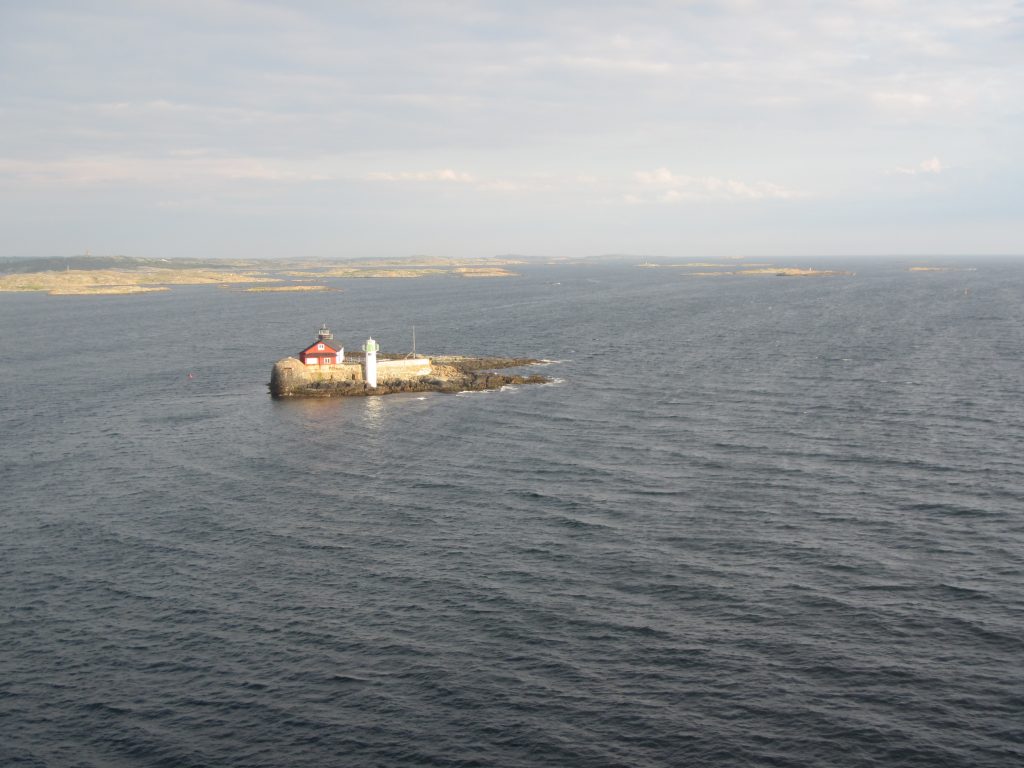
If I take the wings of the morning, and dwell in the uttermost parts of the sea…
Leaving the port of Gothenburg after our mini cruise, A and I obviously had to secure the prime spot for wake watching because I wanted to check out more of the weirdness I talked about in the last blog post. So while we were waiting for the ship to sail, we had the best view of the ship exhausts, too, and it looks really fascinating:
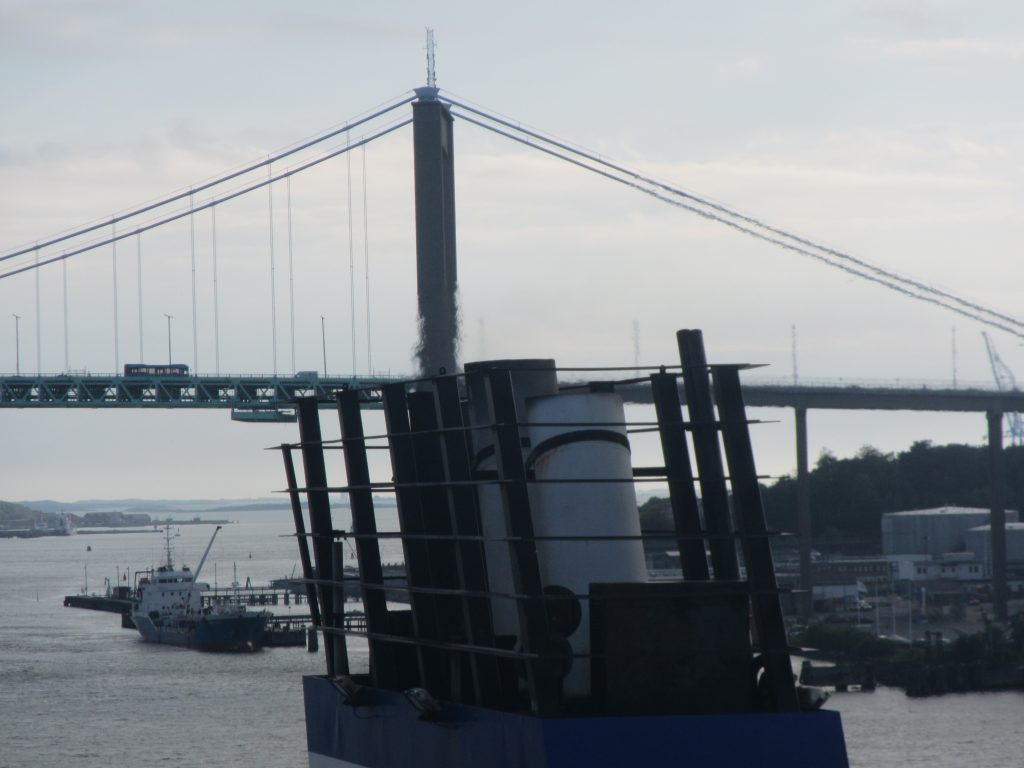
Do you see how the hot exhausts have a very different refraction index than the cold air around it?
Stena Germanica is the first ferry that size running on methanol (super interesting, btw, how the company is exploring new technologies!) so the exhausts are mostly clear.
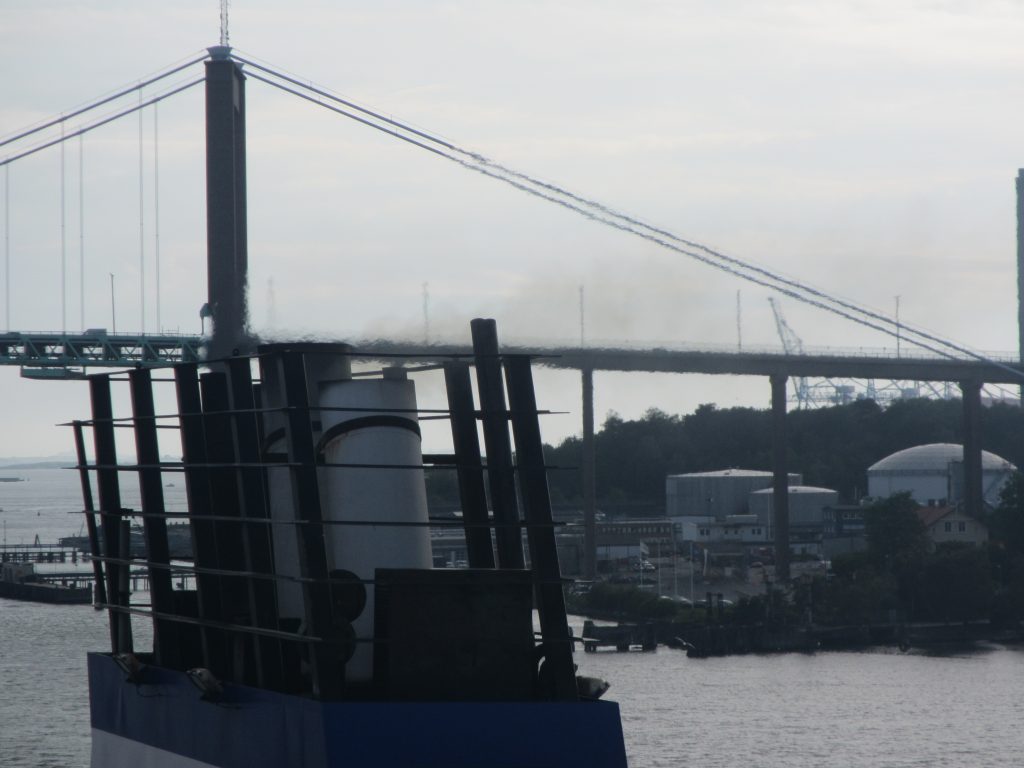
Although on occasion it does still look a little more like what you’d probably expect of a ship’s engine:
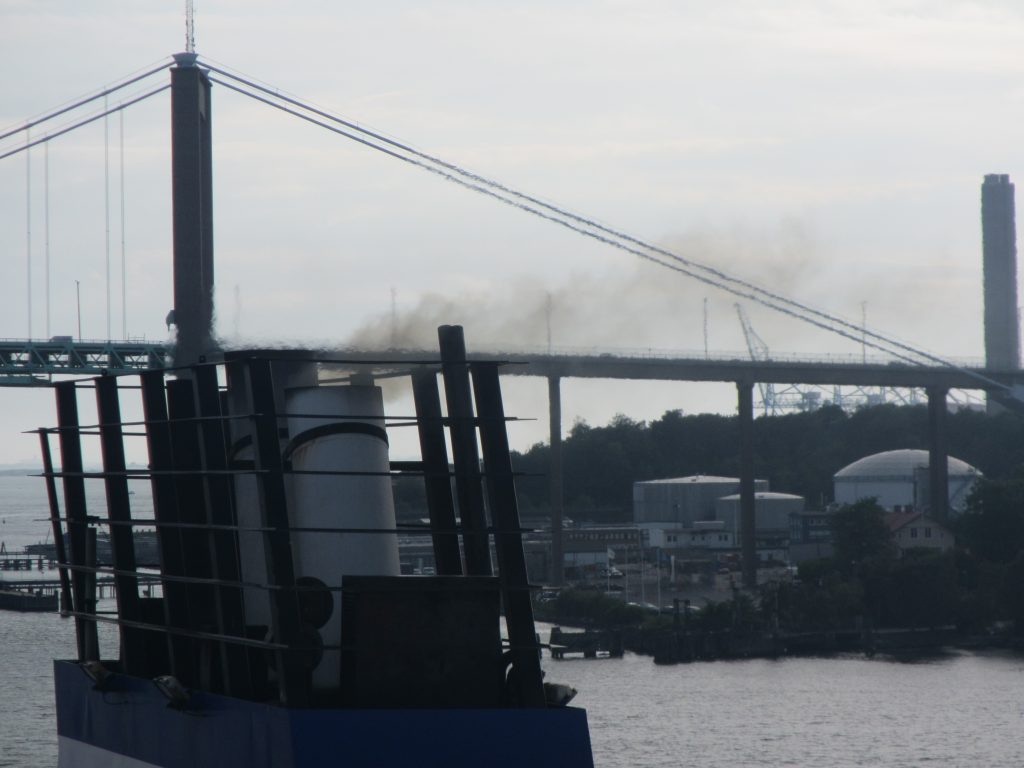
But nowhere near as bad as it used to be! Can you imagine that this is what all ships looked like not so long ago?
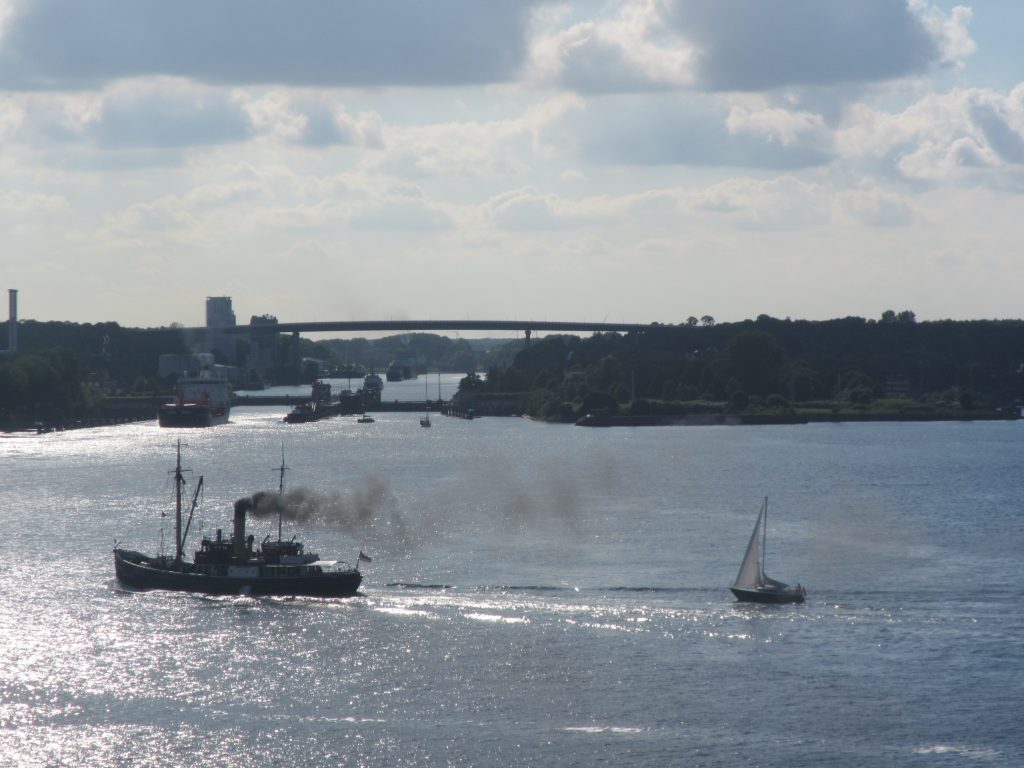
Good thing there are tons of regulations in place nowadays, and companies like Stena testing out new technologies.
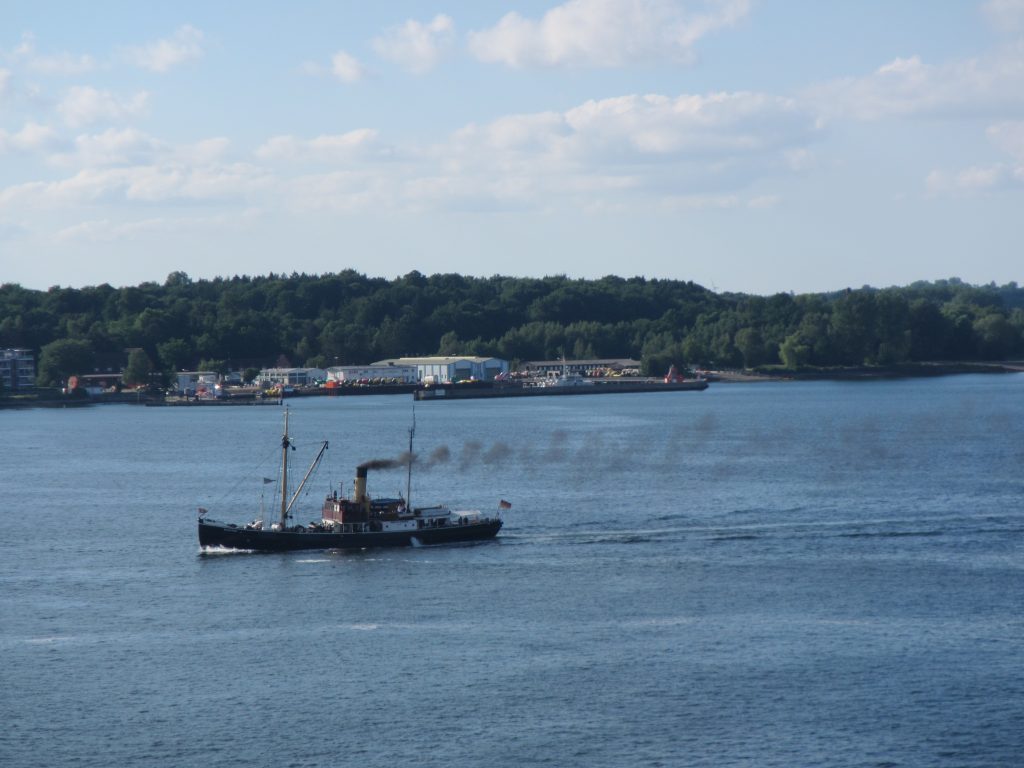
Can you imagine what Kiel would look like if there was more than one ship making that kind of smoke?
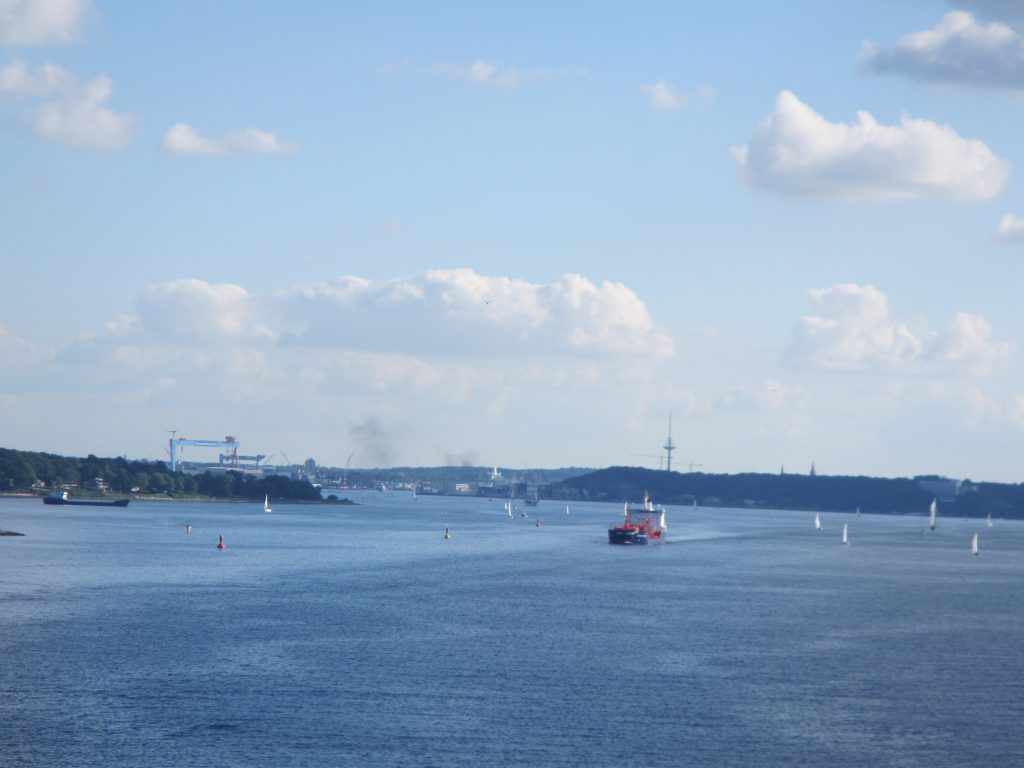
After having talked about wakes quite a bit recently, I’m going to show you a couple more pics today (bit not as many as I did two days ago, sorry! ;-))
And today we are focussing on the wake of one specific ship, the Stena Germanica that we sailed on for a mini cruise to Gothenburg (highly recommended!!). And even though that cruise sadly ended a month ago, I am still puzzled by what we saw:
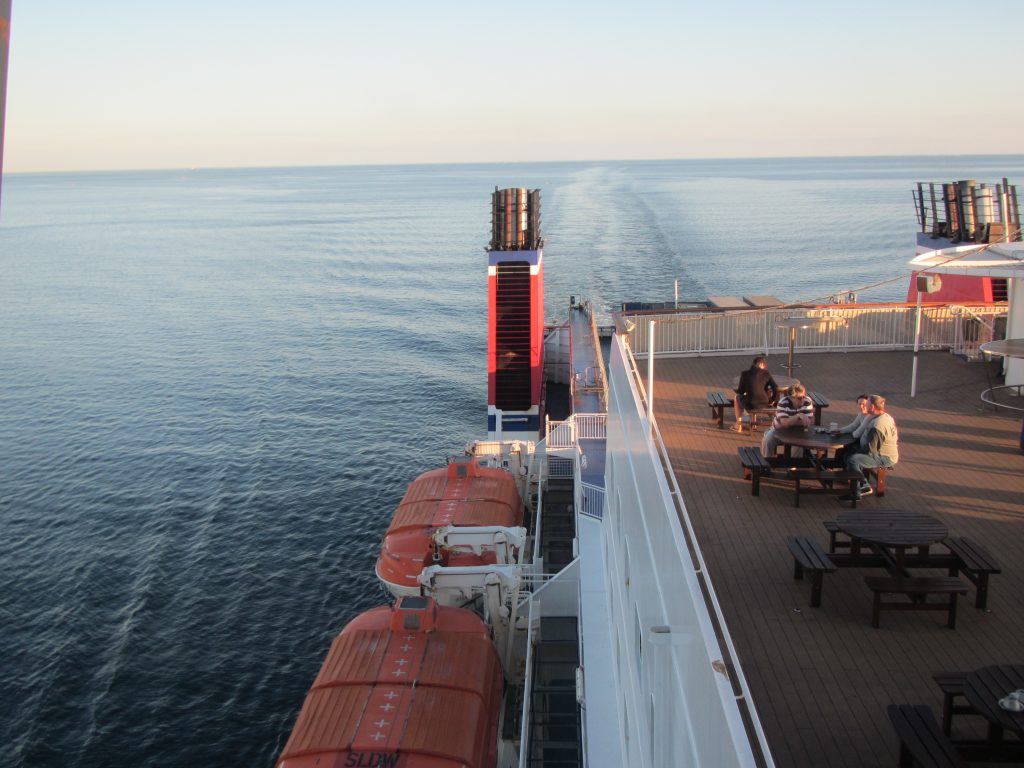
Look at the turbulent wake directly behind the ship. Do you see how the two sides are markedly different from each other?
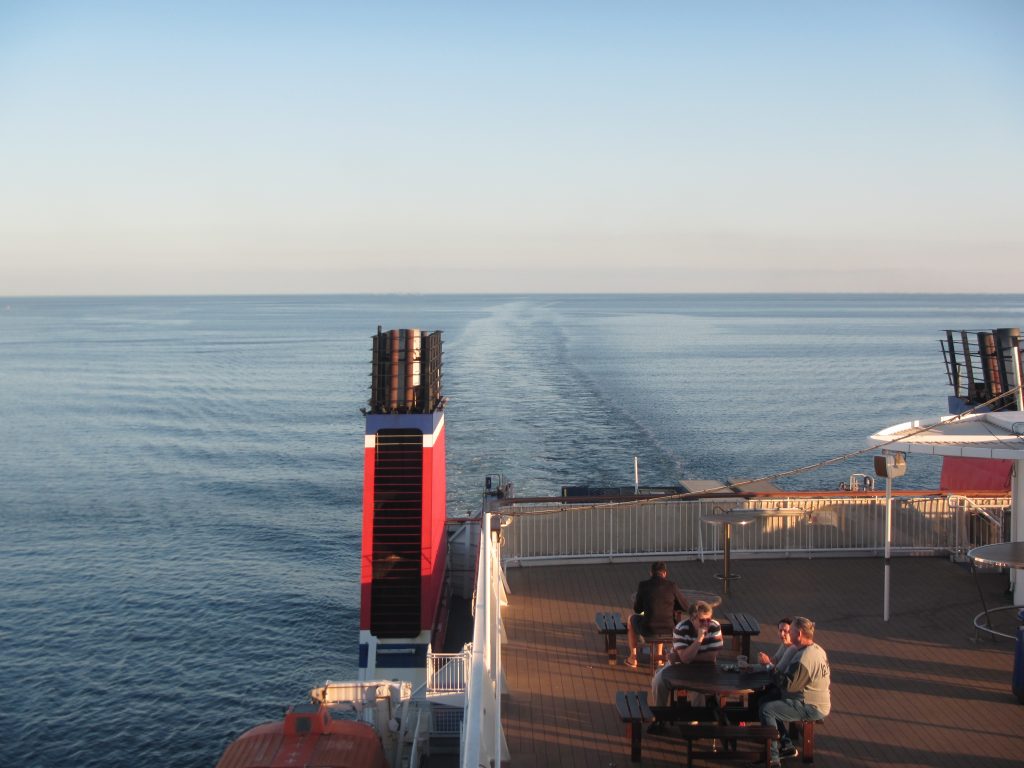
One side seems to be a lot more turbulent than the other.
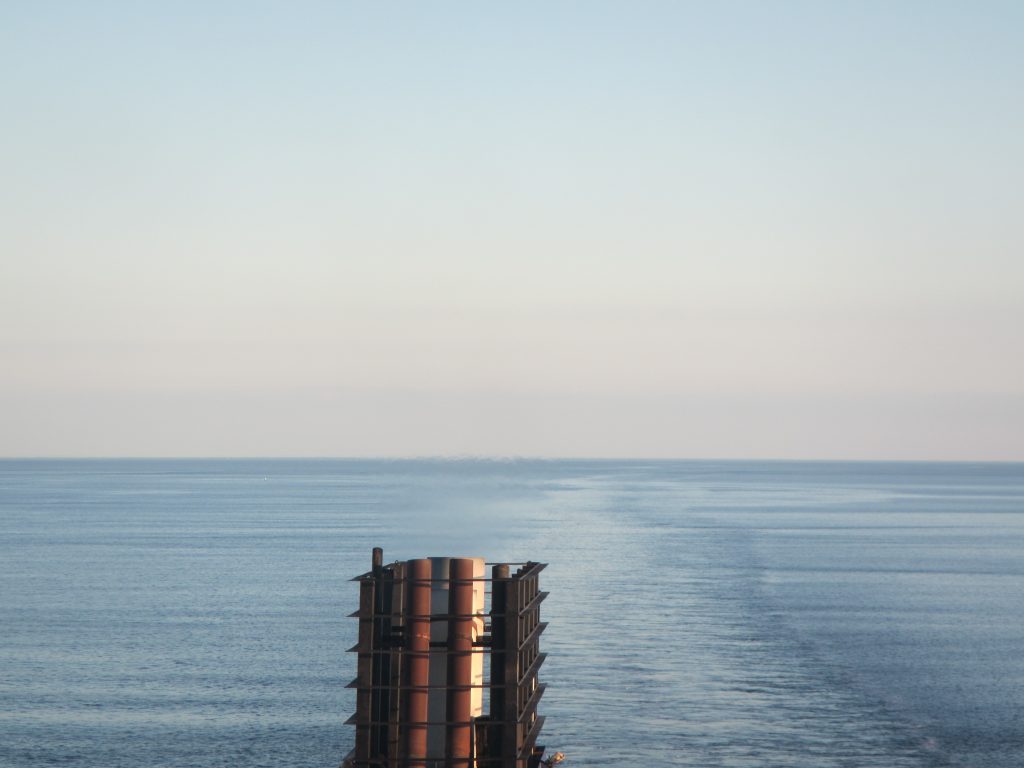
And I didn’t find an explanation for that. According to the internet, the ship has two propellers and on each of those propellers the pitch of the blades can be changed so that the propeller can always run at a constant speed and the ship’s velocity is changed by changing the propeller blades’ angles.
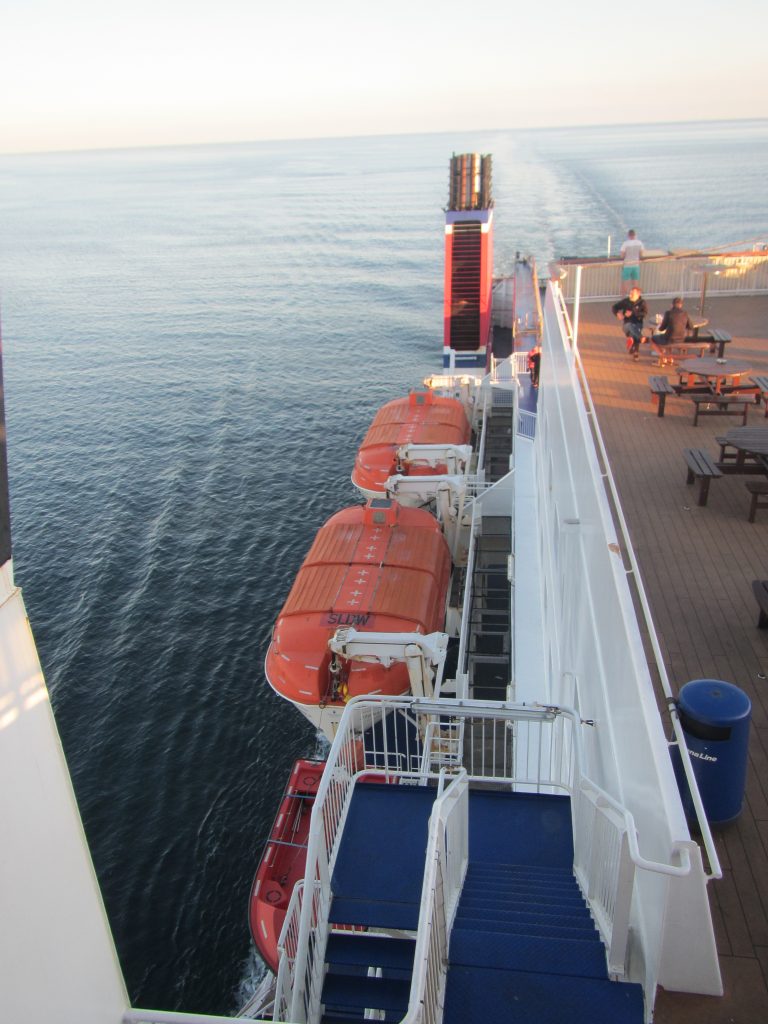
Maybe that’s what is going on? But would they run two propellers at different pitches even when just steaming straight ahead?
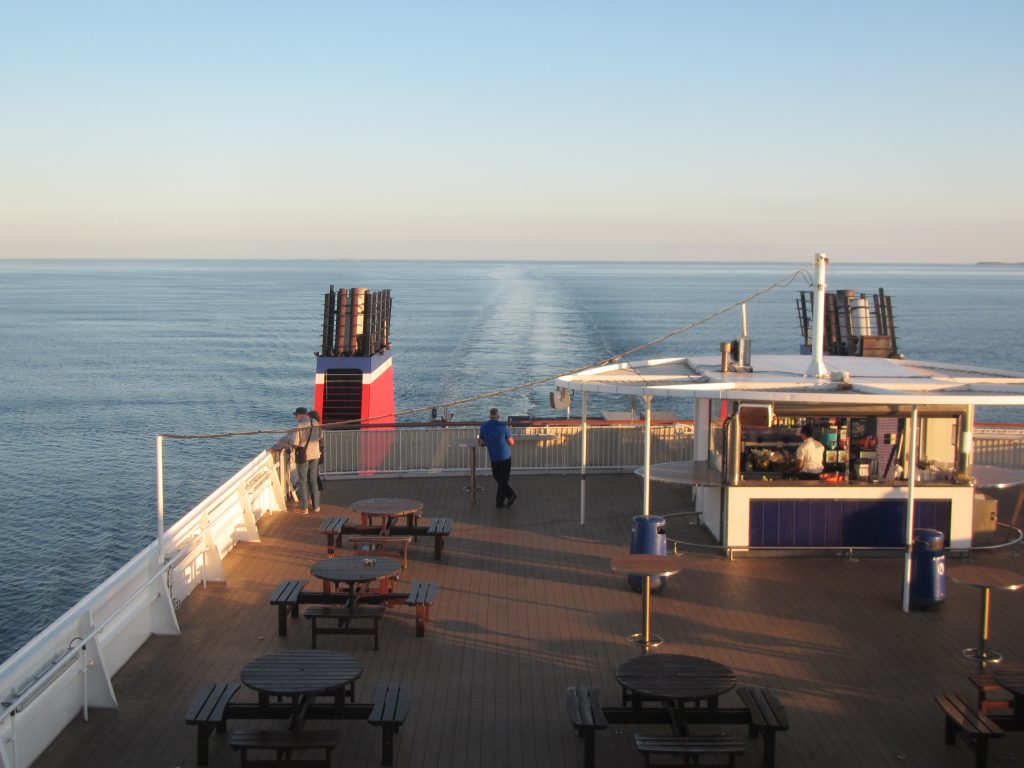
Btw, look at that beautiful wake pattern! You can see both the feathery V going out from the ship and those half circles filling in the V. I don’t think I have ever seen that this clearly on a ship this size before. But then maybe I just wasn’t observing well enough.
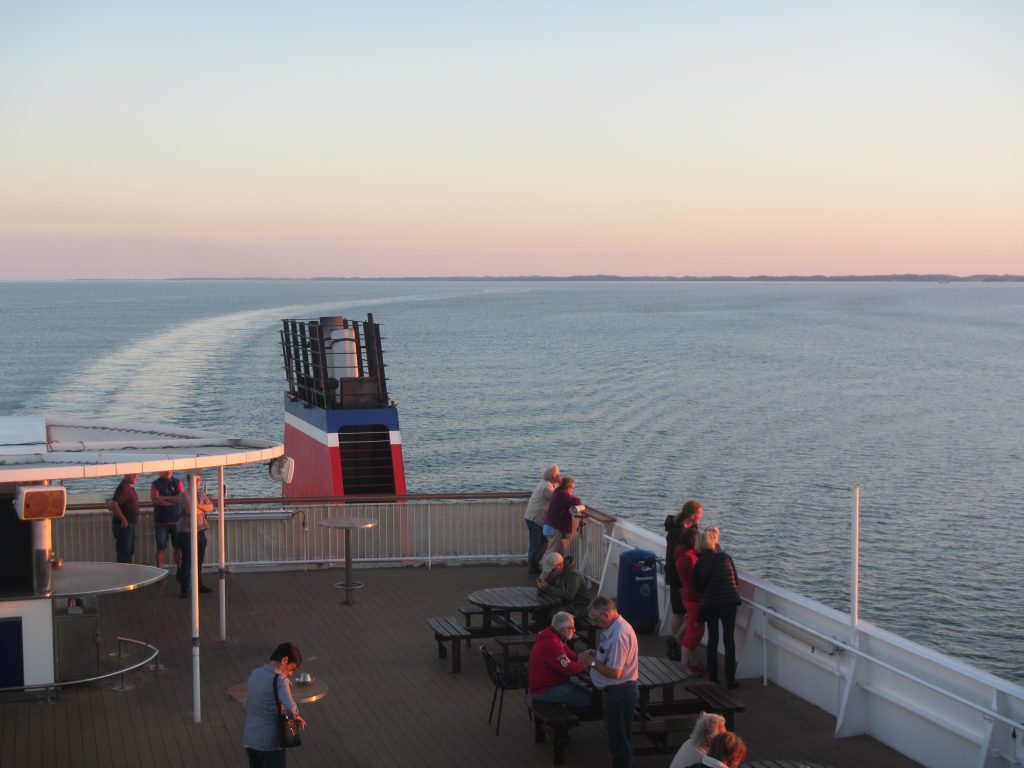
I love it!
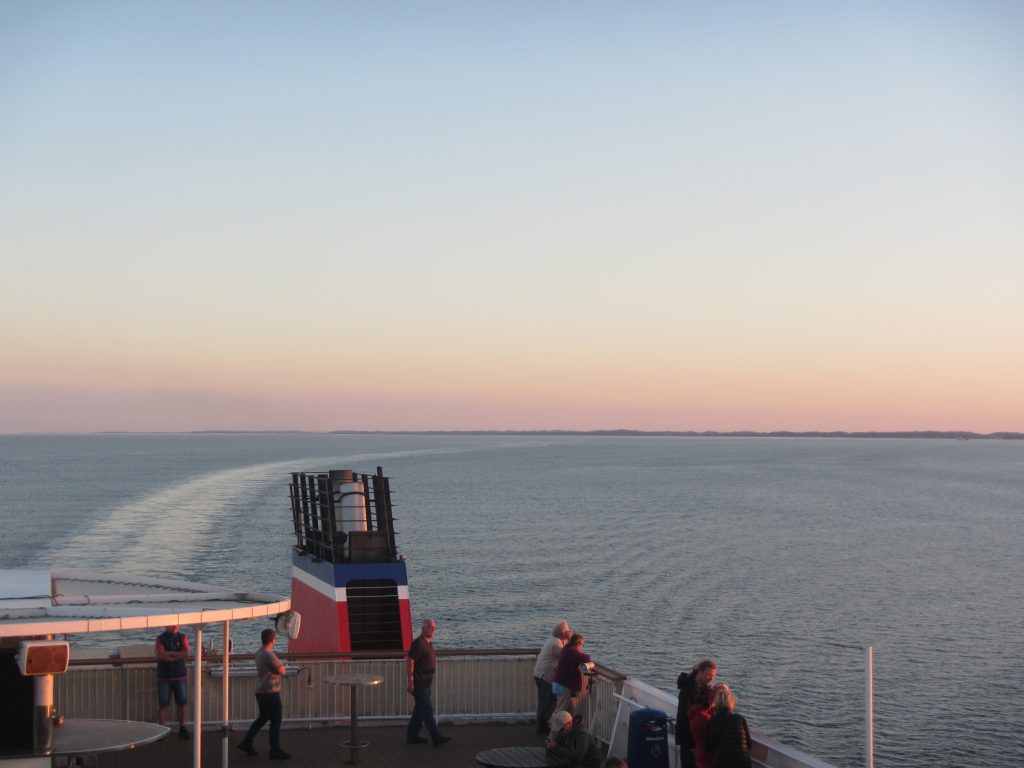
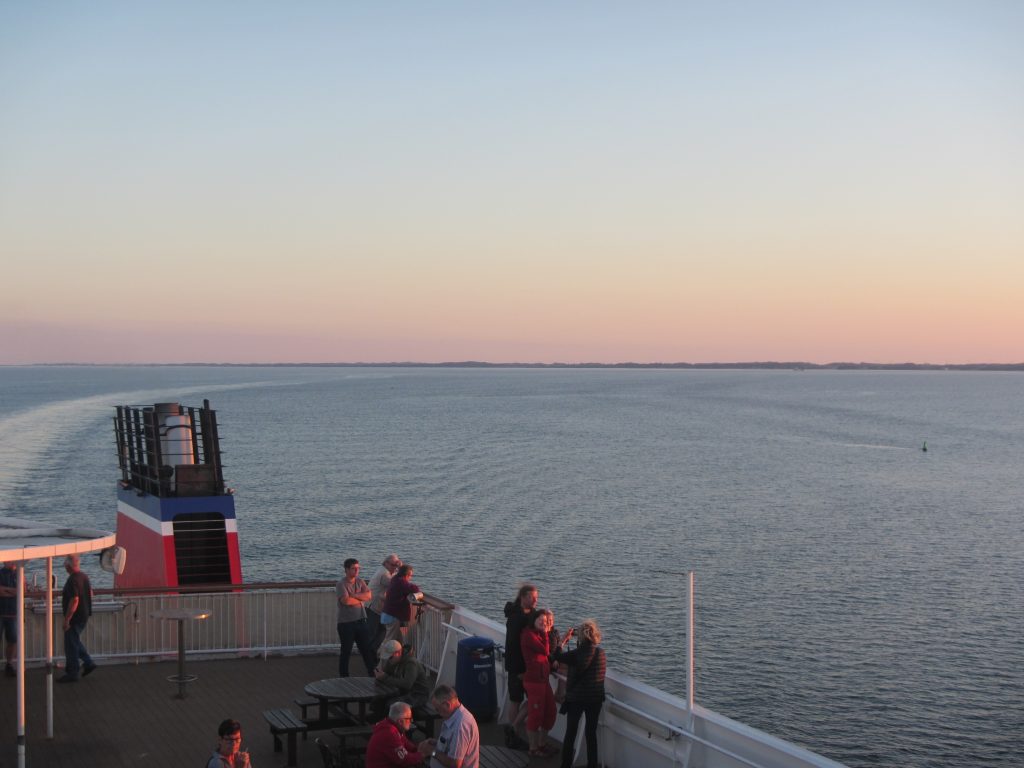
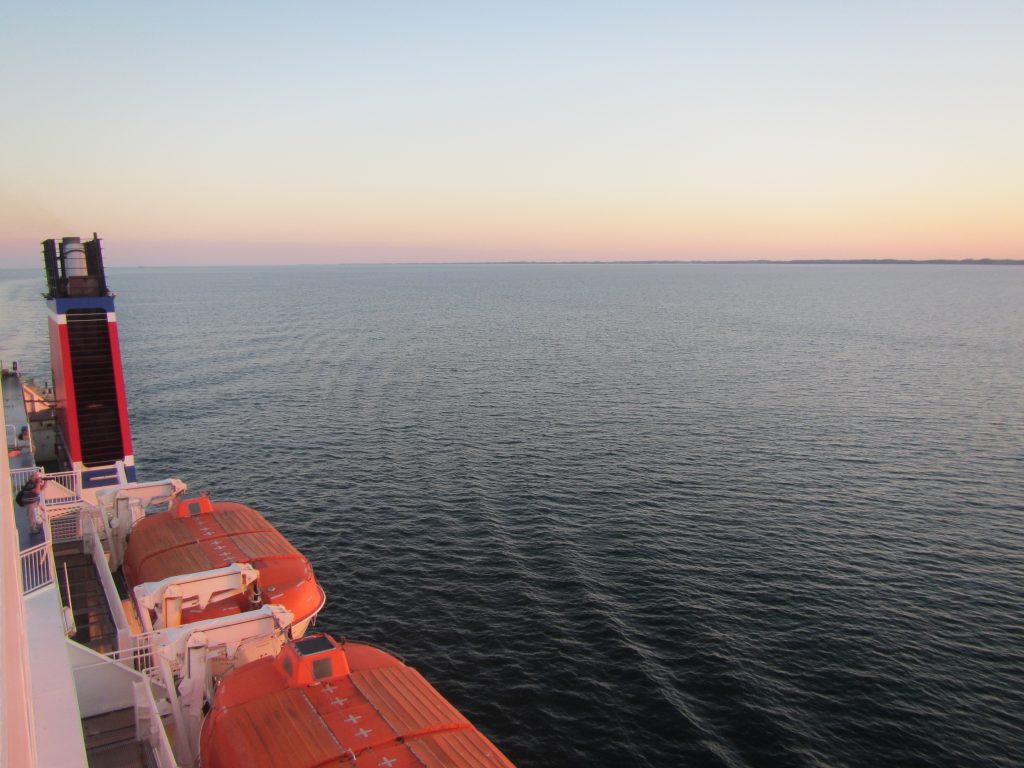
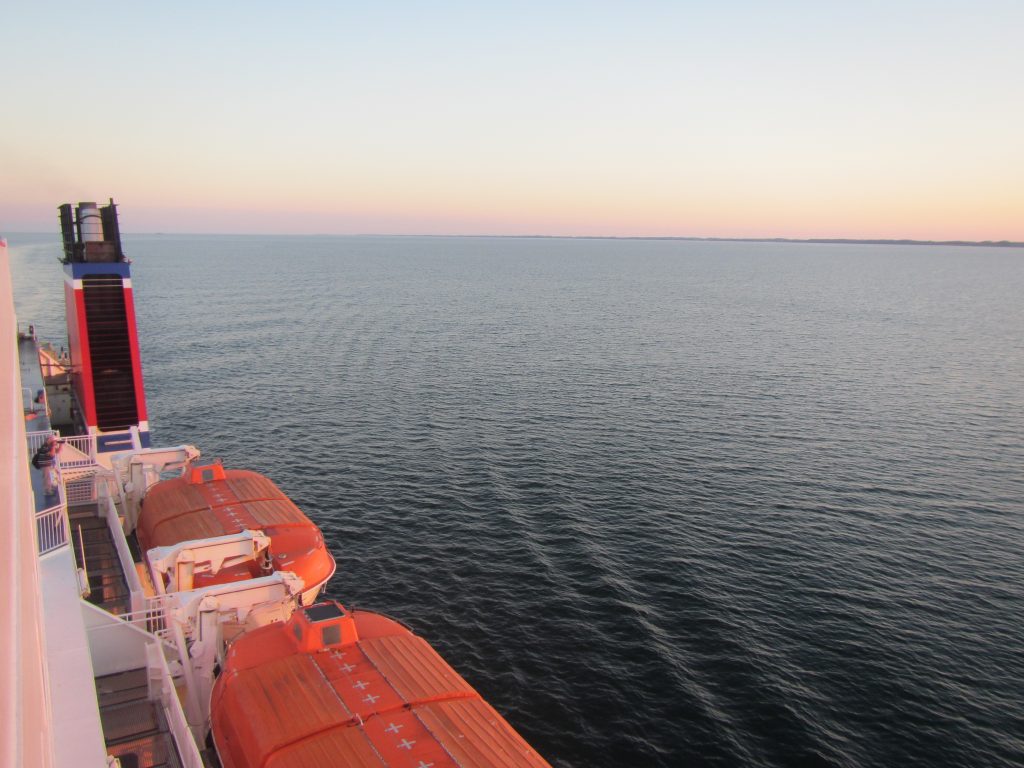
Now. The next morning: It is quite windy now, and the difference between the two sides of the wake is quite pronounced. Also very interesting: The foam on both sides is behaving very differently! One side (the upwind side) has a much sharper edge than the other.
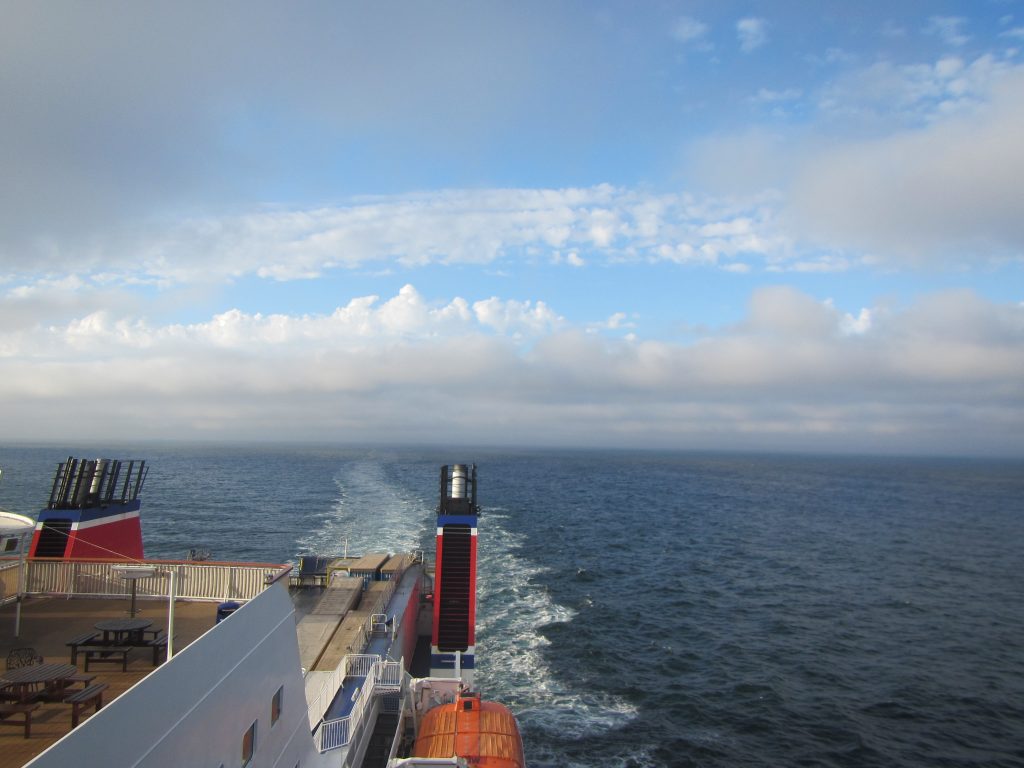
But this surely can’t be the effect of just the wind?!
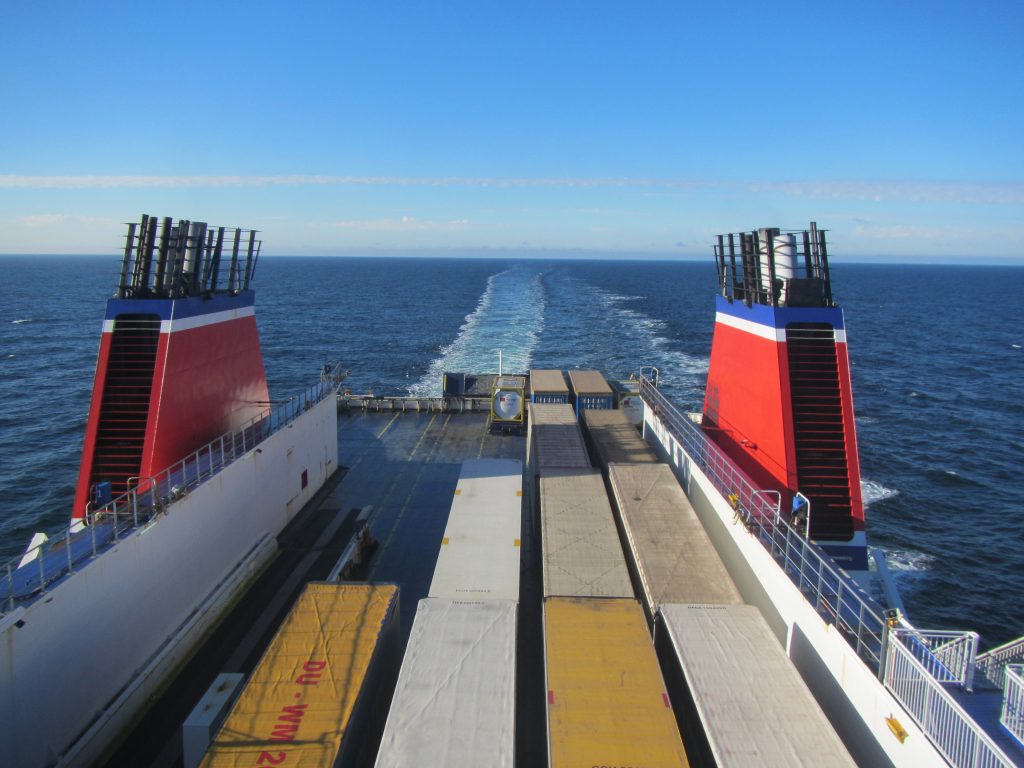
Looks great though!
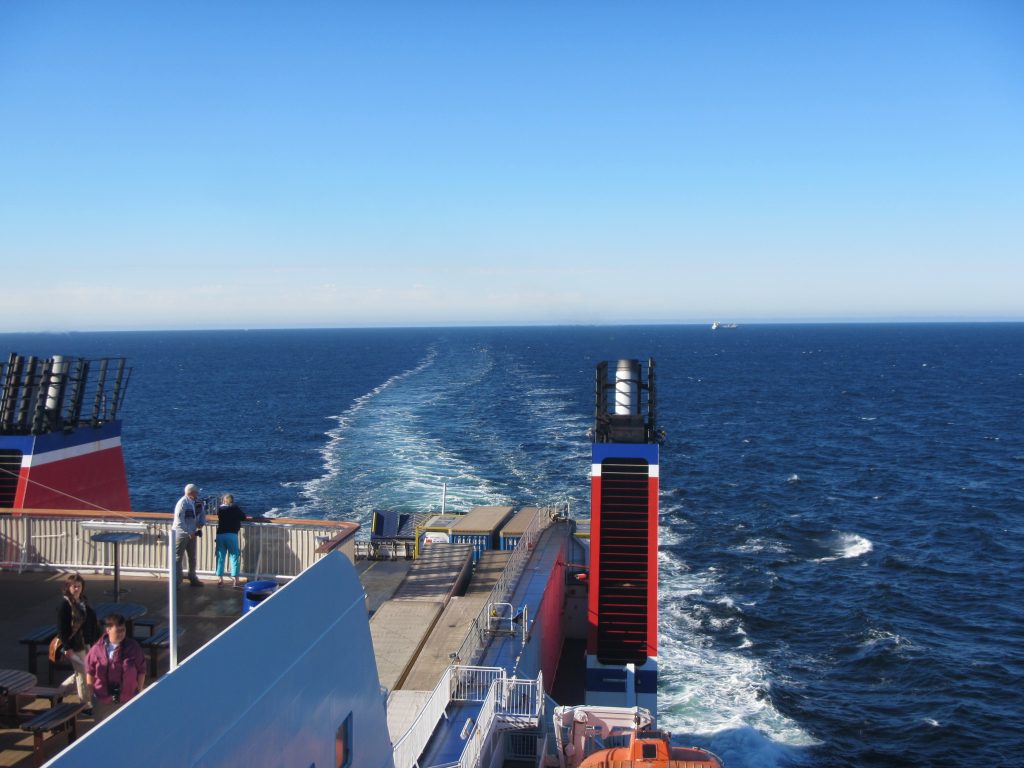
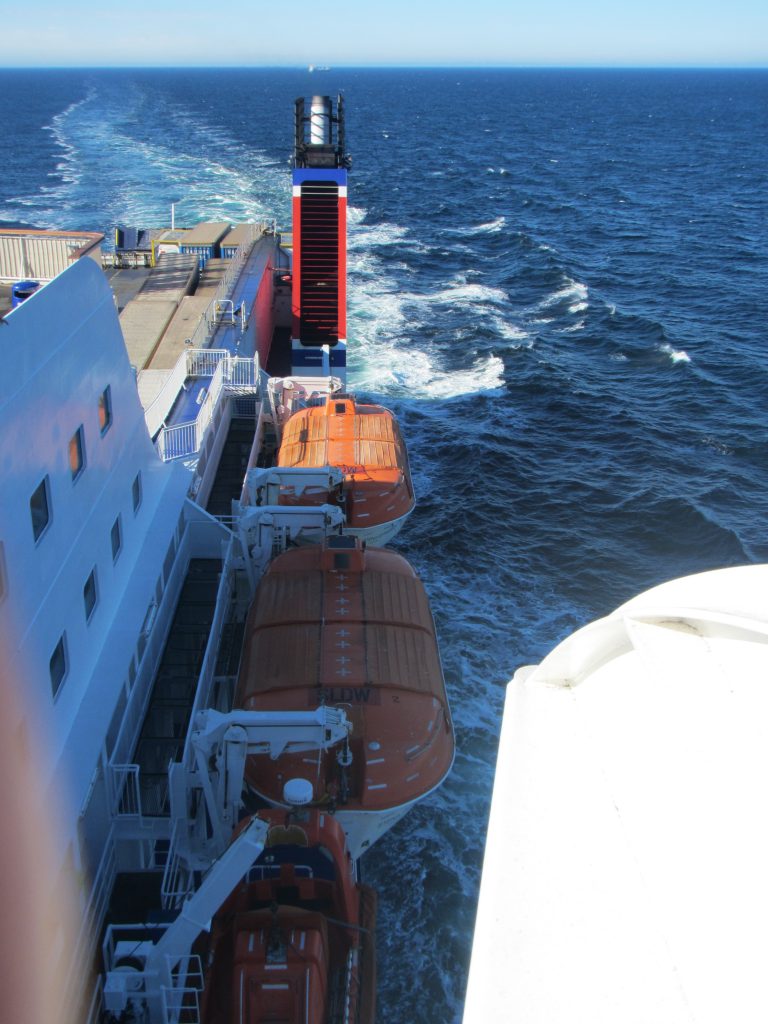
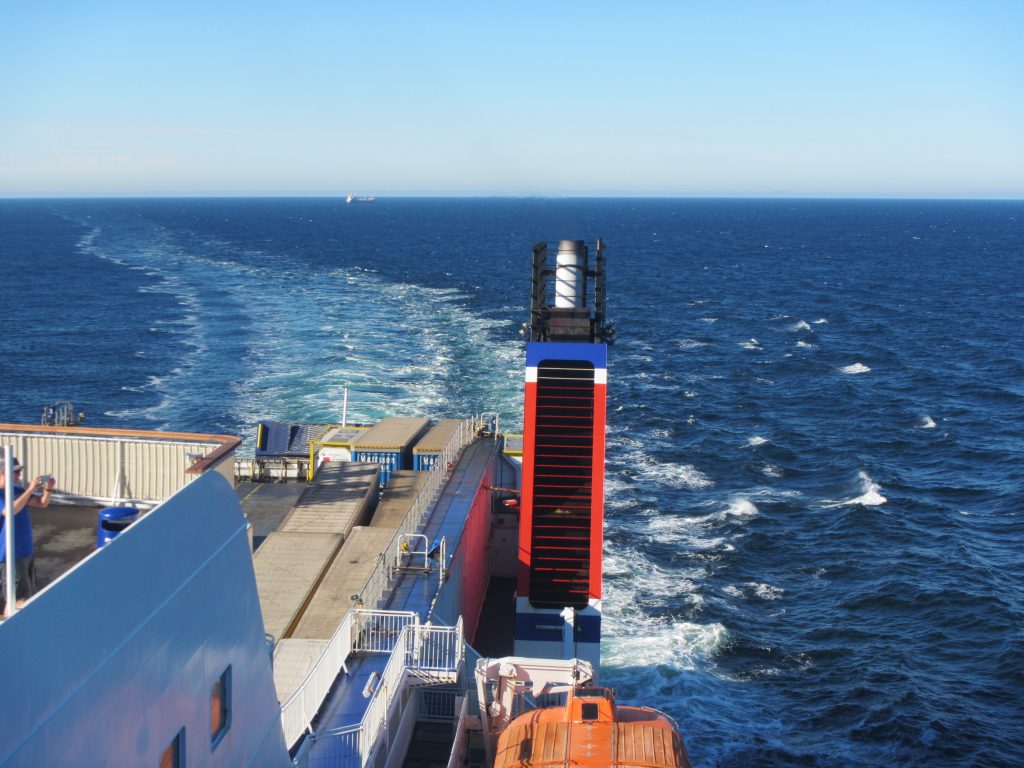
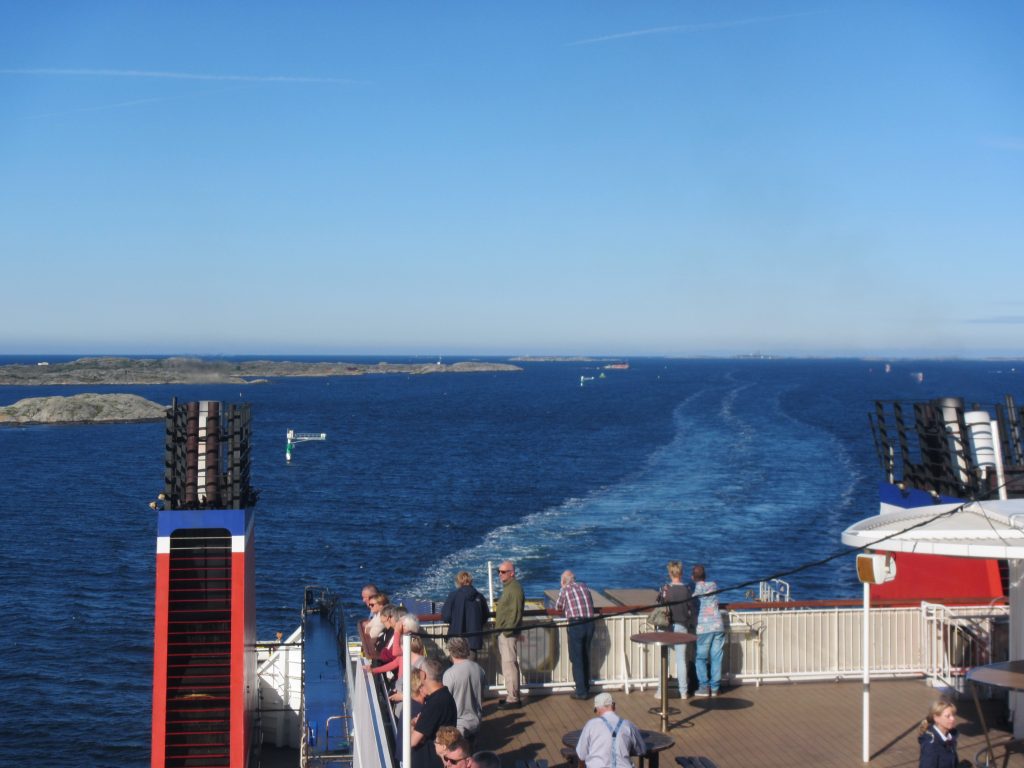
Also very interesting: When arriving in Gothenburg, we met another Stena Ferry, and the same thing could be seen. Here she is after she passed by:
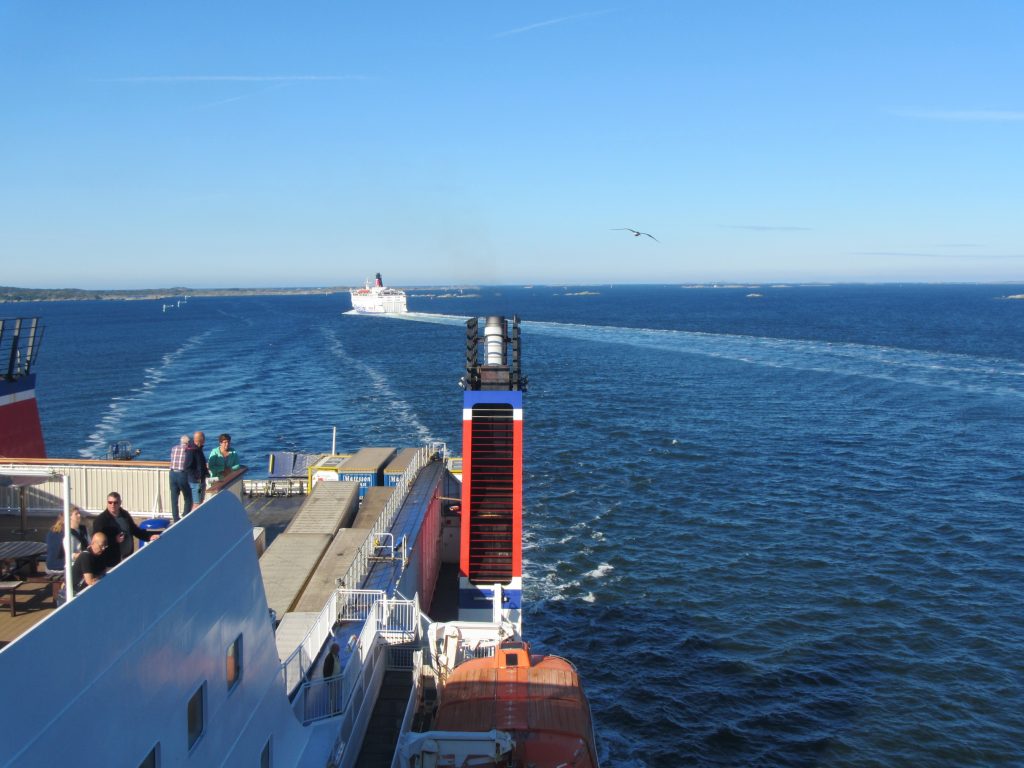
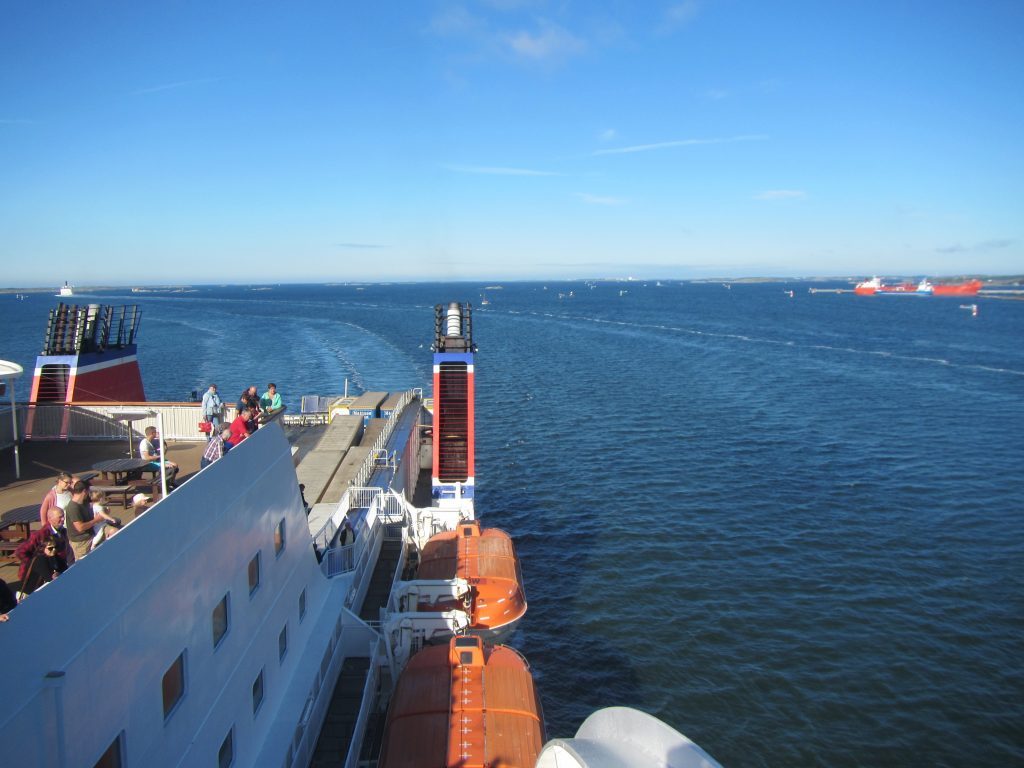
And her wake stays visible for quite a while with this marked foam stripe right in the middle of the wake, as if she had counter-rotating propellers that set up a convergence zone there?
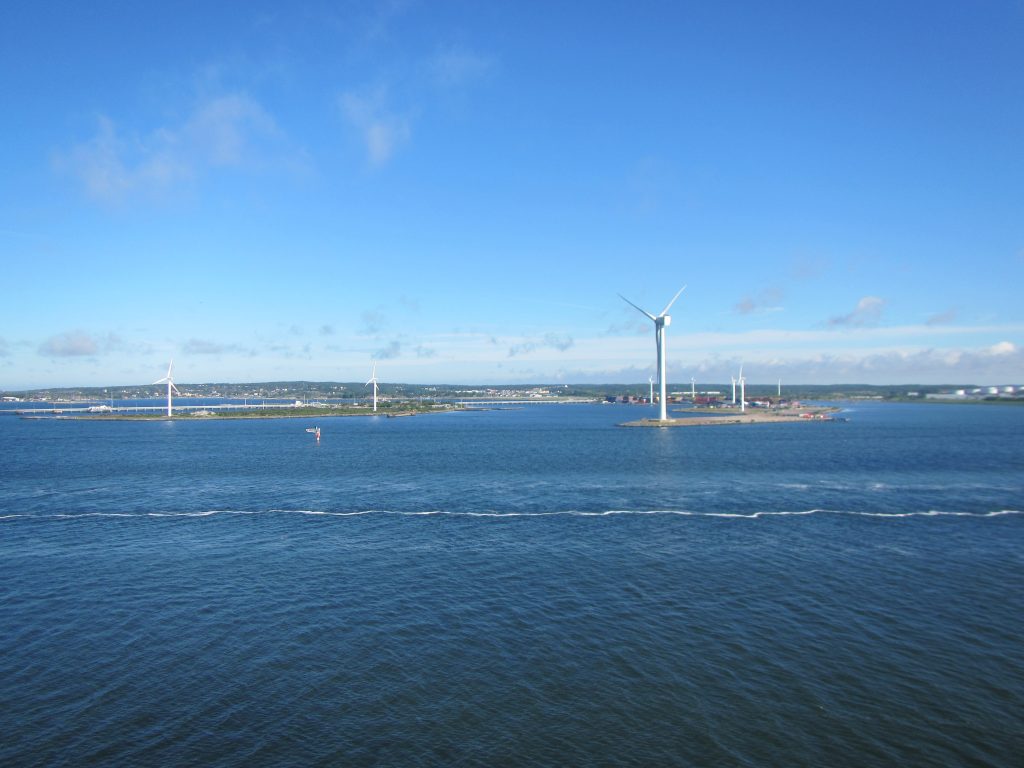
Same phenomenon again when leaving Gothenburg later that day:
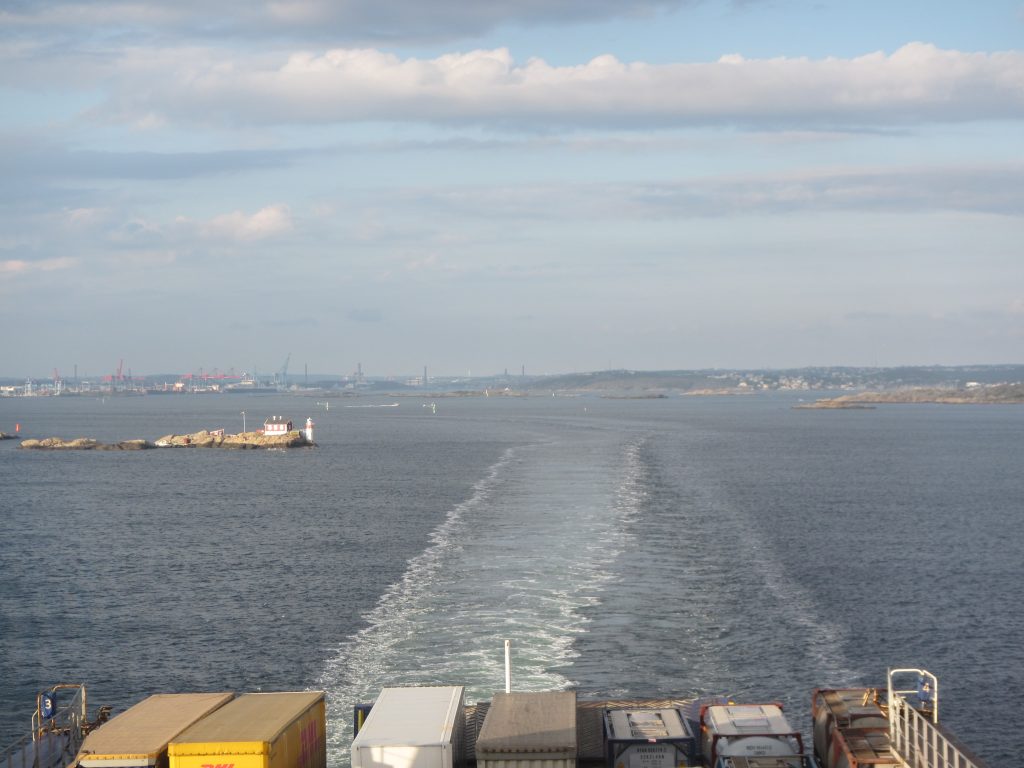
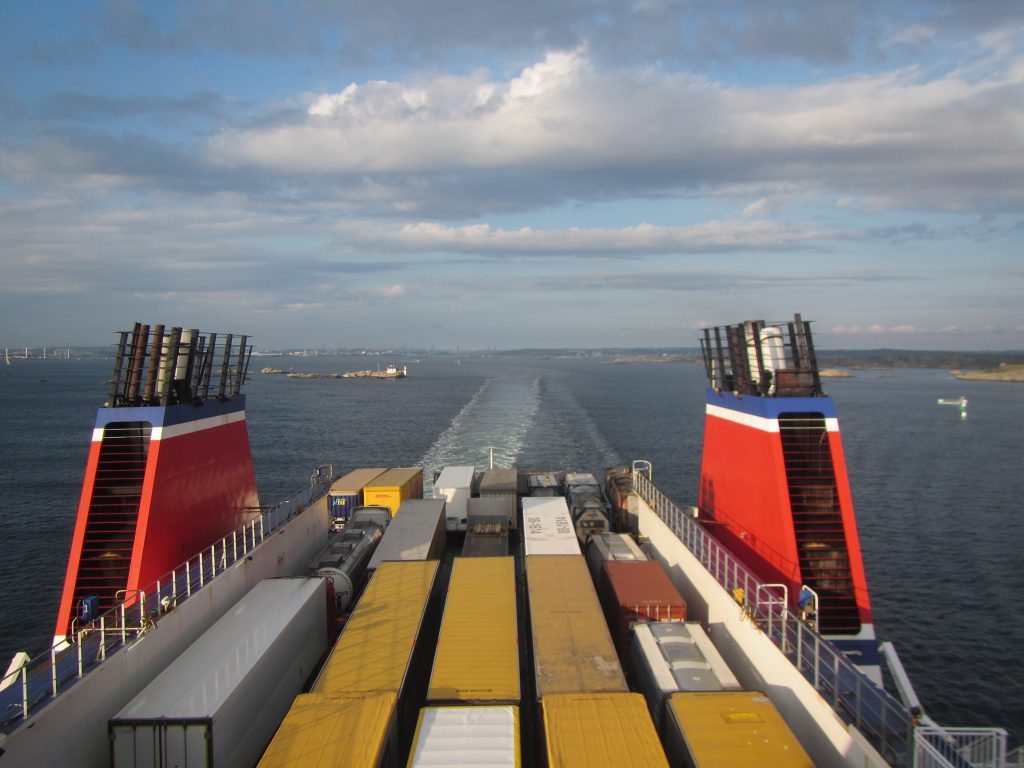
And arriving in Kiel the next morning, we could beautifully observe the different parts of the wake again:
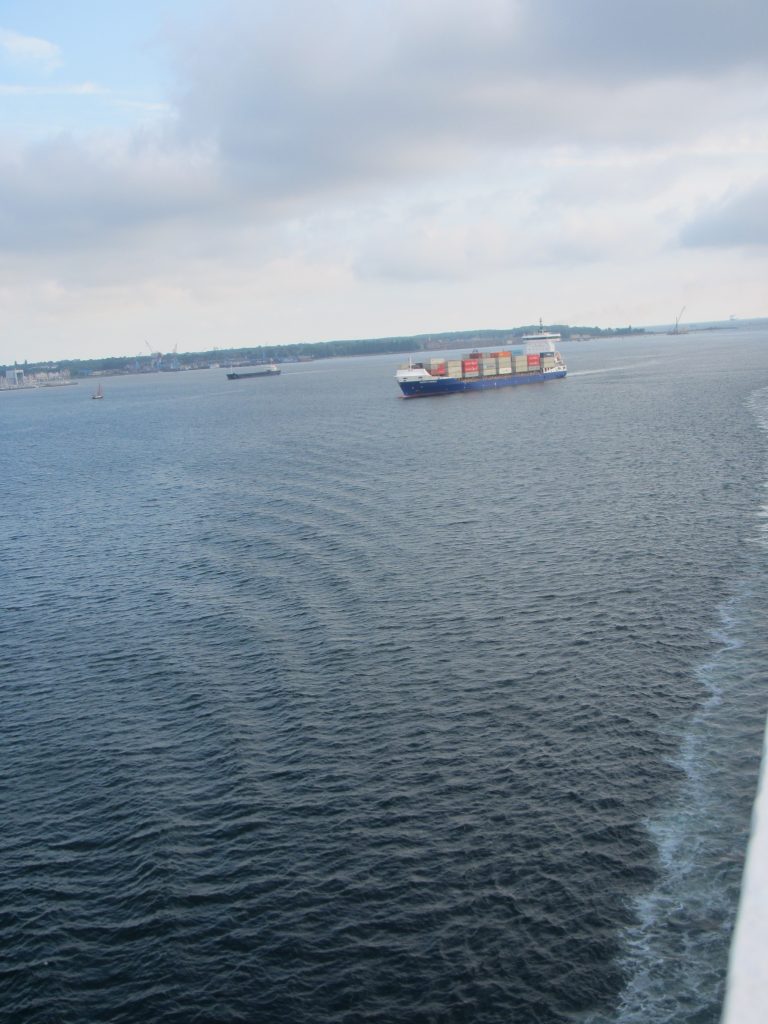
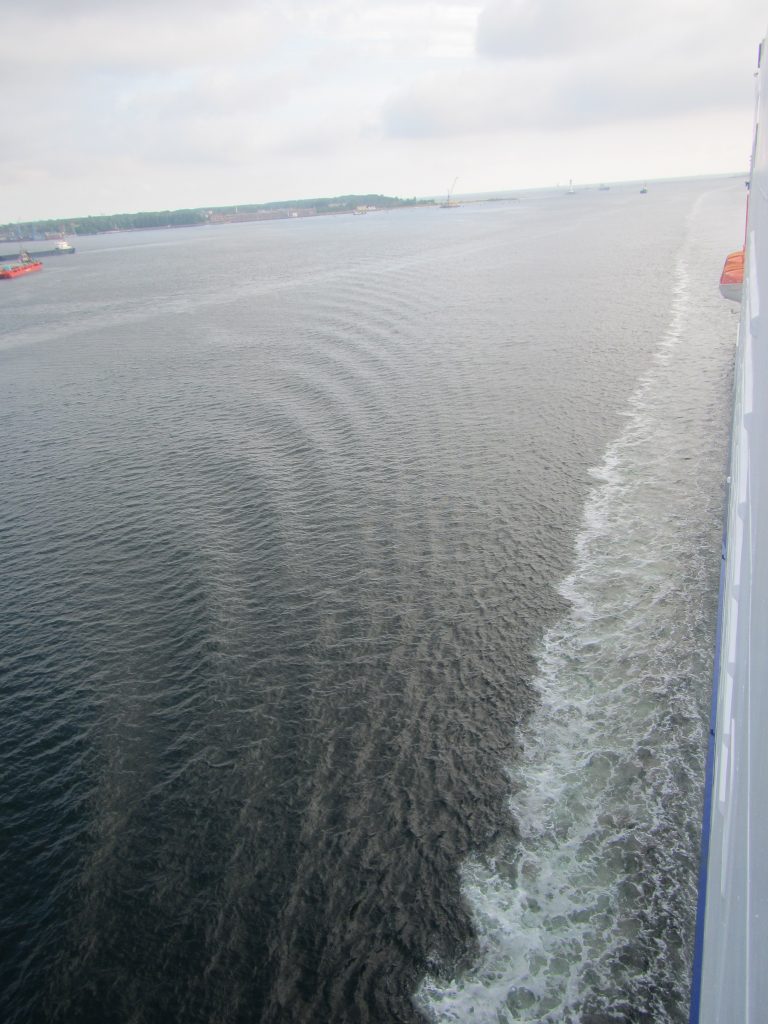
What do you think is going on here? Why is the wake of the Stena Germanica not symmetric? I’m having sleepless nights over this :-)
And now you thought I was done showing you wakes? Ha, I was not nearly done! I told you, watching waves makes me happy :-)
And from Stena Germanica’s sun deck we had an excellent view over the Kiel fjord and later the Port of Gothenburg…
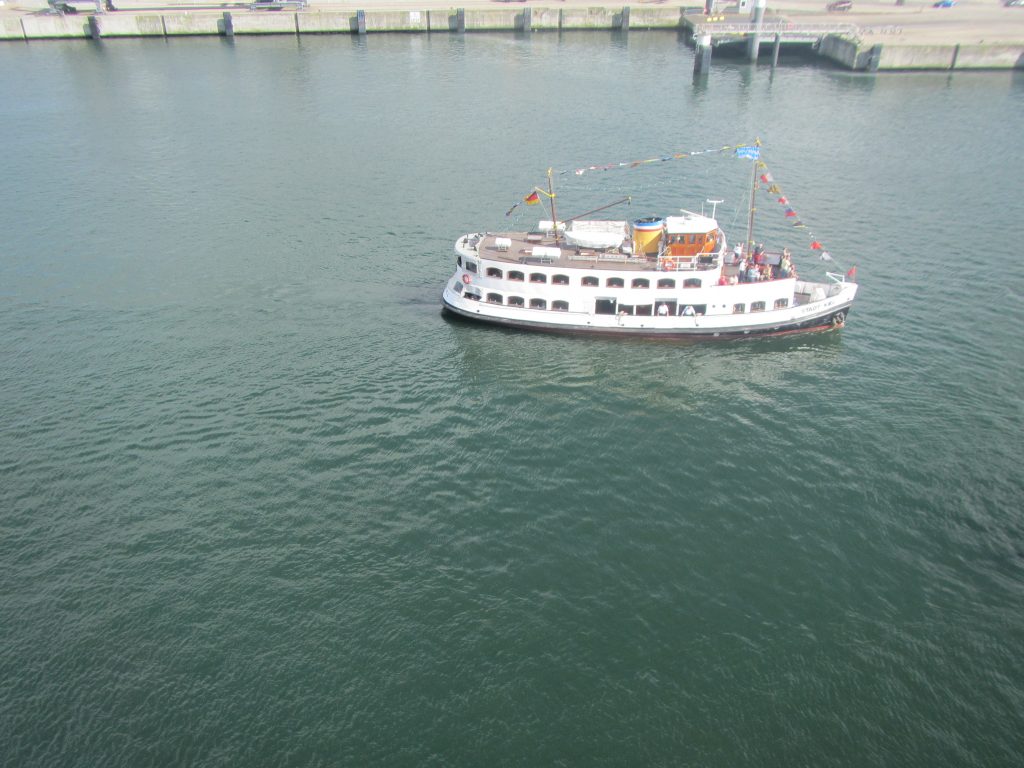
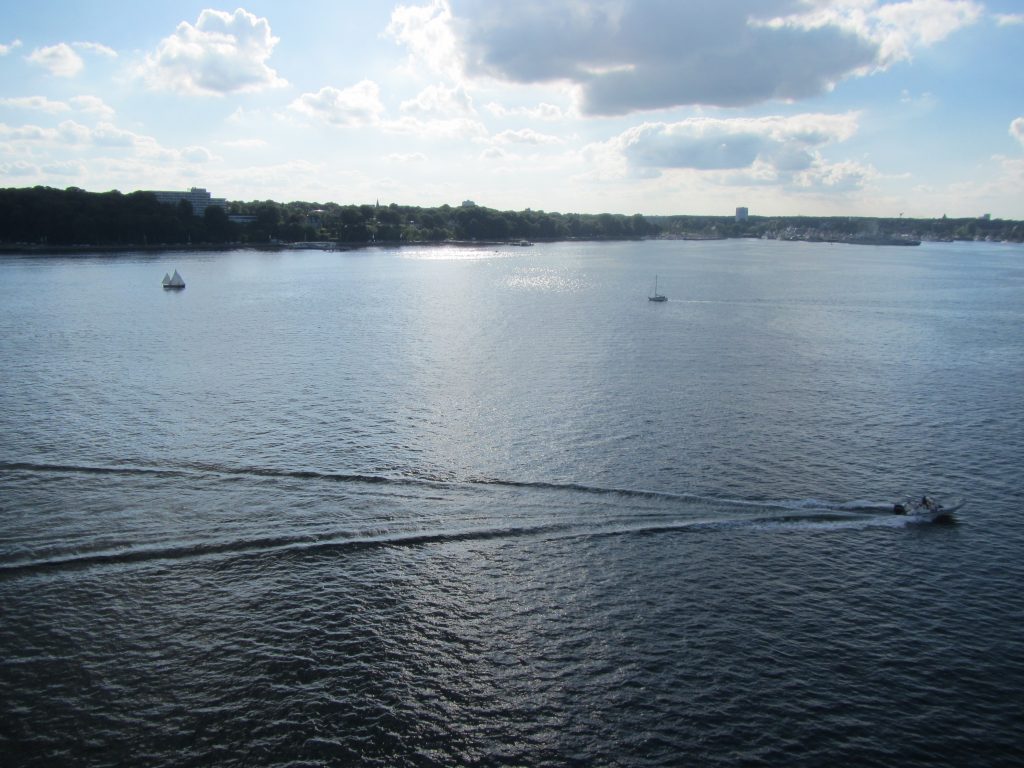
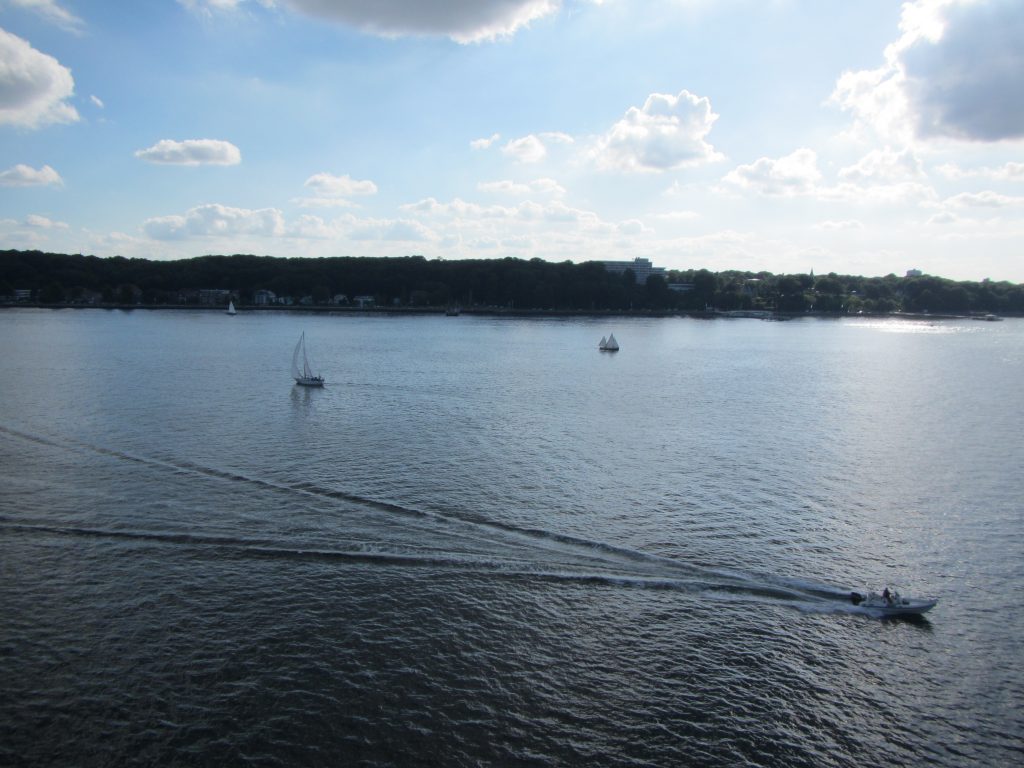
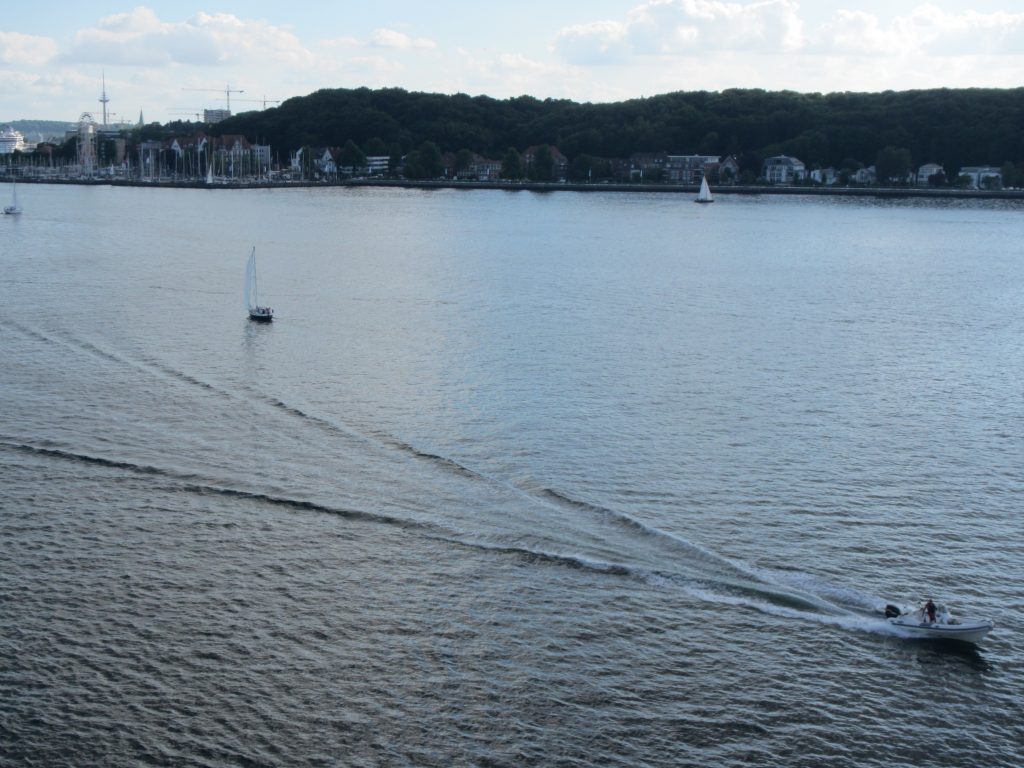
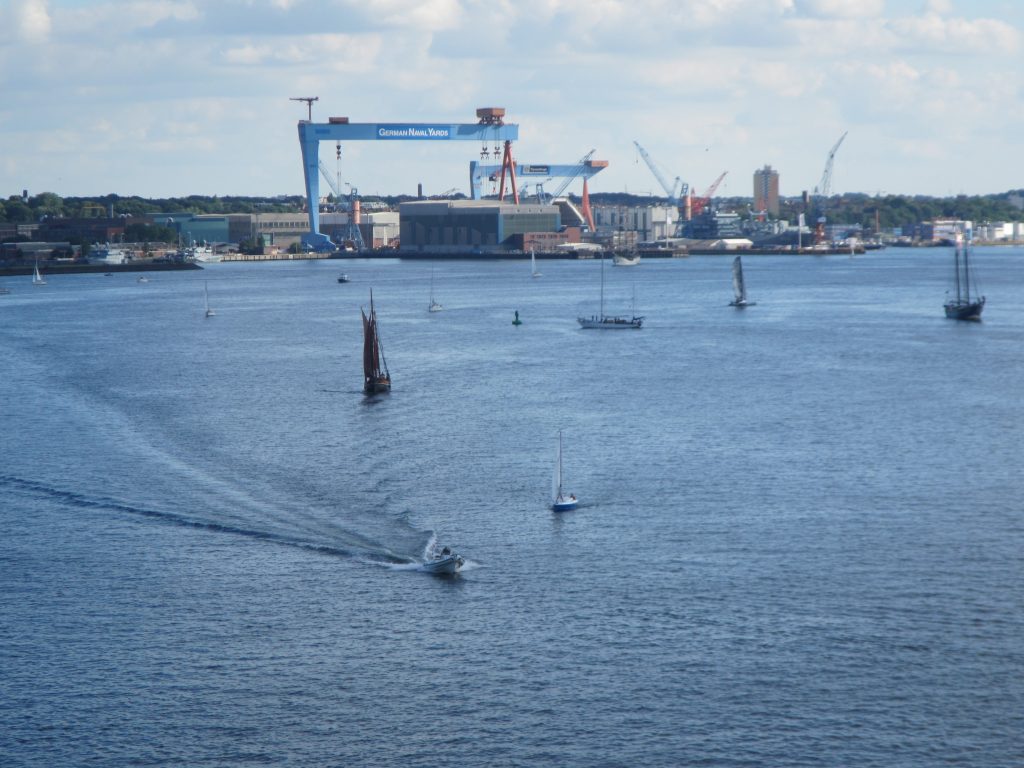
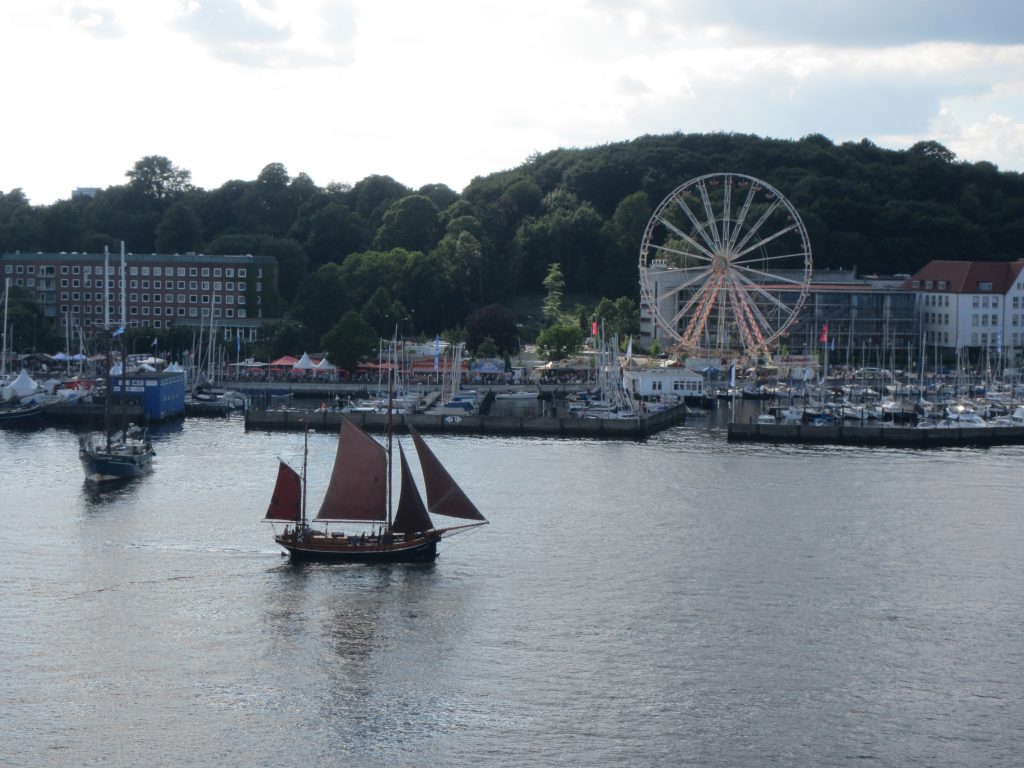
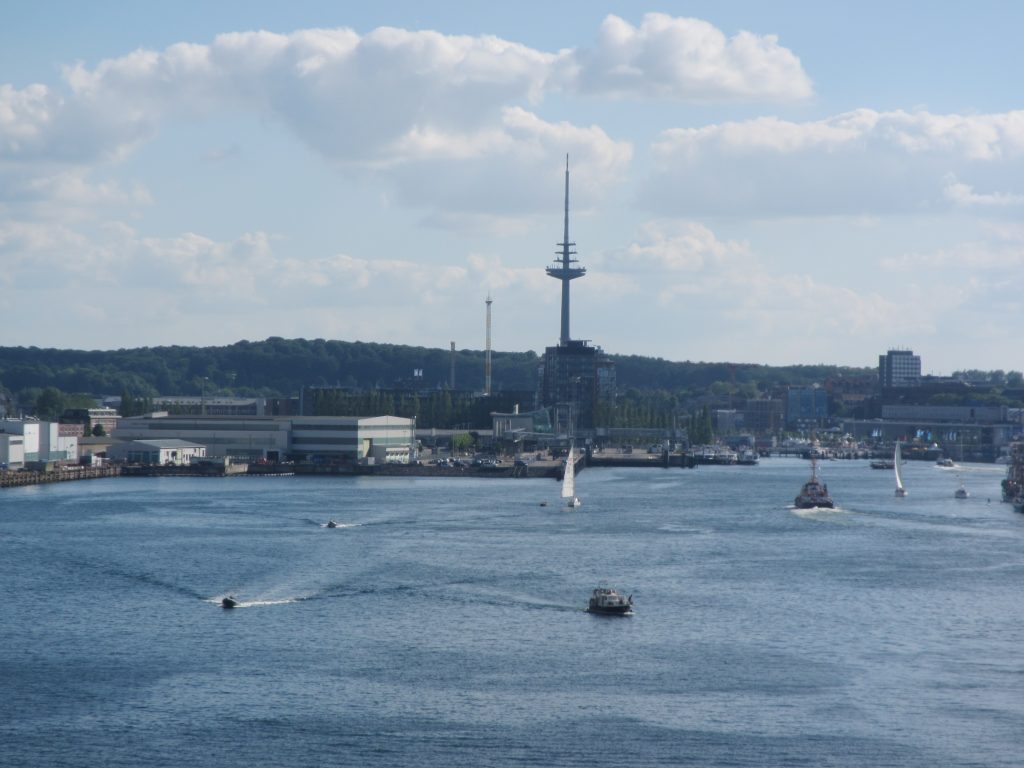
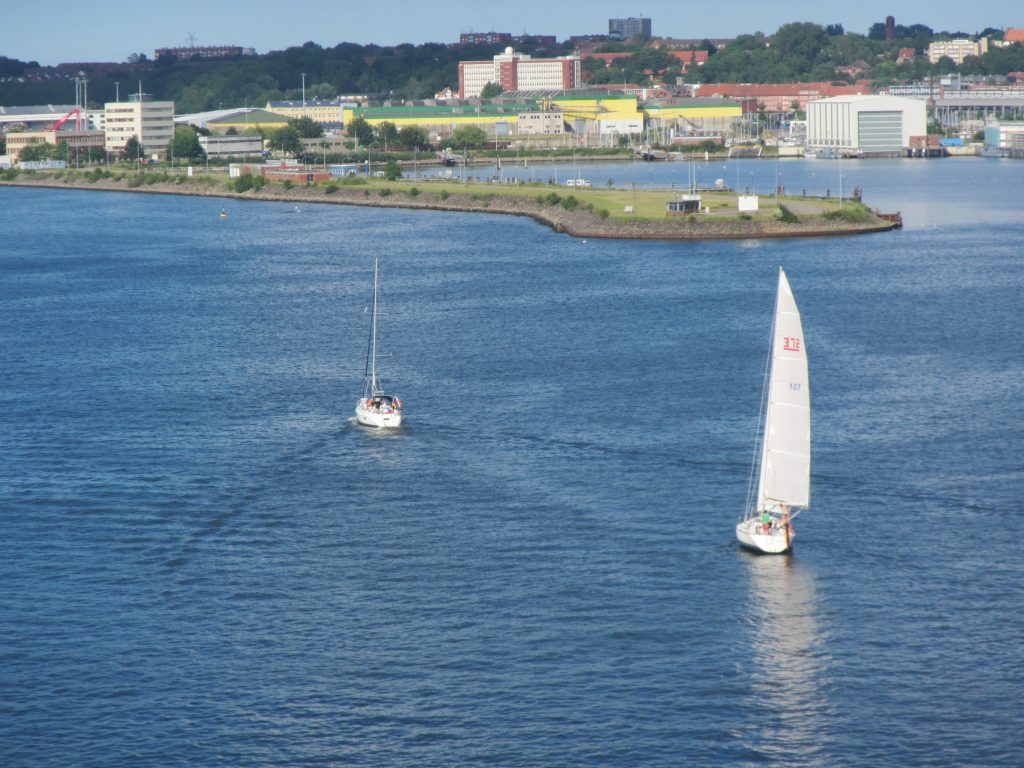
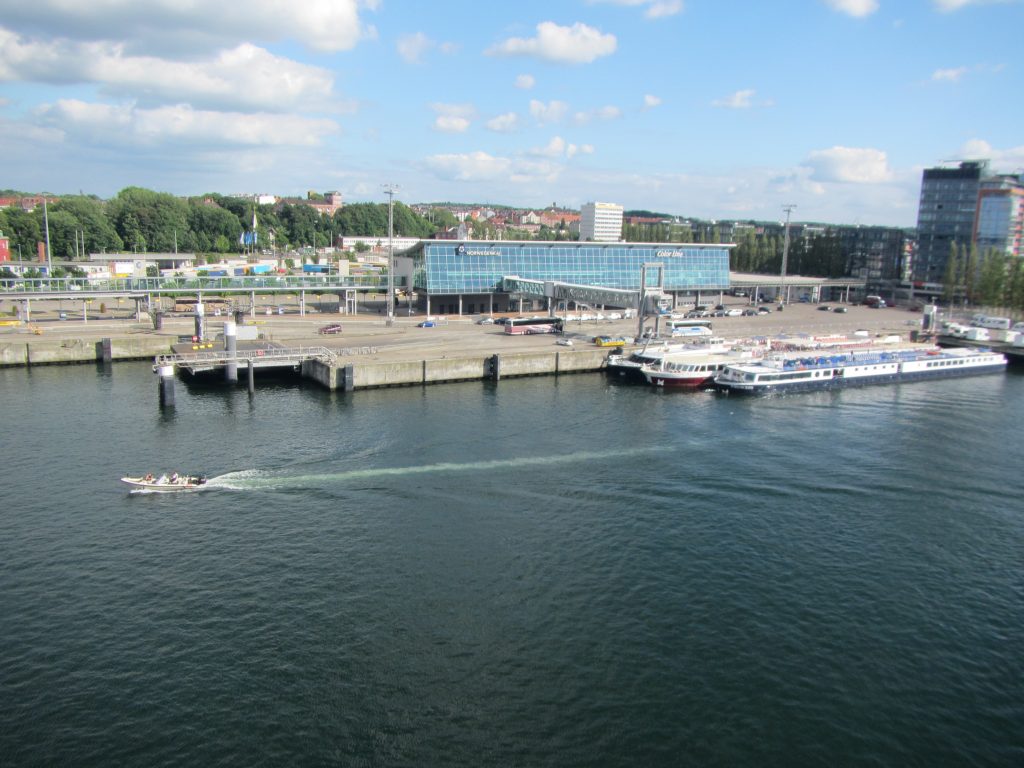
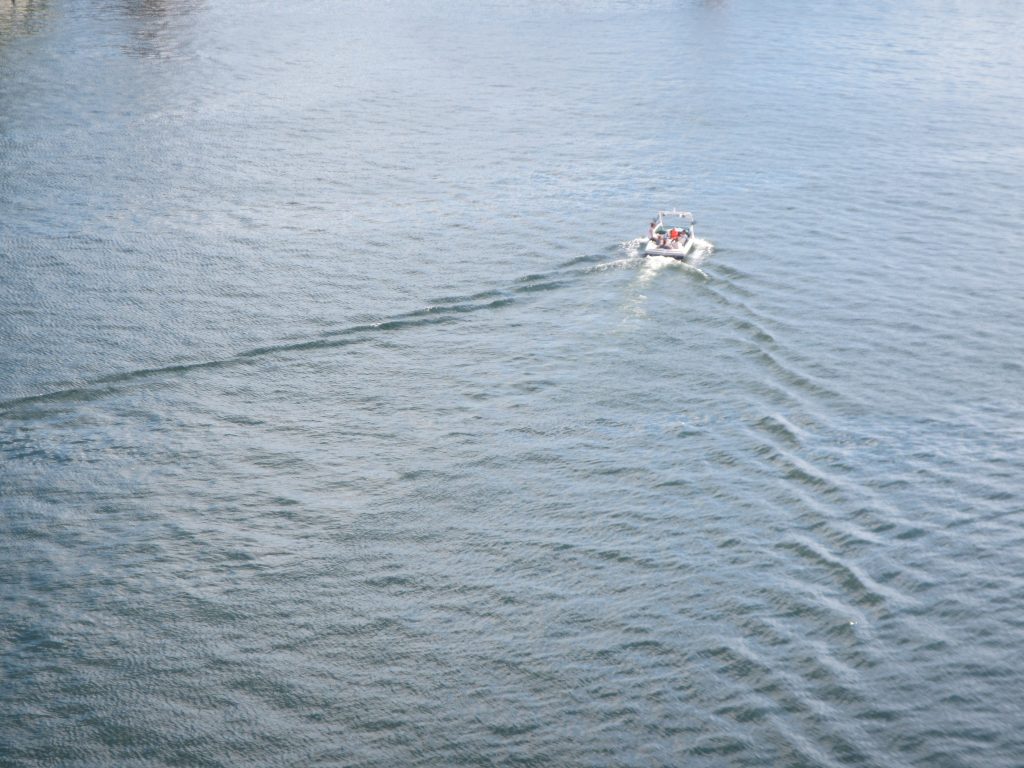
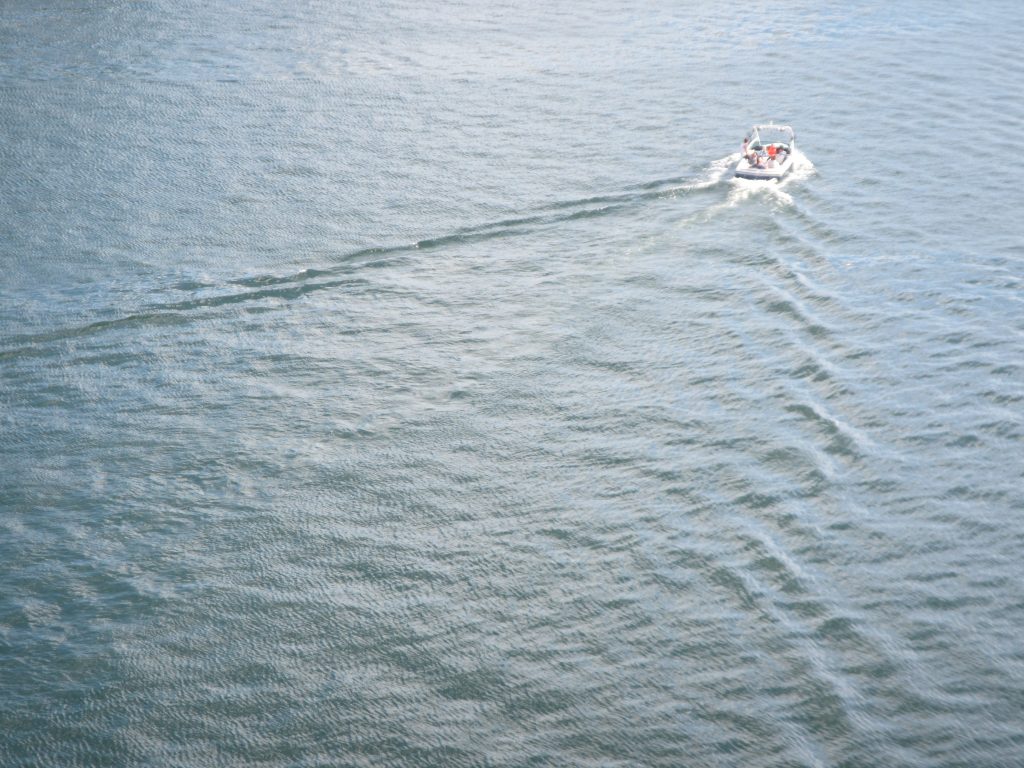
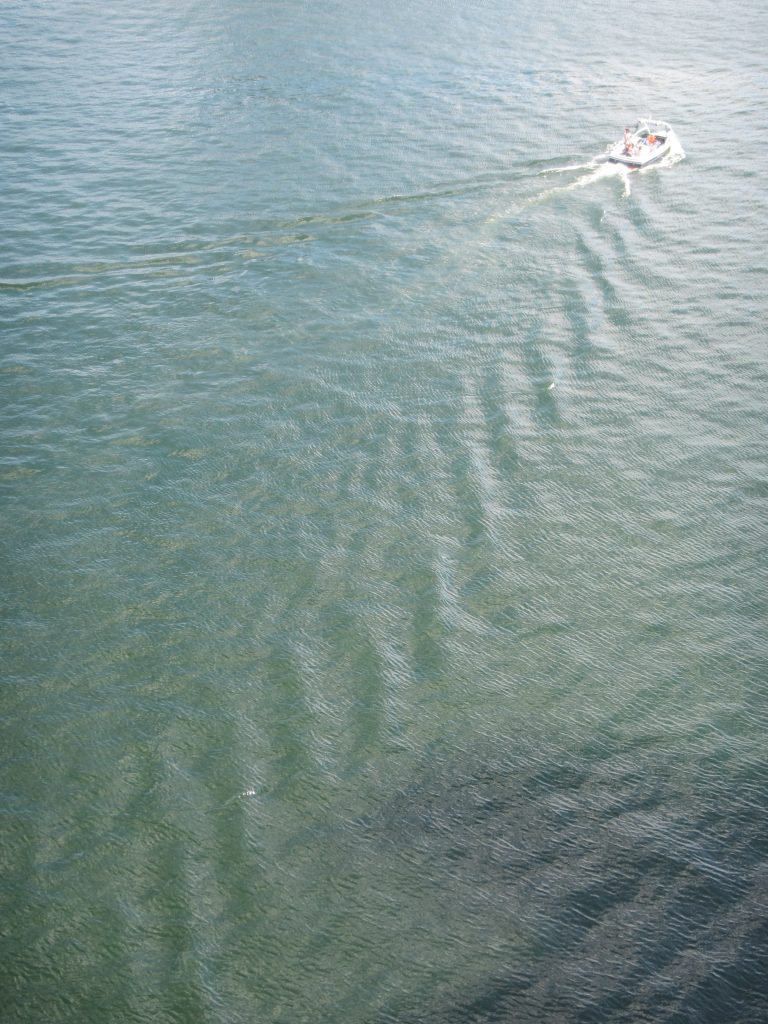
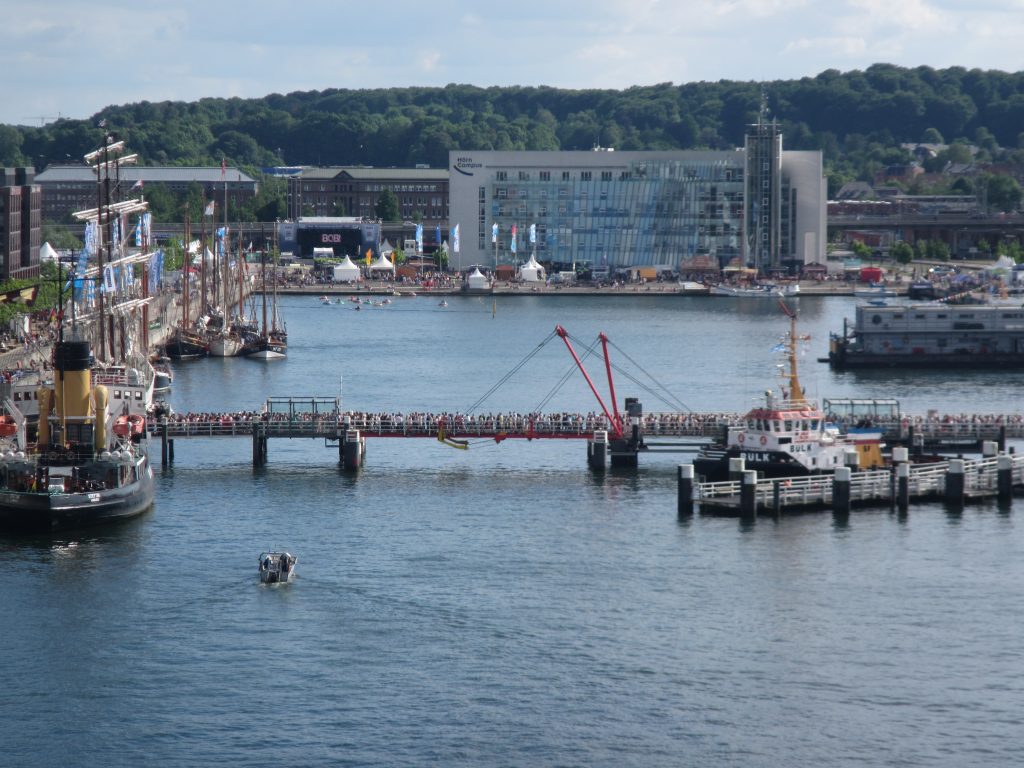
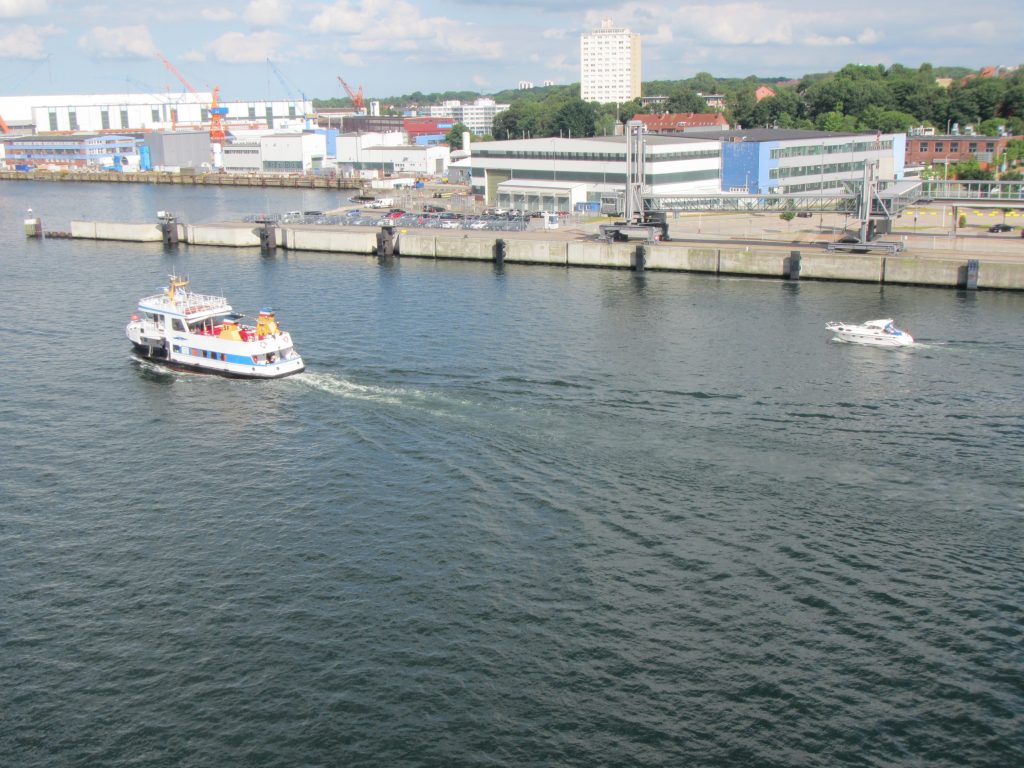
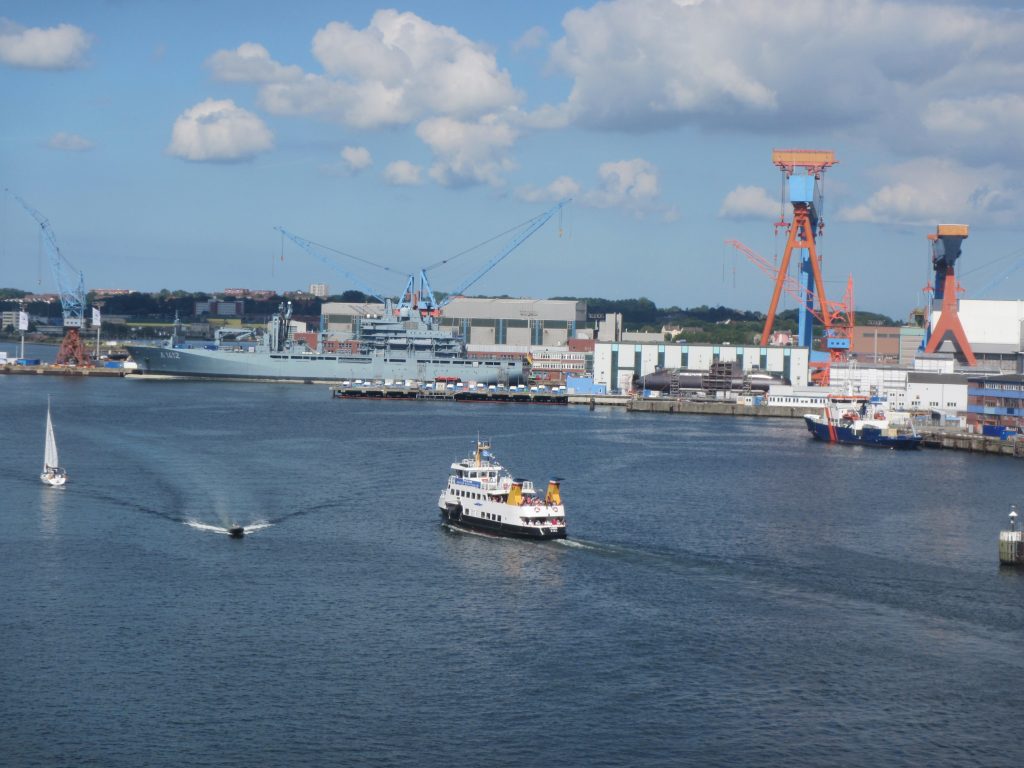
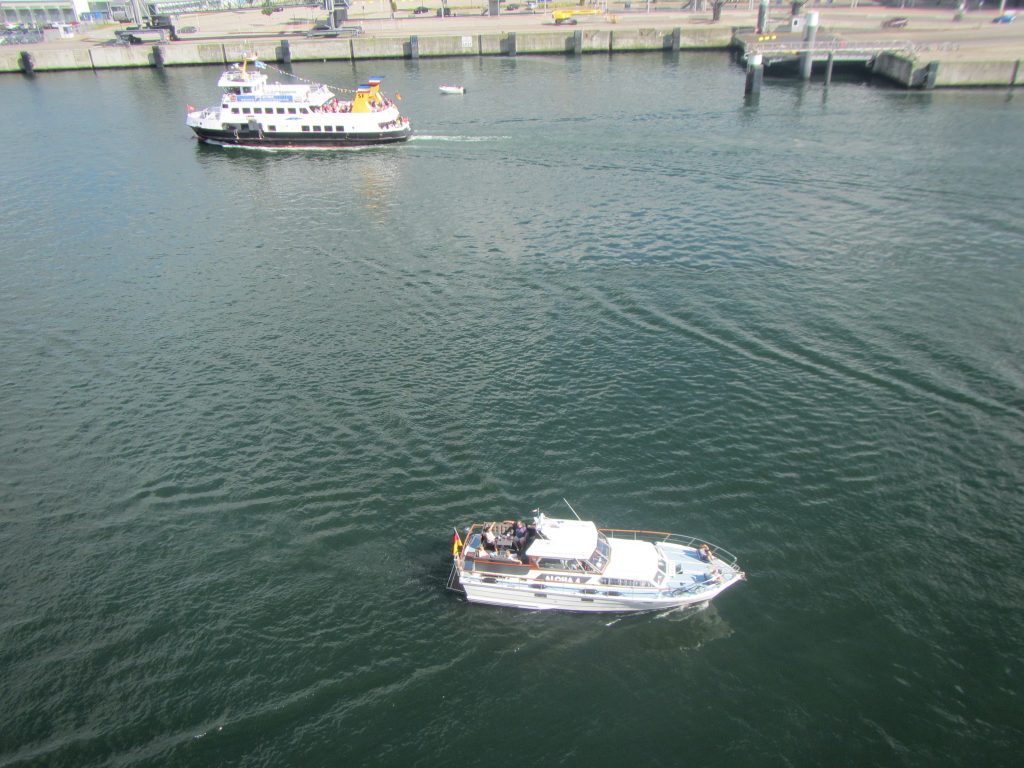
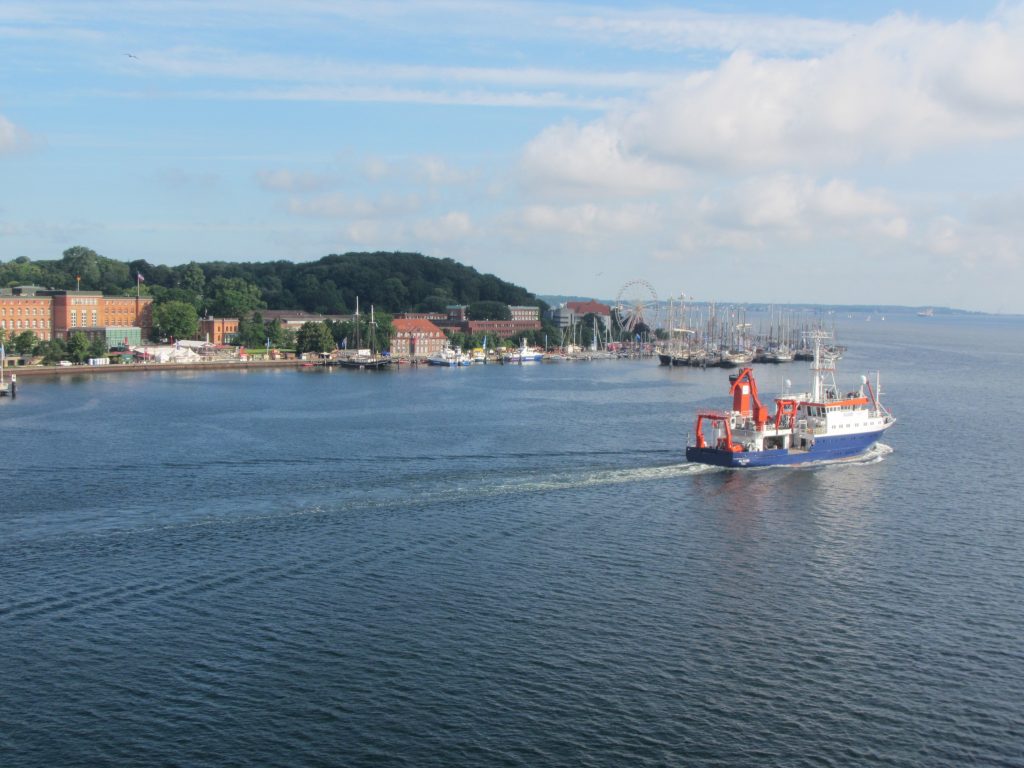
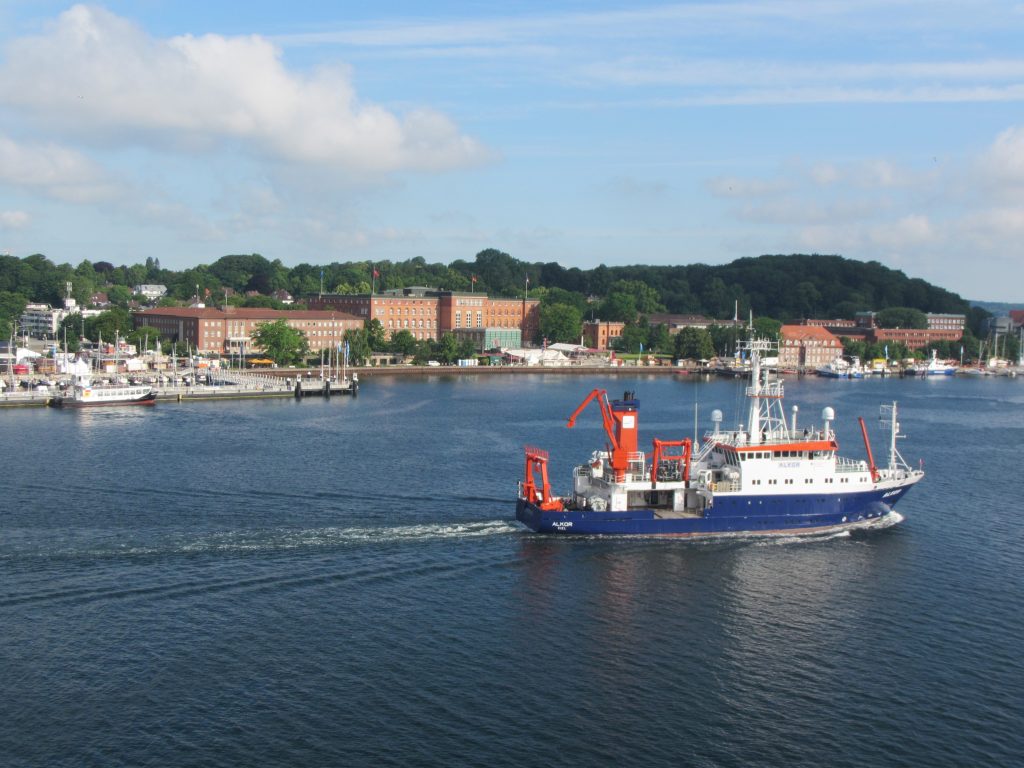
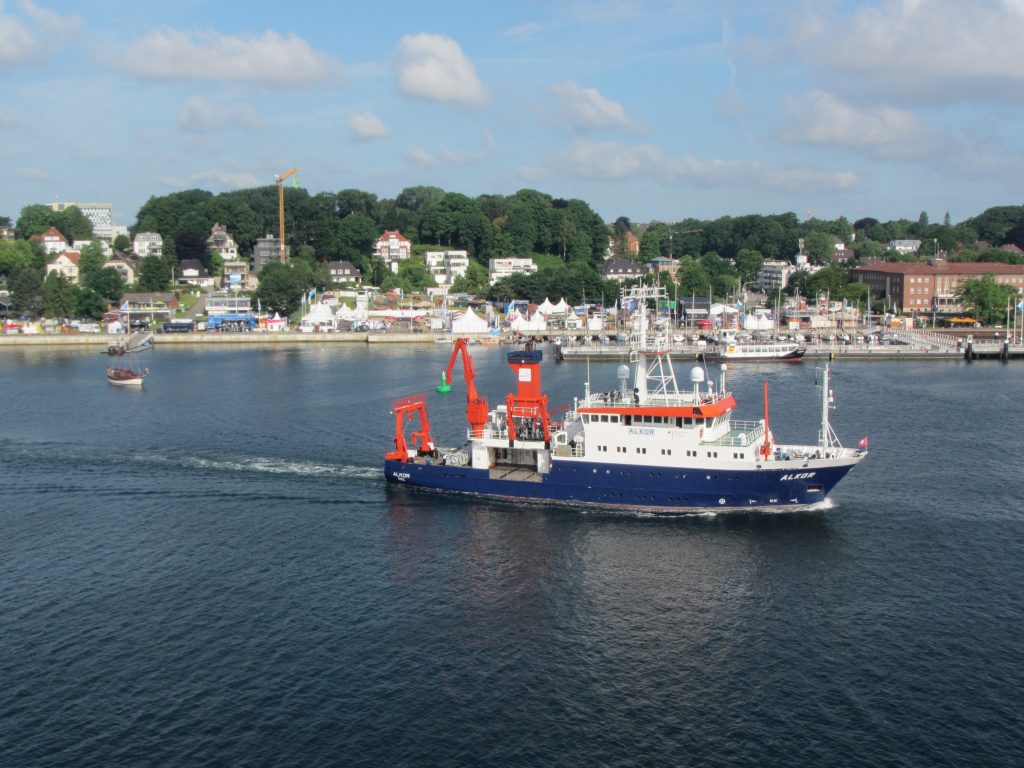

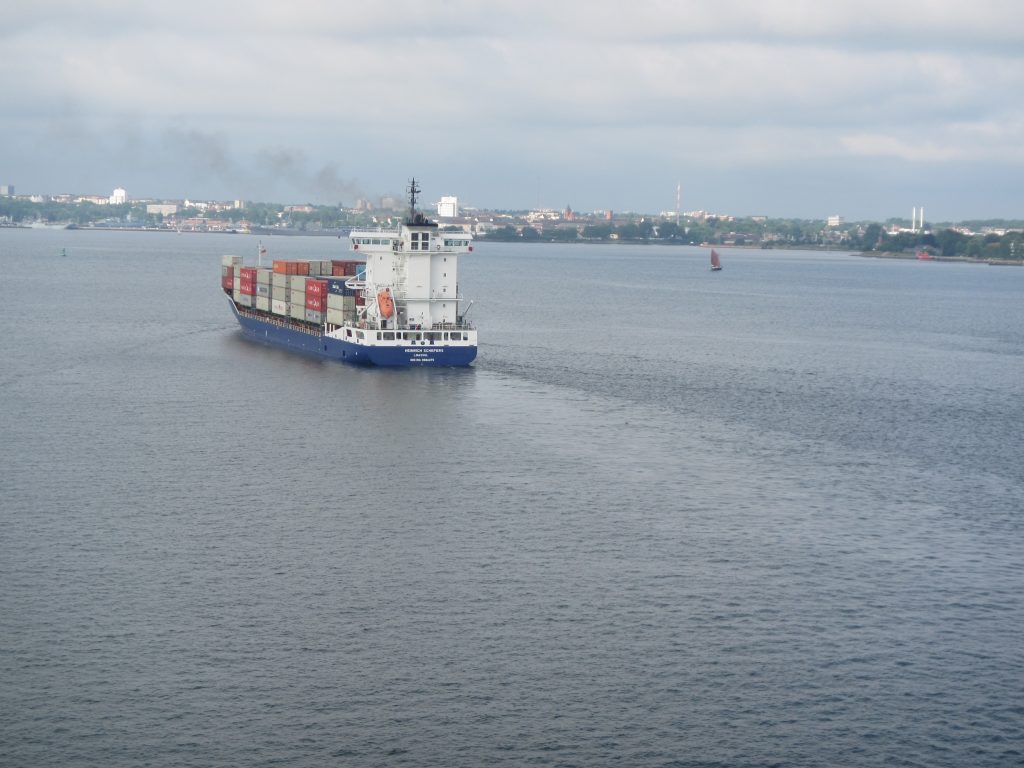
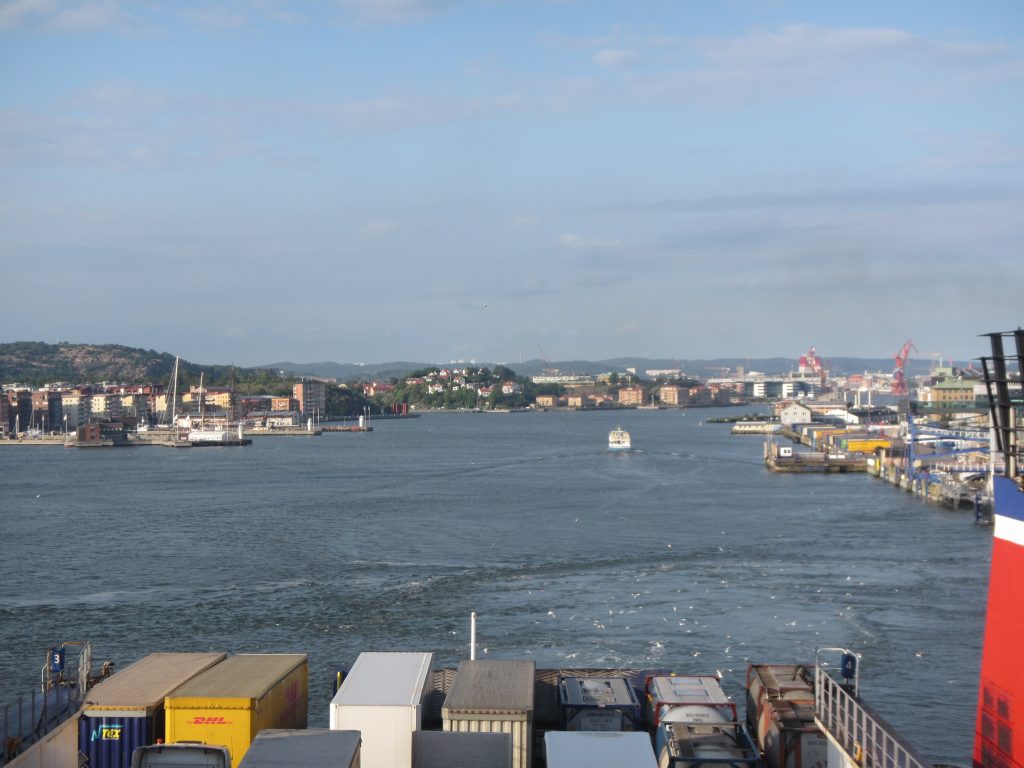
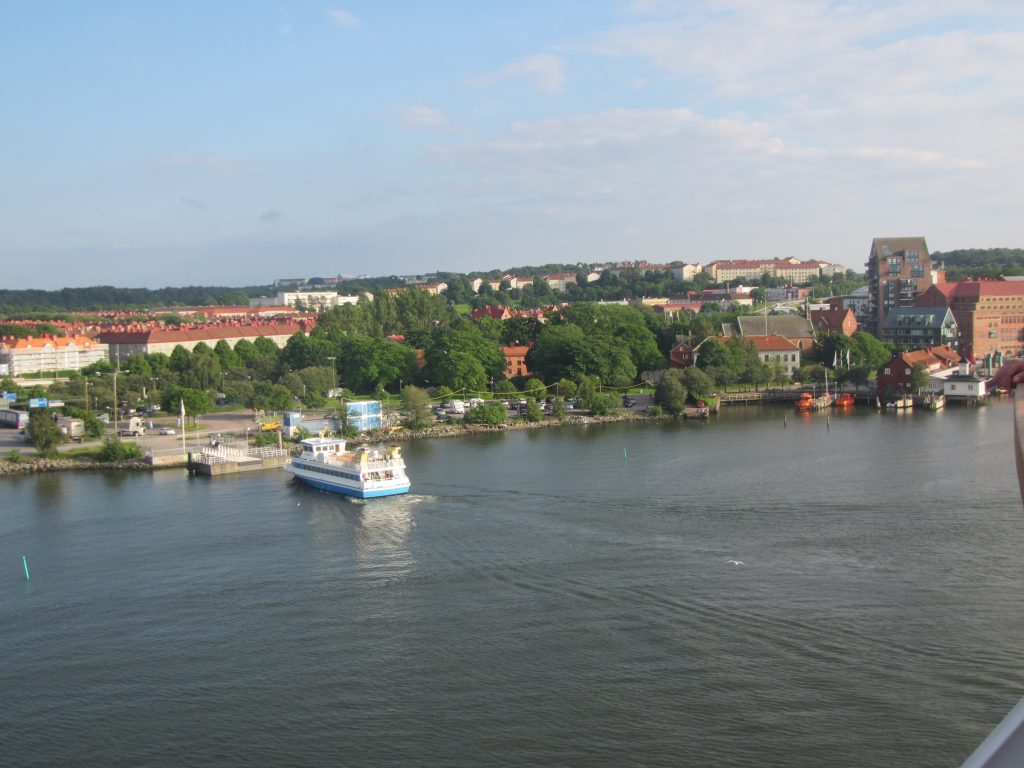
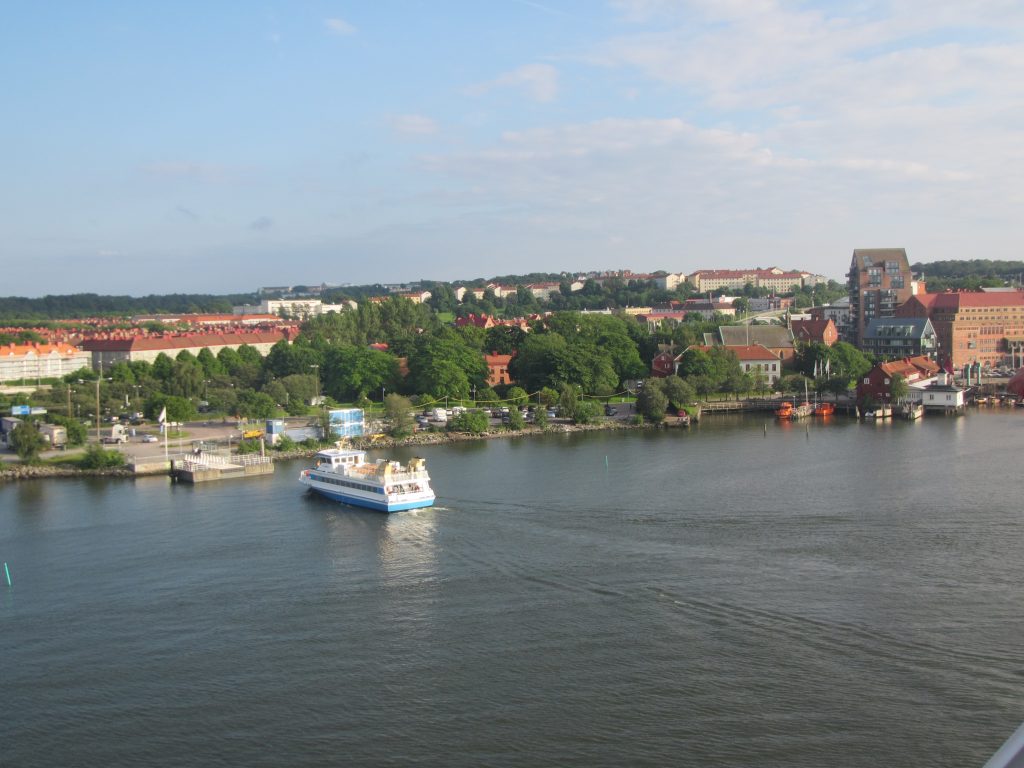
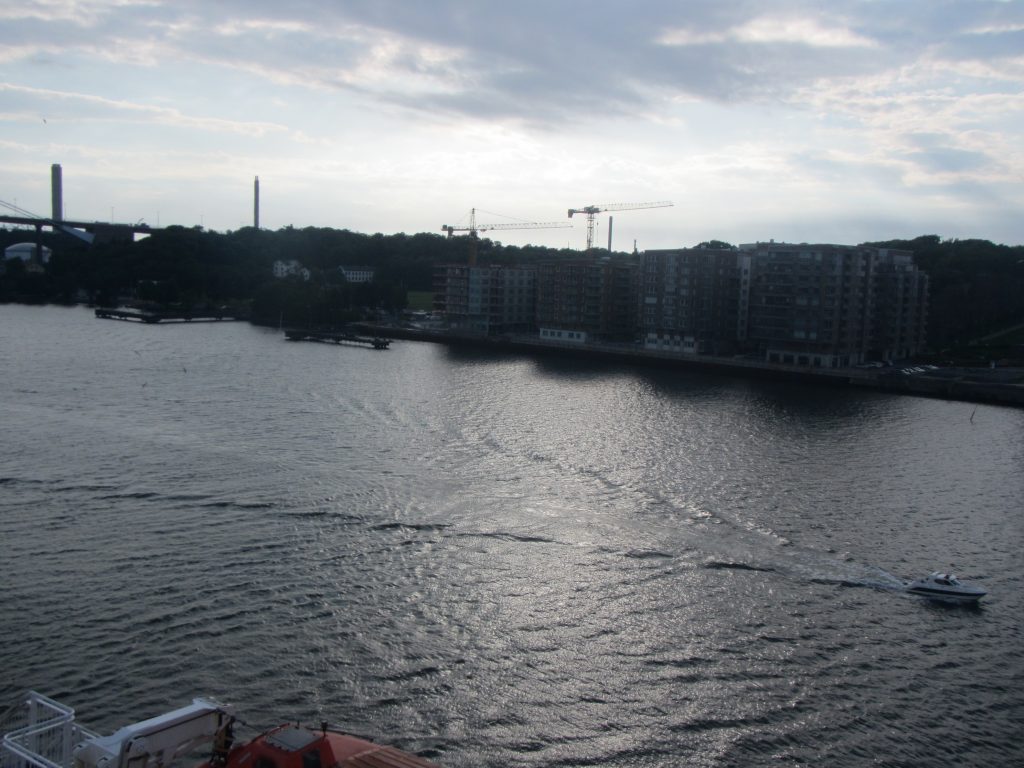
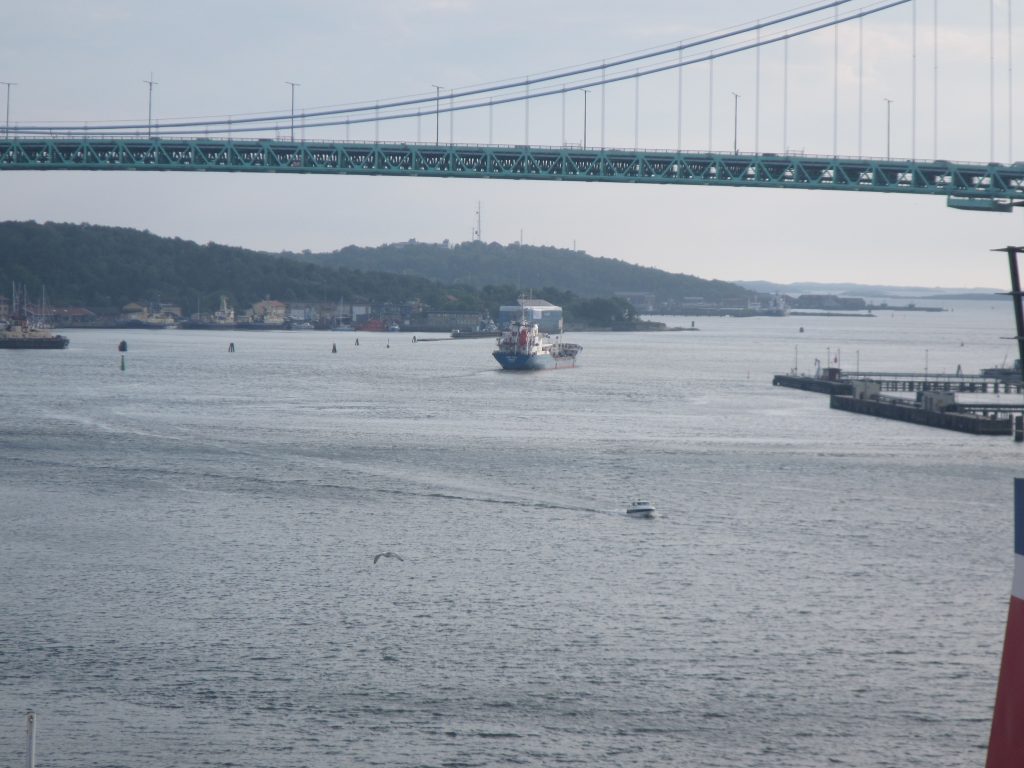
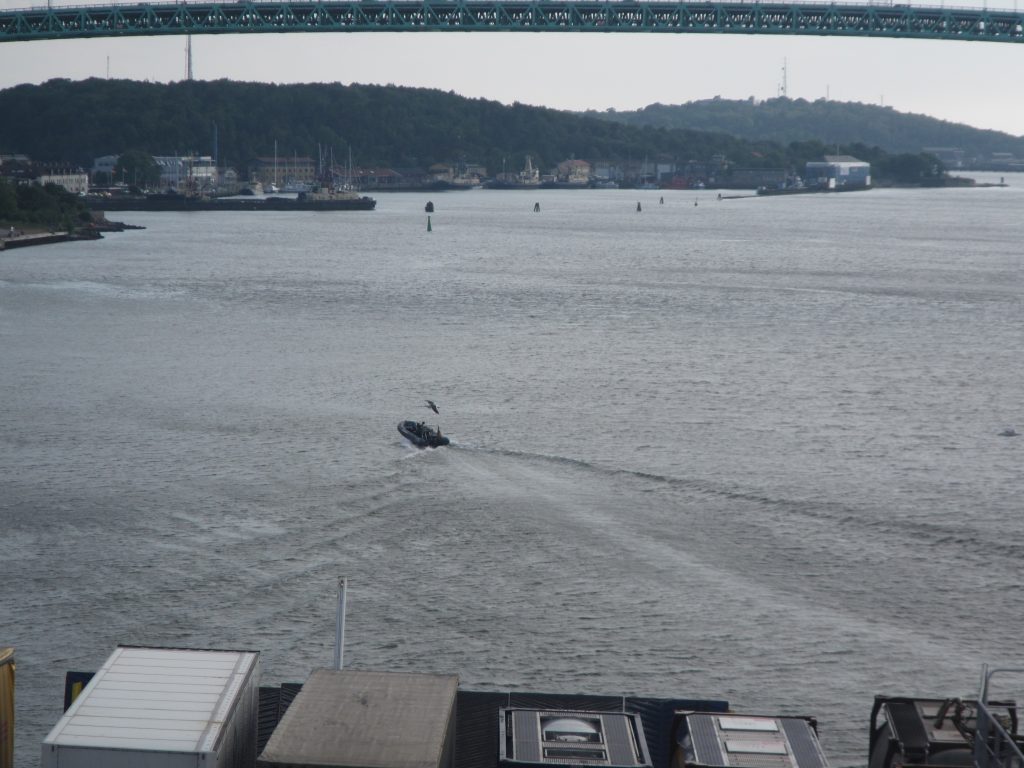
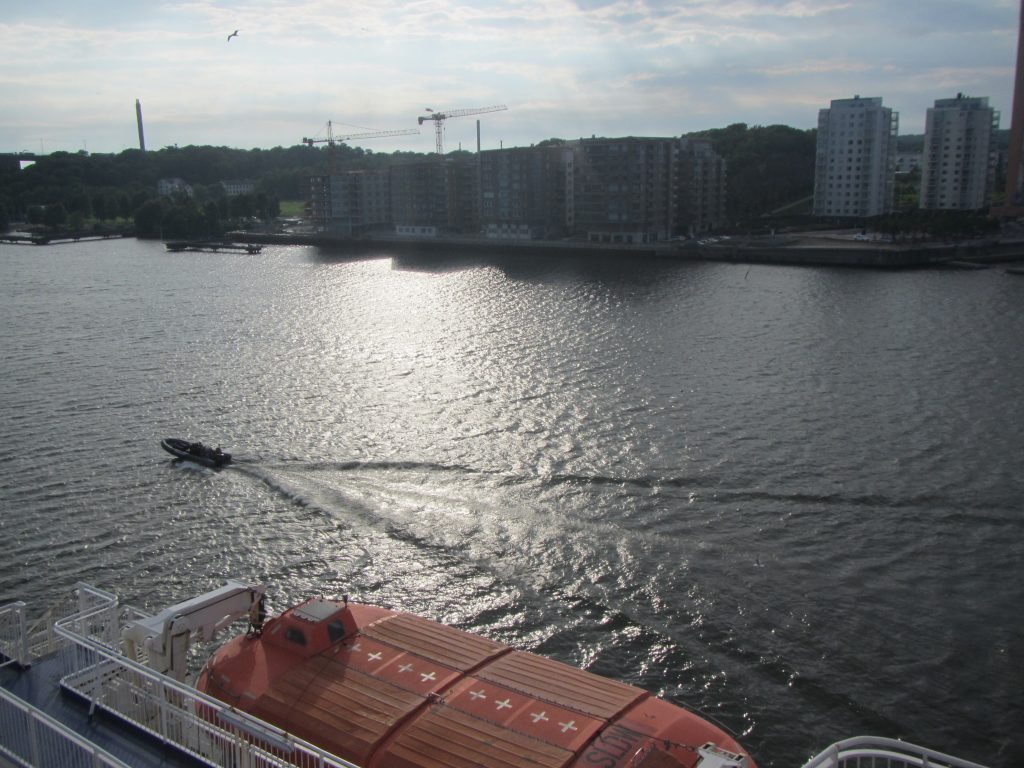
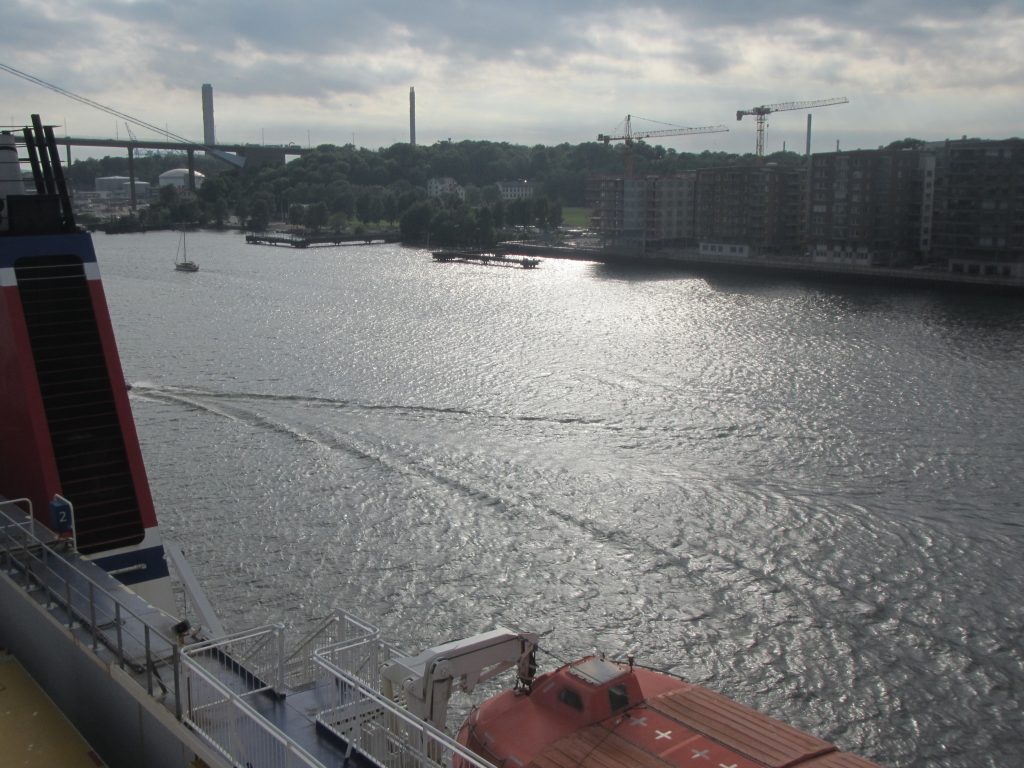
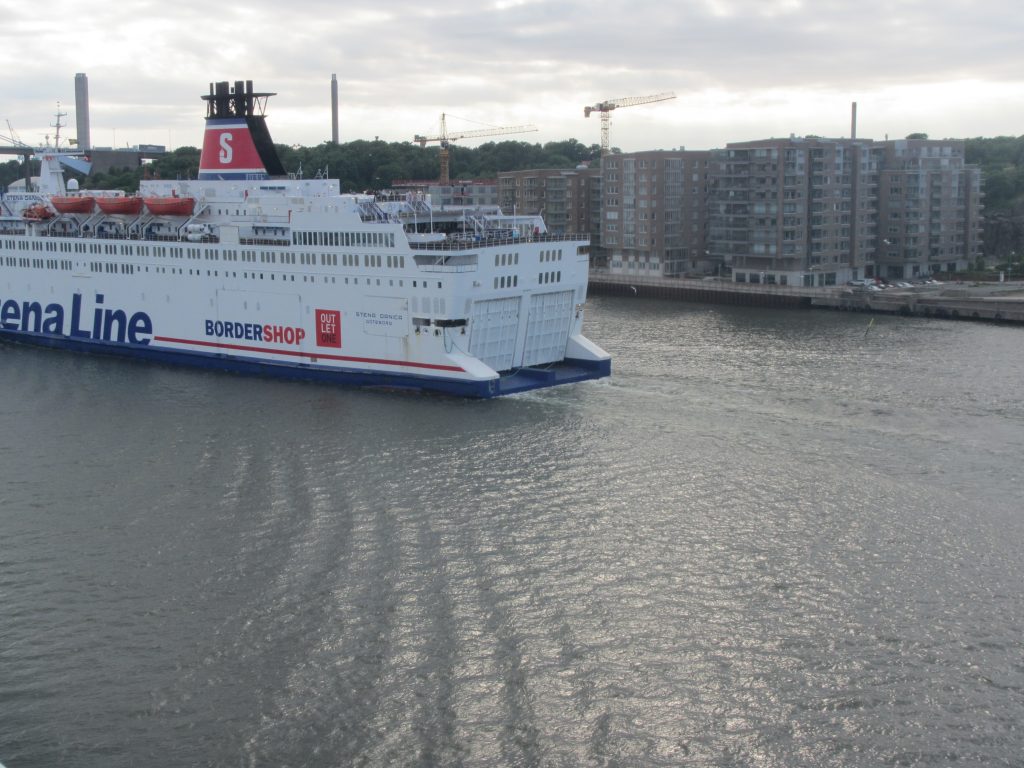
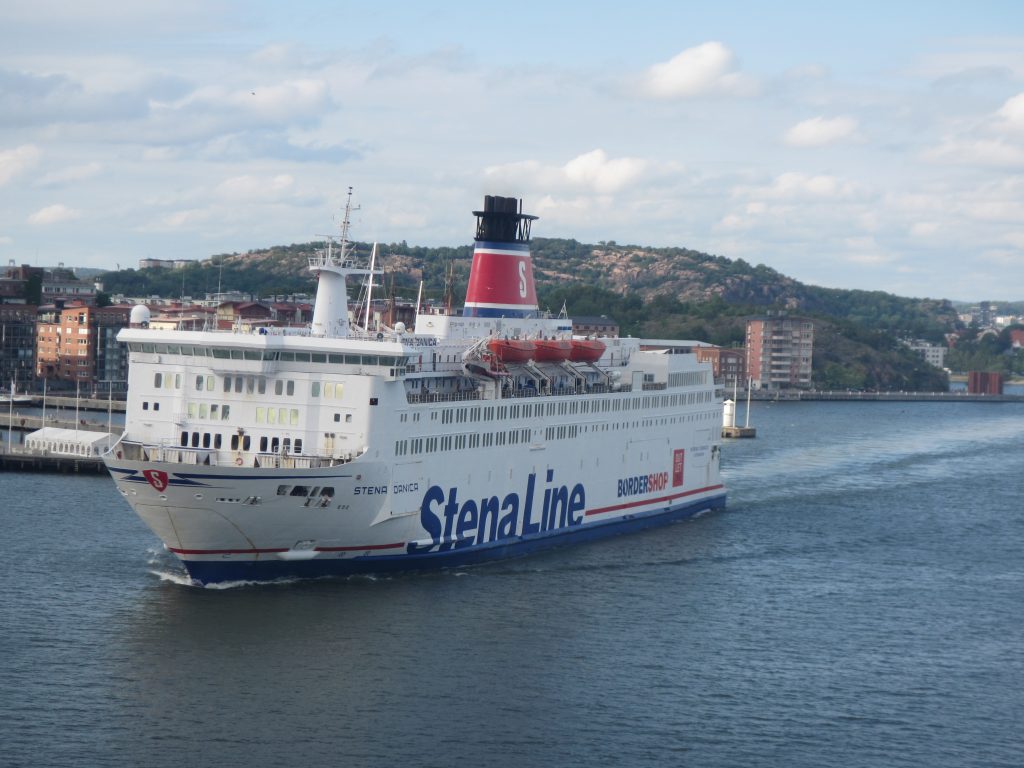
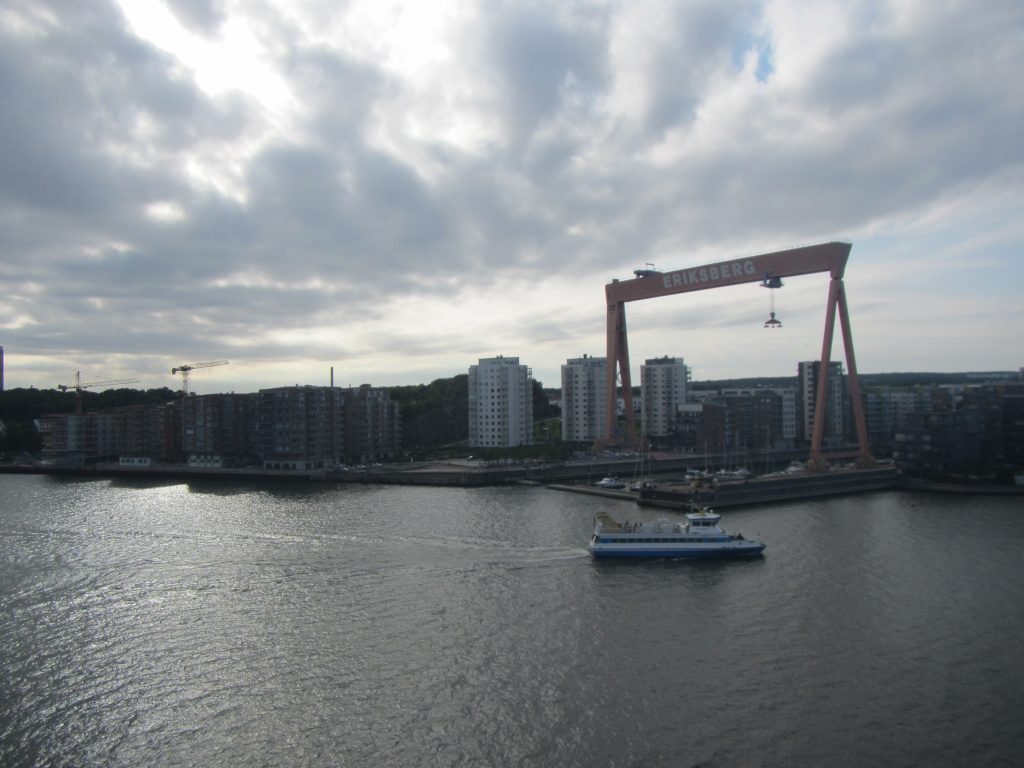
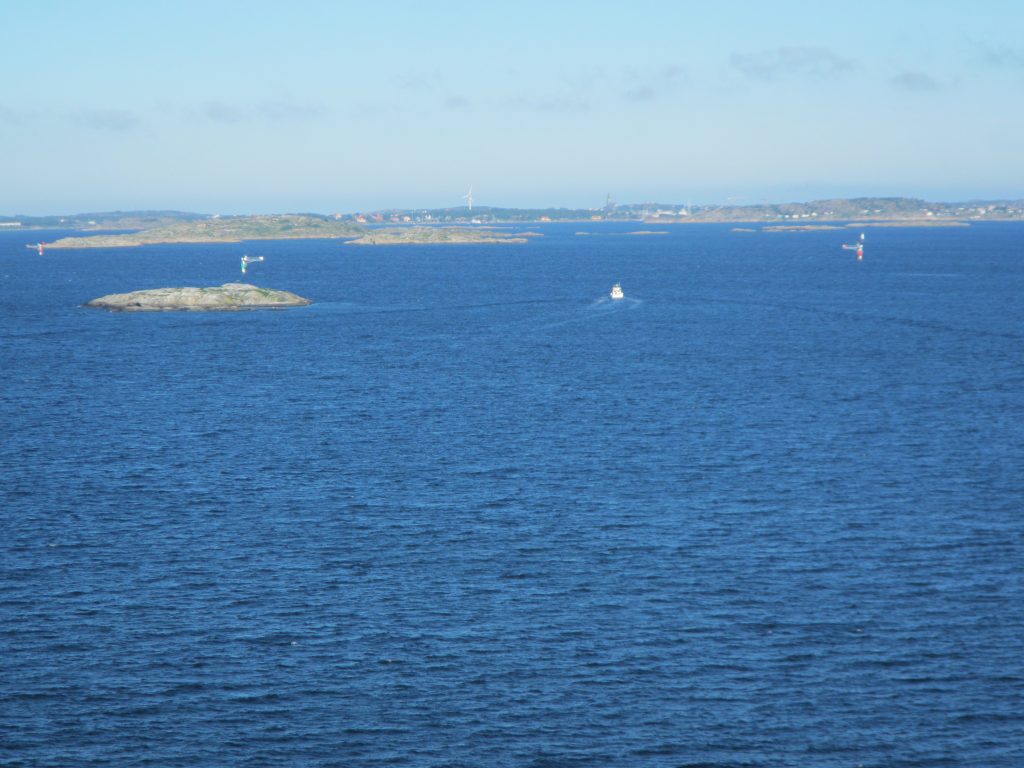
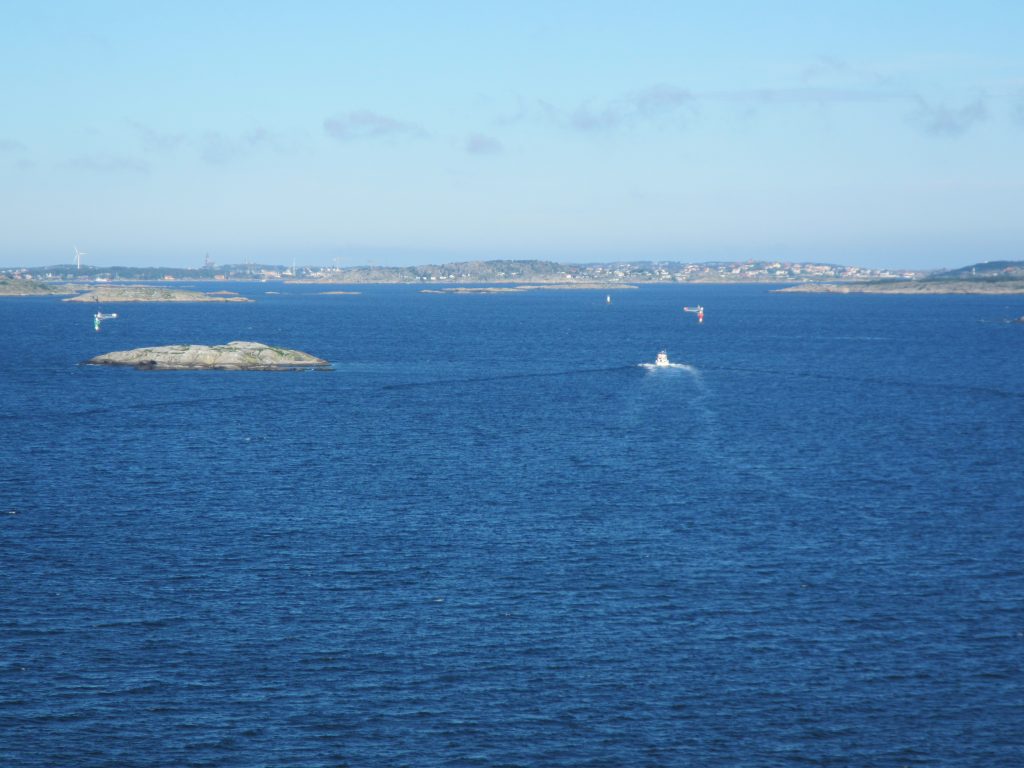
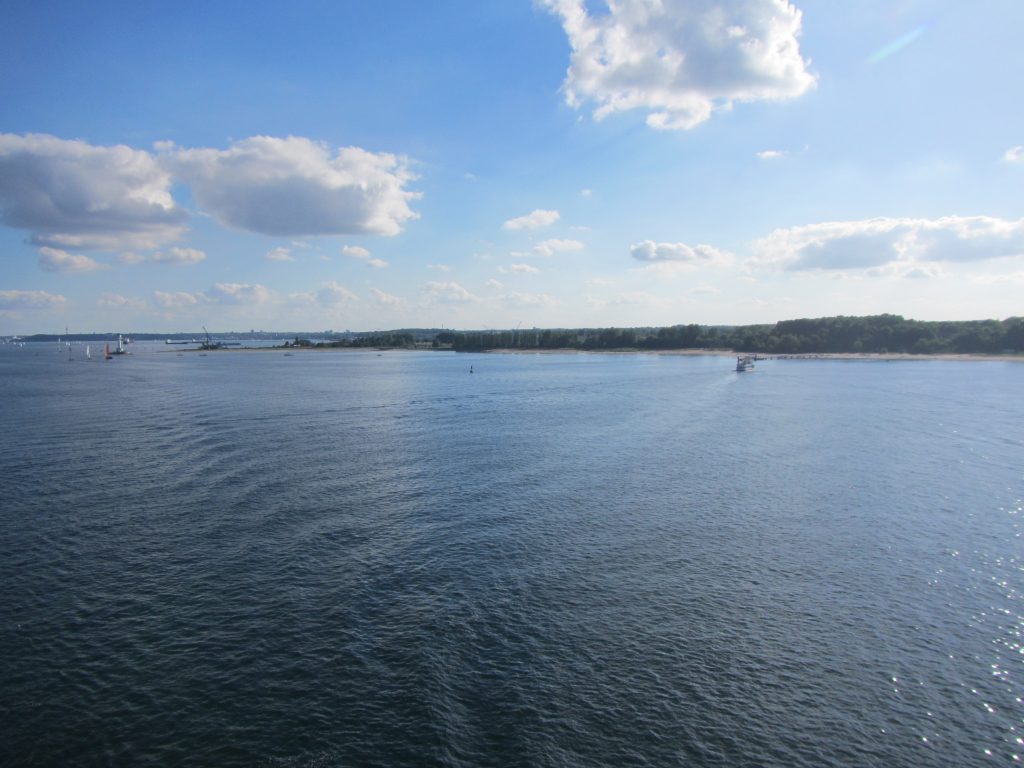
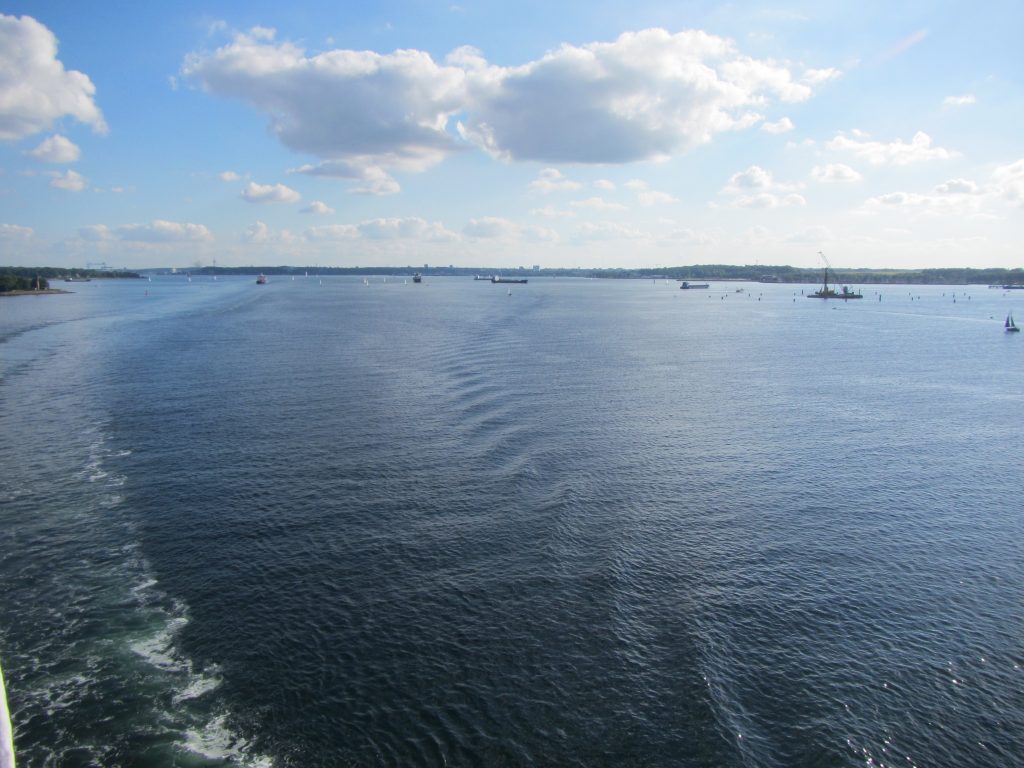
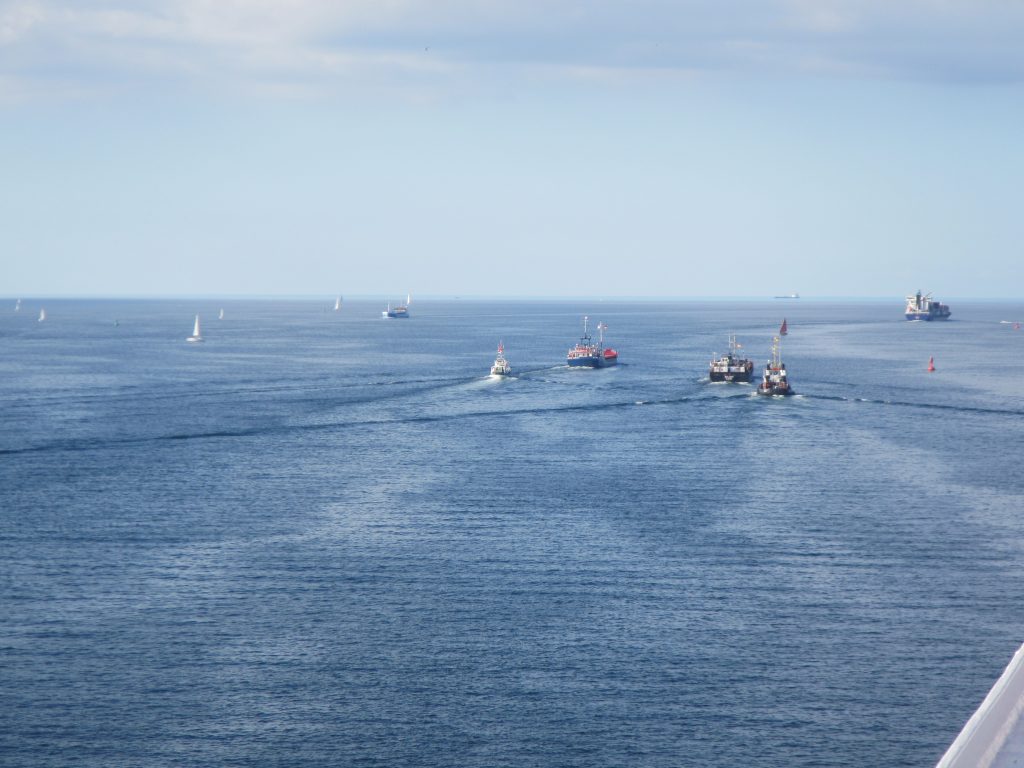
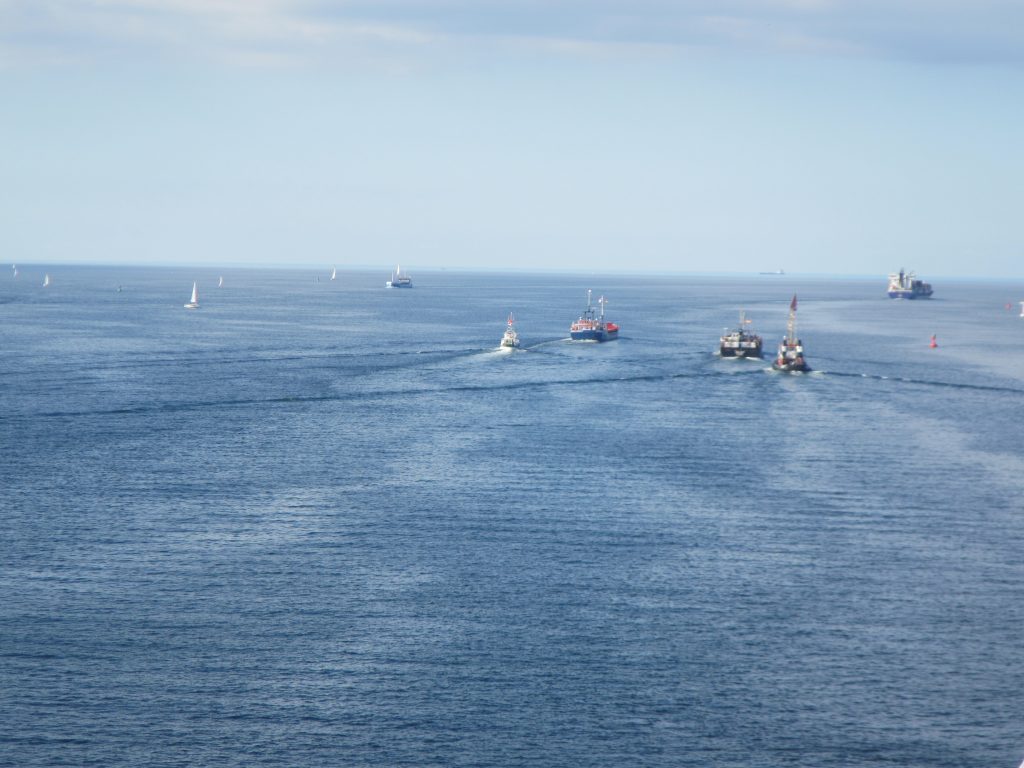
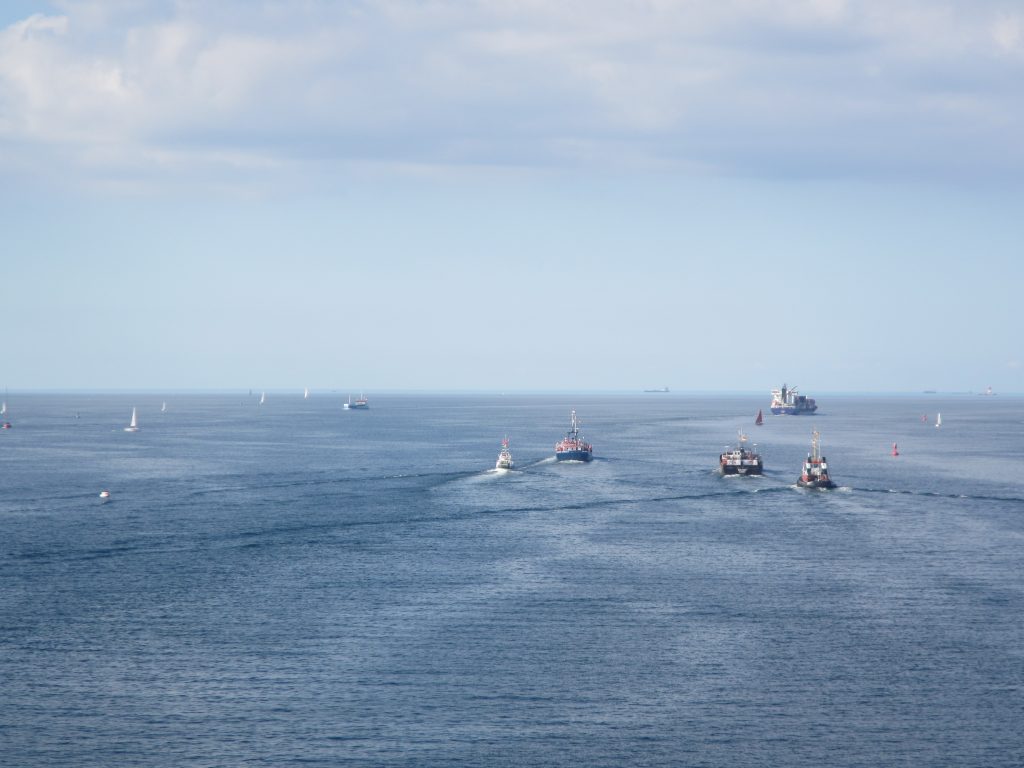
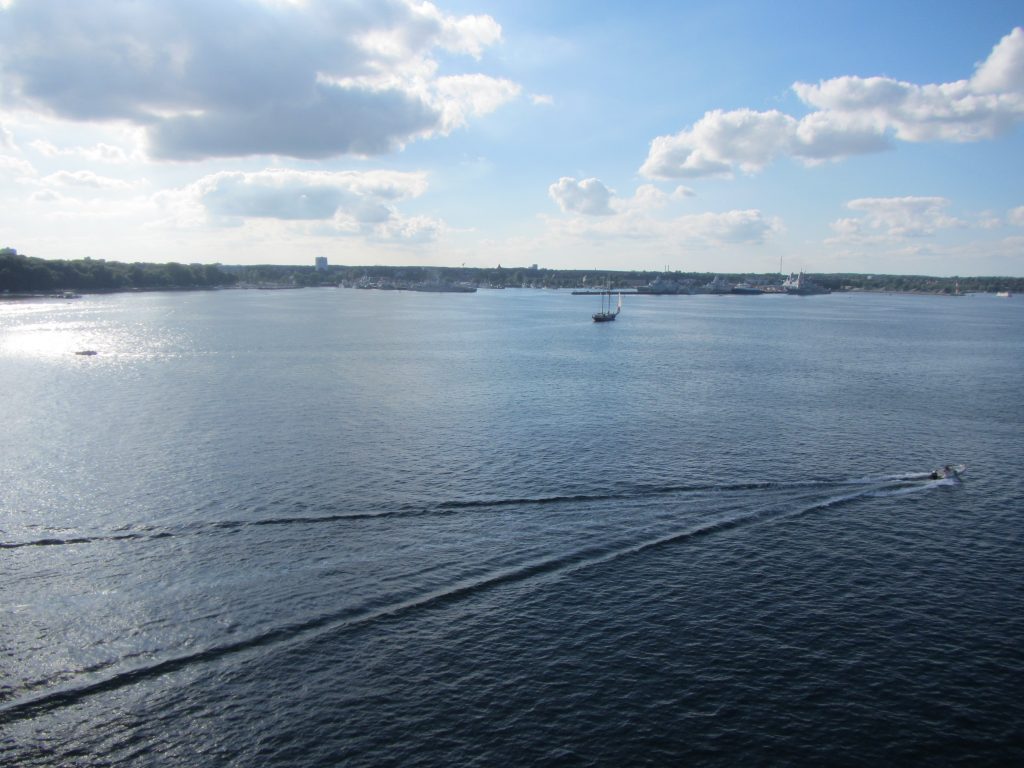
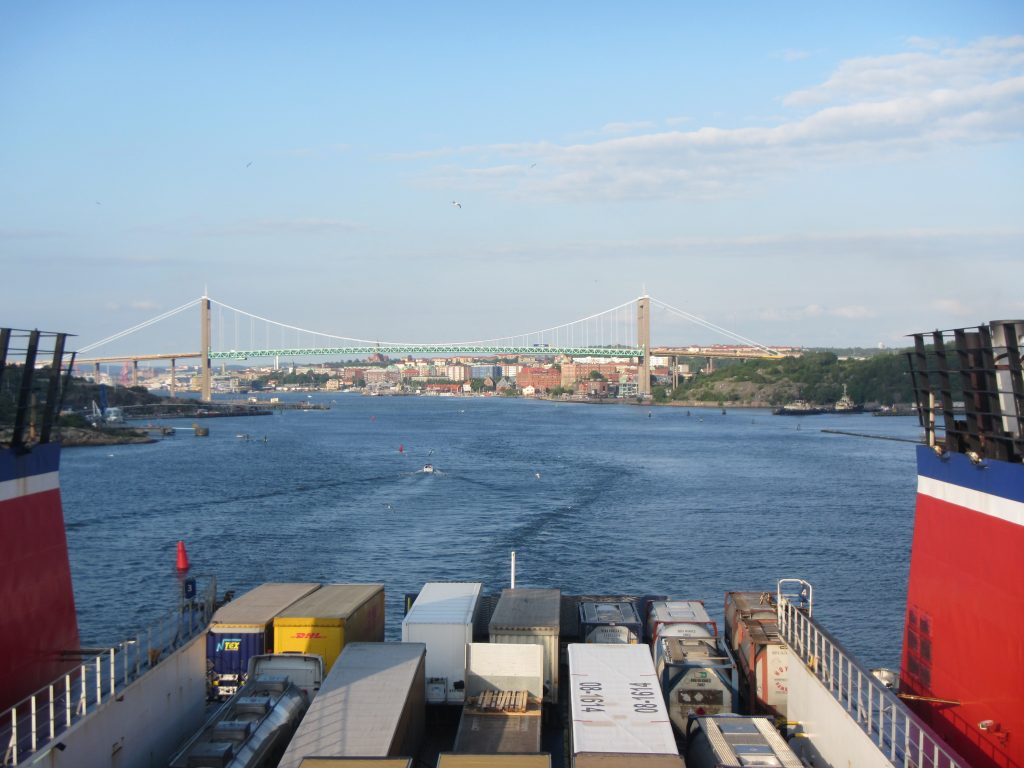
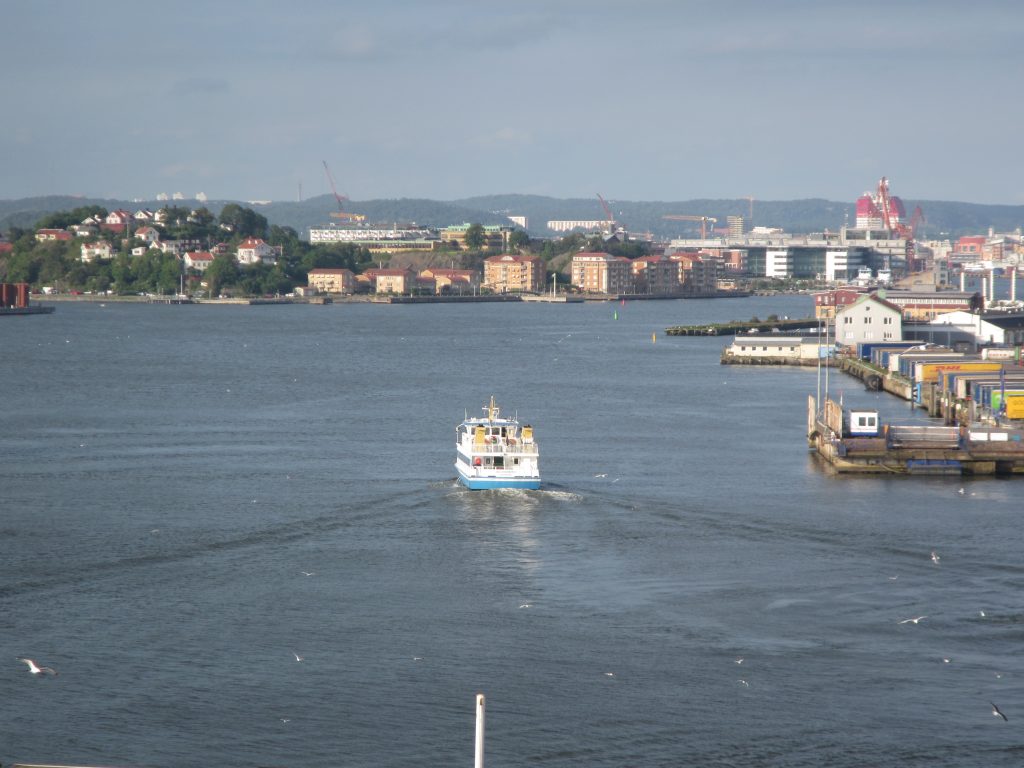
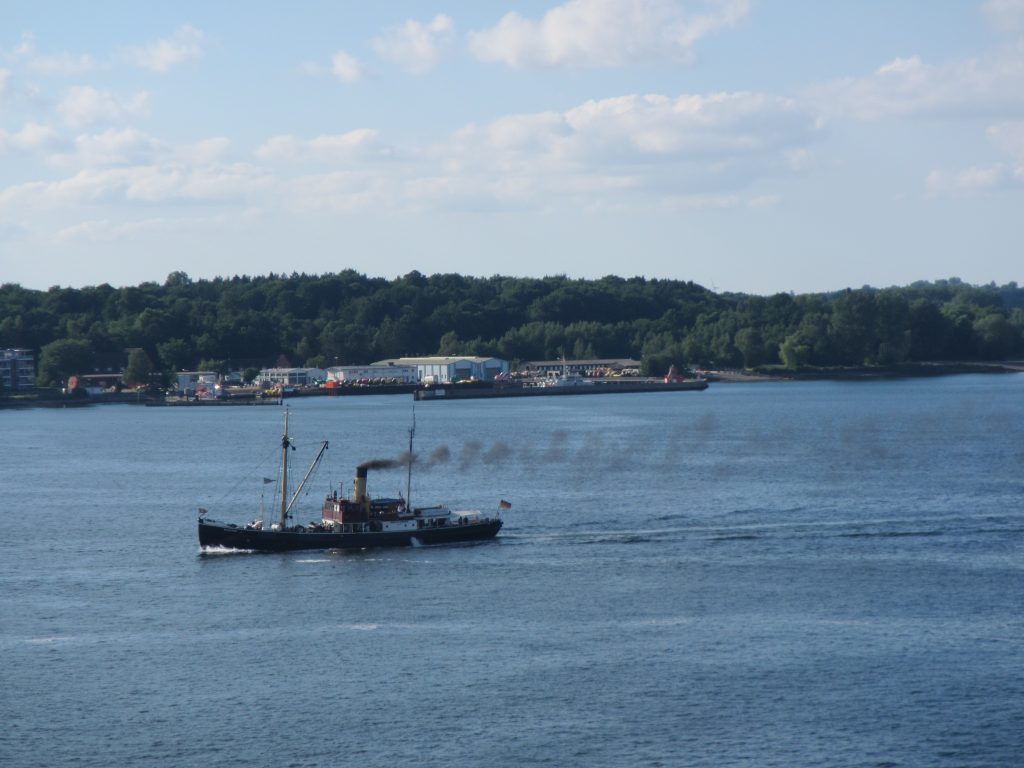
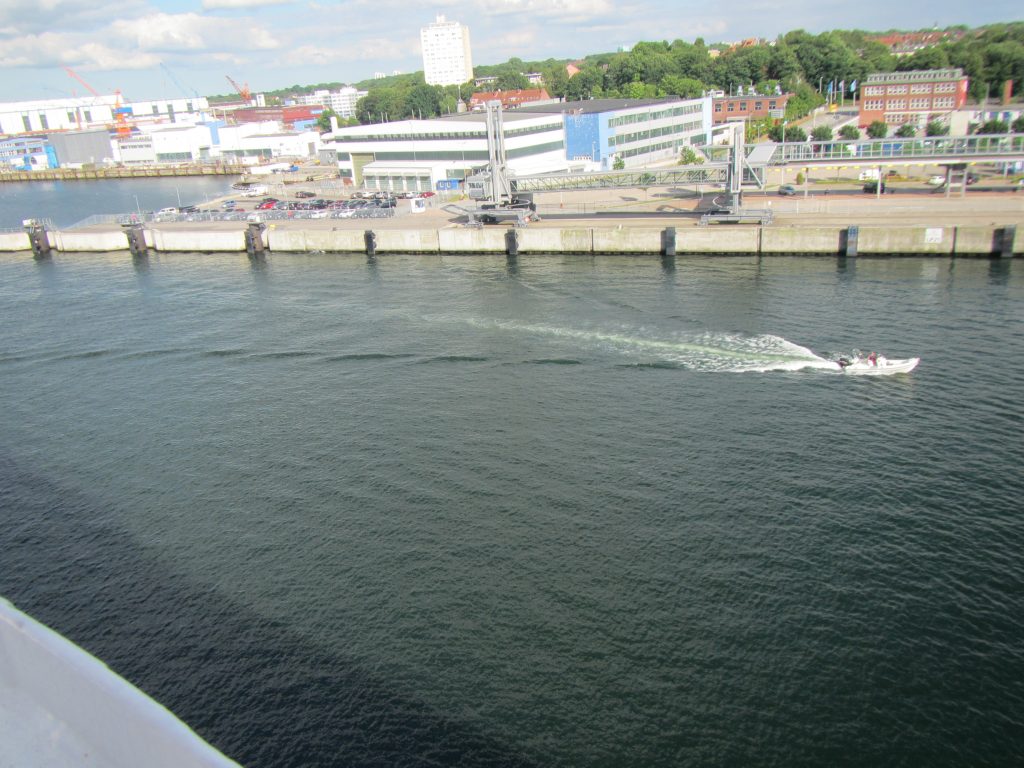
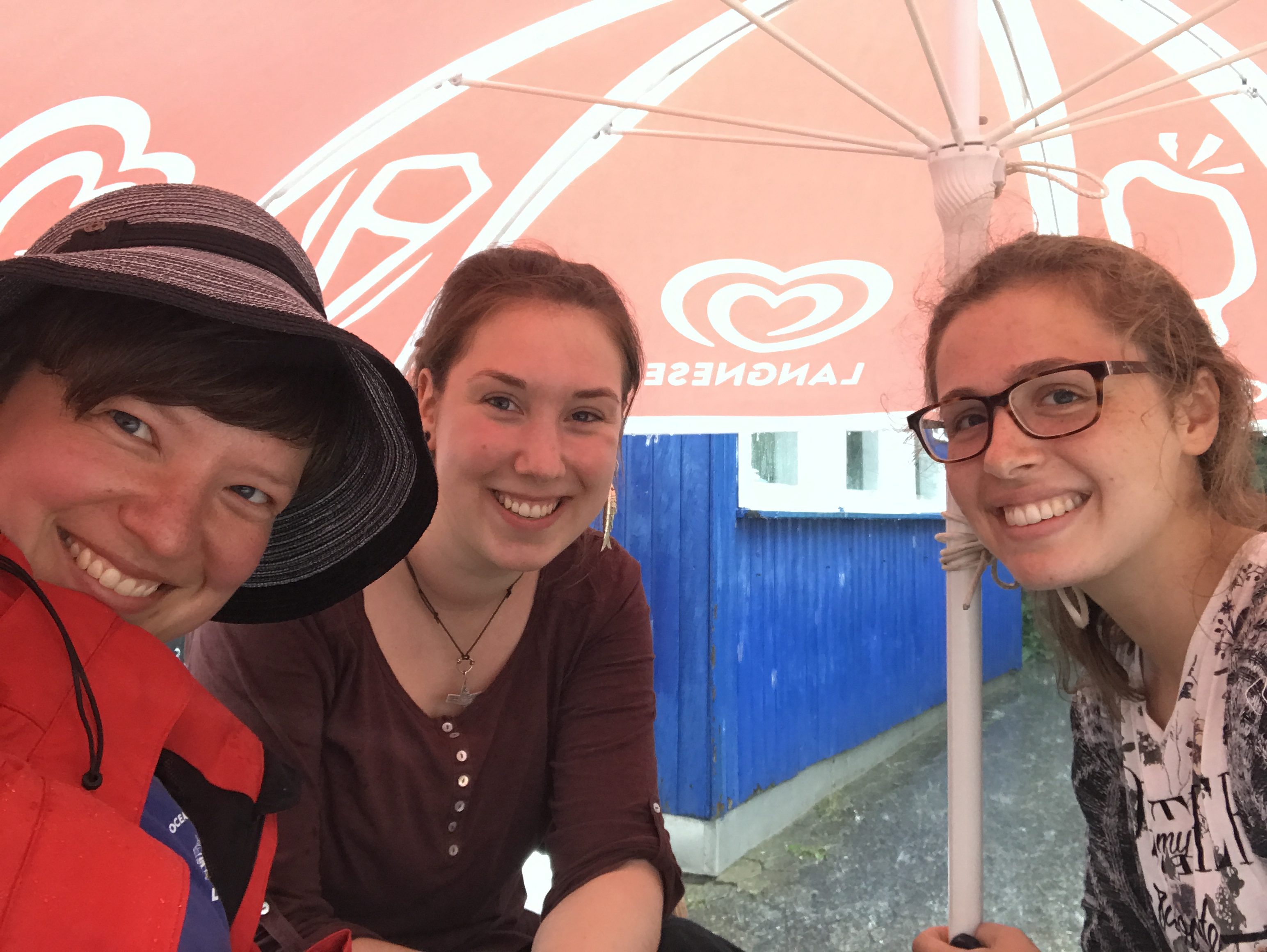
Last week, we ran an “expedition learning” course for 17-year olds. They were separated into several groups, working on different topics, and mine (unsurprisingly) worked on waves. You can see here what kind of stuff we observed when first testing the stretch of coastline we wanted to do our expedition to. And now you’ll get a picture dump of the actual expedition.
We started out in not-so-ideal-but-really-not-too-bad-either kind of weather, as you can read off the tracks below: It had been raining a little, but not very hard, and it had stopped by the time we got there.
The drift lines looked quite promising.
My group dove right into it (only figuratively, luckily, not literally). However I wasn’t quite sure if this guy knew what he was getting into?
At this point we were still very close to the car, so I thought that it might be quite smart strategically to let them figure out here how high the waders go and what happens if the waves are higher than the waders… And the wakes of two ships meeting up at a headland are a very good place to learn about that kind of things!
This headland is a very good place to start observing waves in any case. Especially at the typical wind direction found here. Because then, looking back from the light house to the land, you see a large area that is sheltered where waves only build up gradually. Which is a very nice contrast to the waves arriving upwind and makes it very easy to observe differences.
And then if you look downwind from the headland, you see waves sneaking around the headland from both sides. Those coming from the right are from the fully developed wave field that has been growing all the way down Kiel fjord, and then those coming in from the left are the ones that only started growing downwind of the little barrier shown in the picture above.
Can you see it? Maybe easier on a panorama kind of picture?
Of course we always like to look at the ring waves that appear when other waves hit stones…
I didn’t foresee that wave watching would happen mostly from within the water, but the guys in my group made a good case for walking on the sand bank to actually measure the wave hight depending on the water depth (rather than just observing and estimating from dry land, as I would have done), but why not?
Luckily, they found the shallowest part of the sand bank in exactly the same spot I would have told them to look for it based on the wave field ;-)
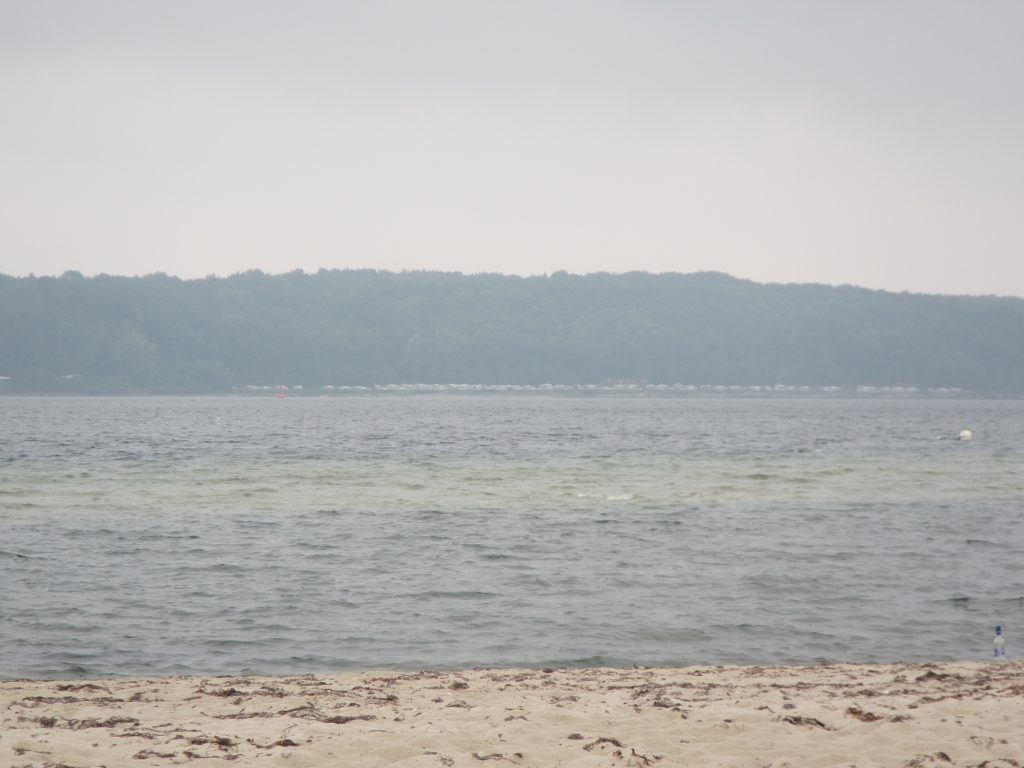
Btw, a nice example of coastal dynamics right below. We had a coastal dynamics group, too, but I don’t even know if they looked at this kind of stuff, I mainly saw them taking soil samples.
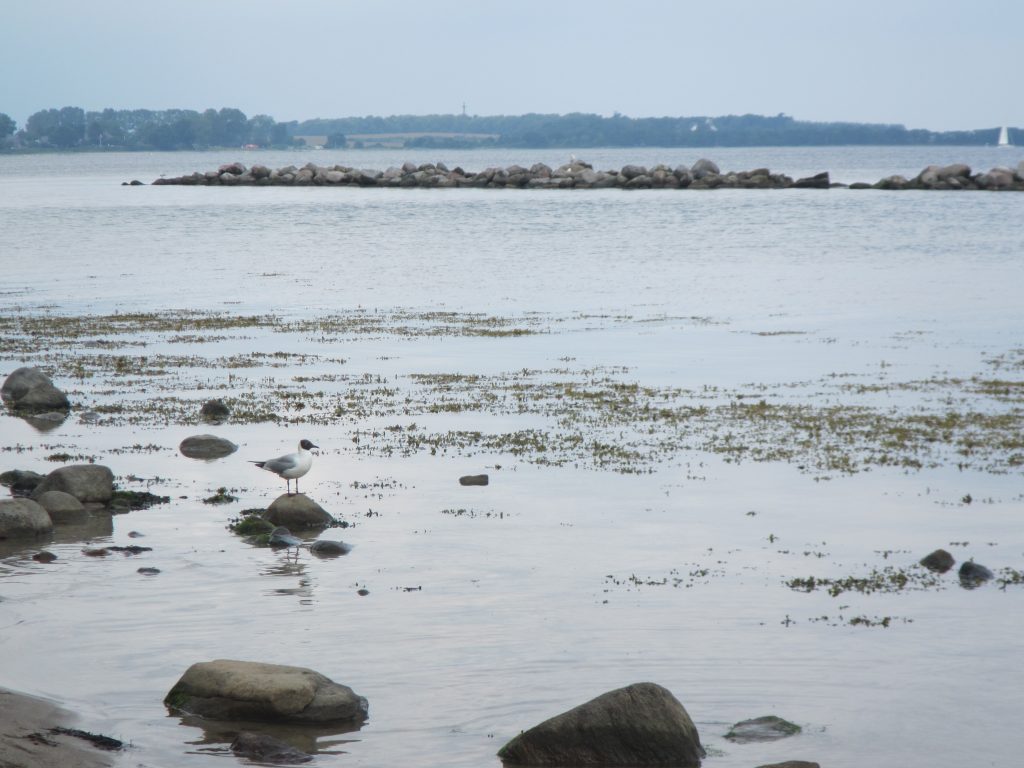
And I know I made the same observation in the same spot last time, too, but I think it’s fascinating how the different directions of the ripples and drift lines and waves all come together.
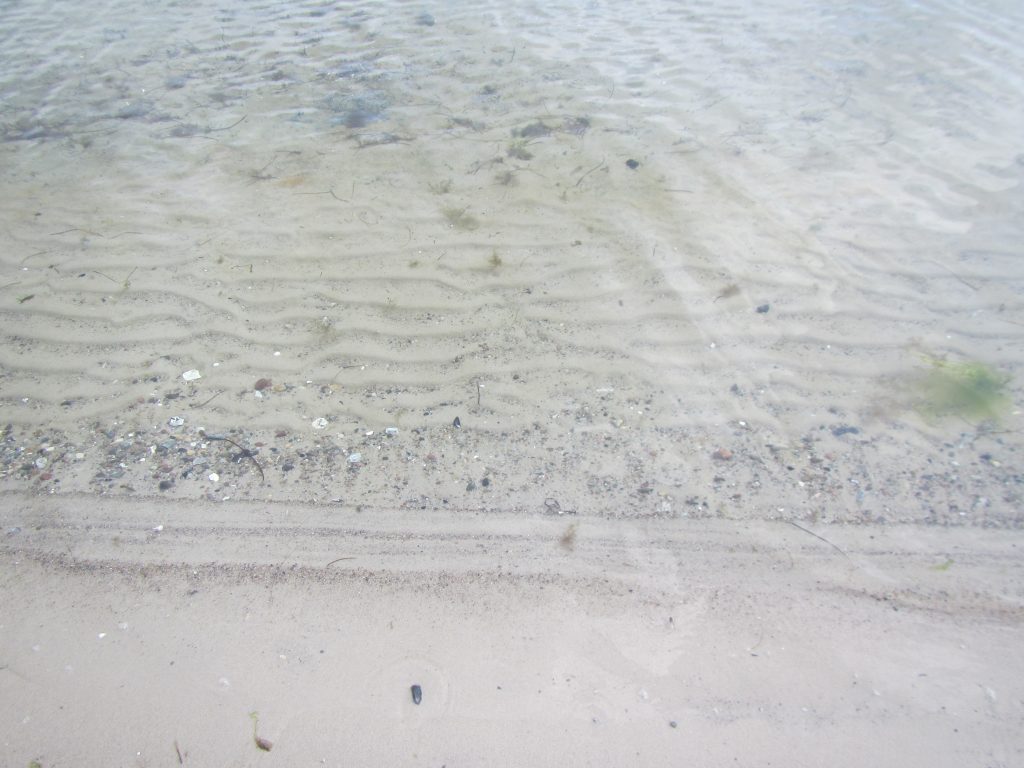
In any case, a nice day at the beach!
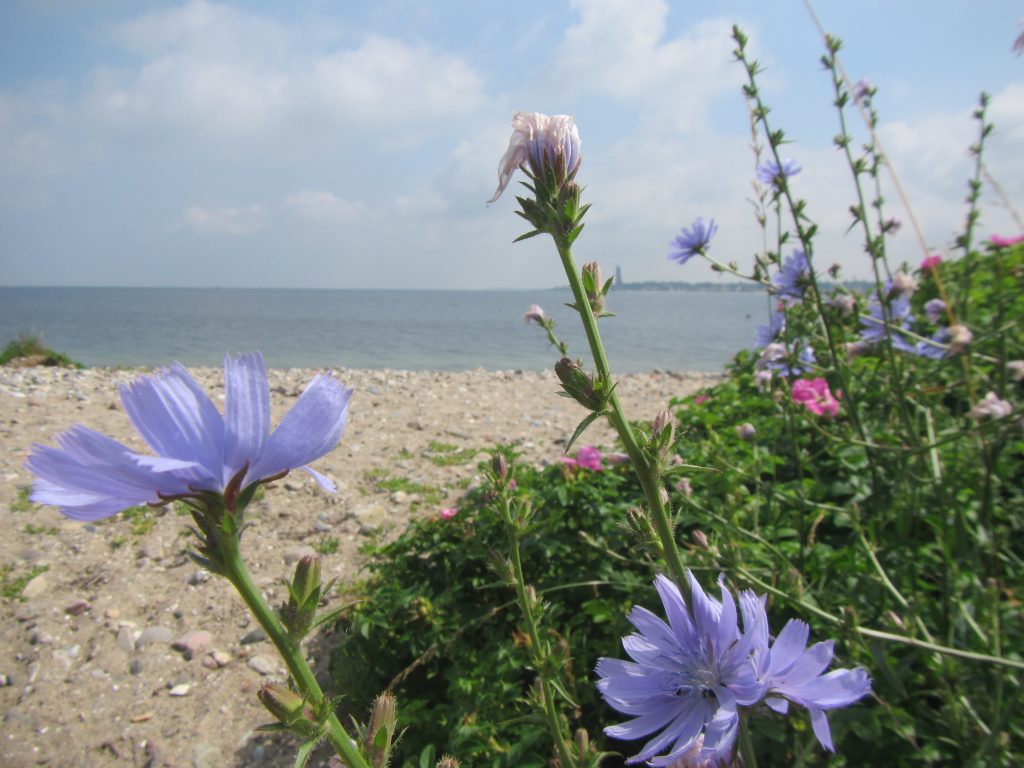
Well, most of the time anyway.
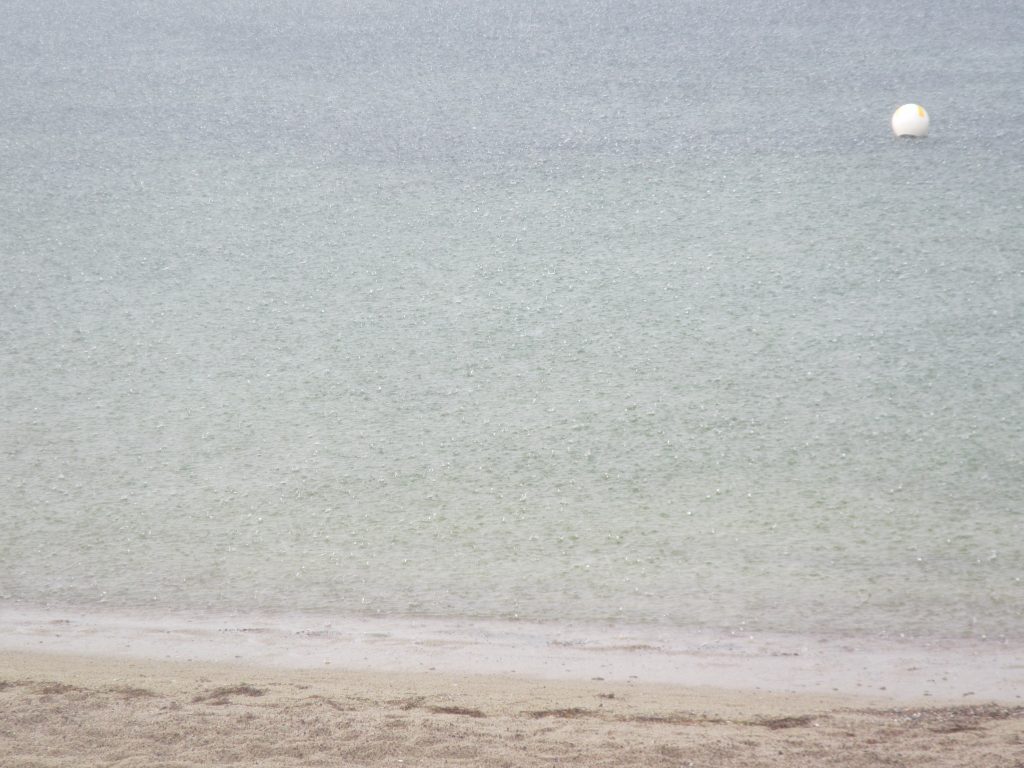
Luckily, we found shelter!
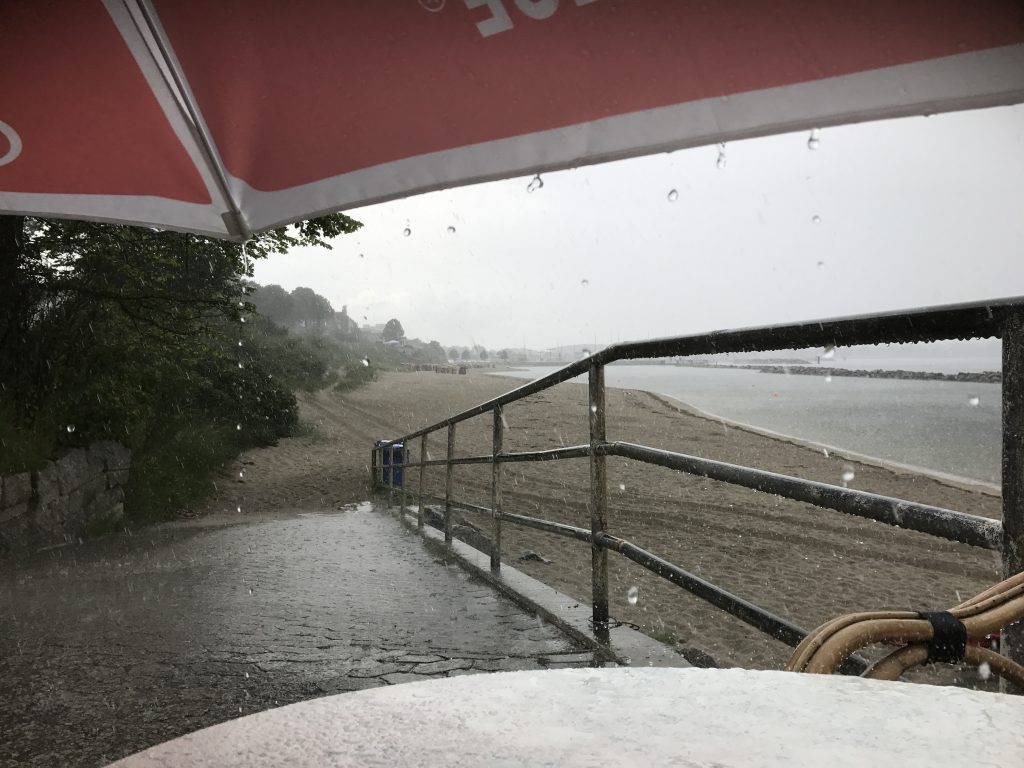
Those, btw, are Annika and Jeannine, who were working with a different group on coastal vegetation.
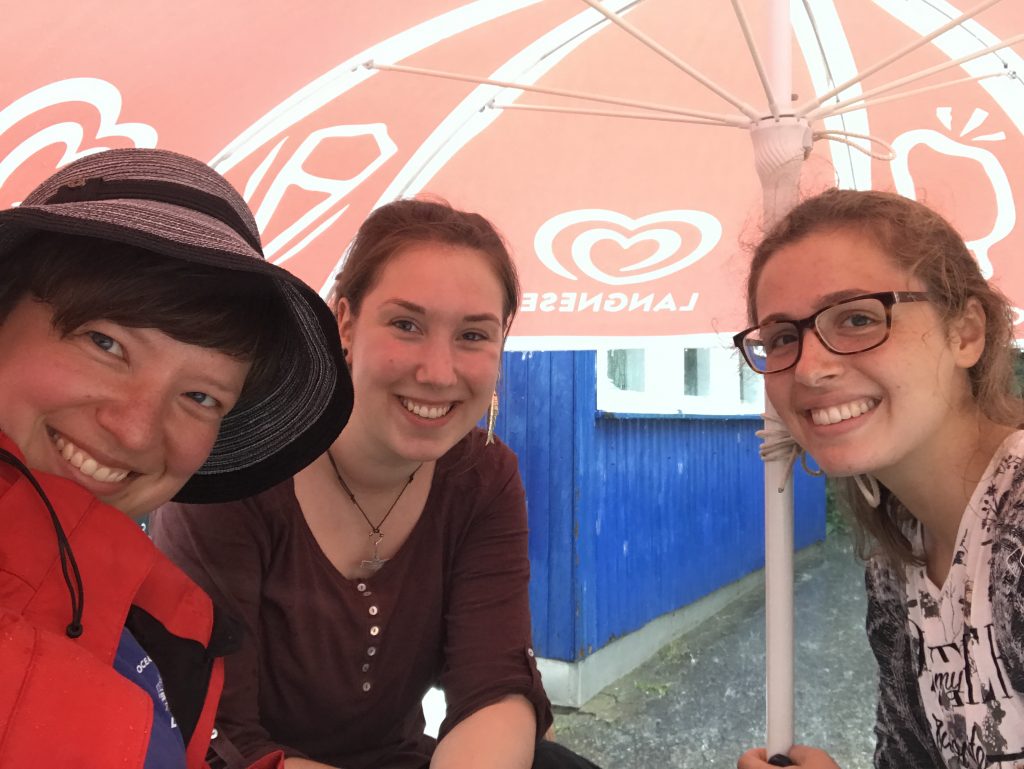
But: New and interesting pattern on the beach once the rain was done!
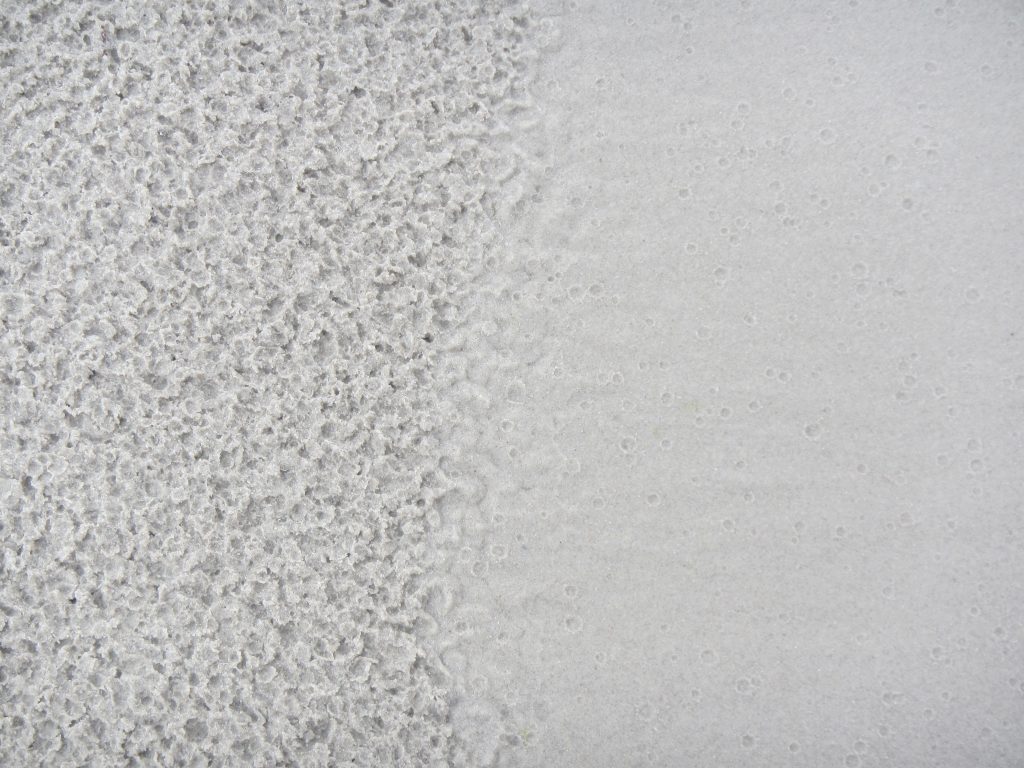
The kids spent the next two days putting all their observations on maps and preparing a presentation, and I am really happy with how it turned out. Of course there is some room for improvement still, but how boring would it be if there wasn’t? ;-) All in all I think it was a pretty successful course!